HYPERAUTOMATION
HYPERAUTOMATION
HYPERAUTOMATION
HYPERAUTOMATION
HYPERAUTOMATION
HYPERAUTOMATION
HYPERAUTOMATION
HYPERAUTOMATION
HYPERAUTOMATION
HYPERAUTOMATION
HYPERAUTOMATION
HYPERAUTOMATION

driving the future of business automation


HYPERAUTOMATION
HYPERAUTOMATION
HYPERAUTOMATION
HYPERAUTOMATION
HYPERAUTOMATION
HYPERAUTOMATION
HYPERAUTOMATION
HYPERAUTOMATION
HYPERAUTOMATION
HYPERAUTOMATION
HYPERAUTOMATION
HYPERAUTOMATION

driving the future of business automation




















































Technology magazine is an established and trusted voice with an engaged and highly targeted audience of 1,000,000 global executives
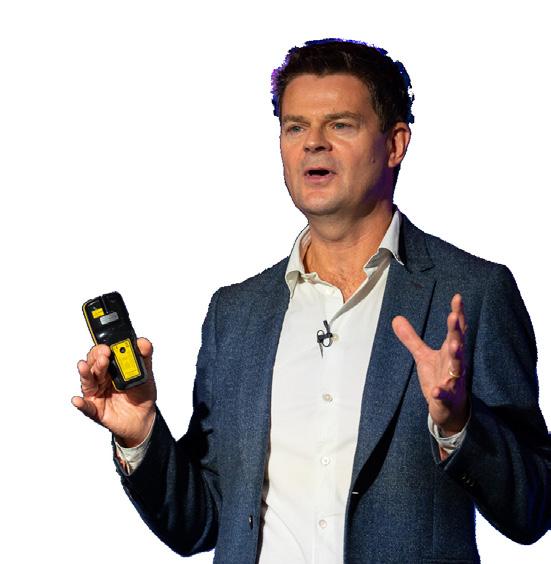









Digital Magazine

Website Newsletters
Industry Data & Demand Generation

Webinars: Creation & Promotion
White Papers & Research Reports
Lists: Top 10s & Top 100s
Events: Virtual & In-Person
WORK WITH US

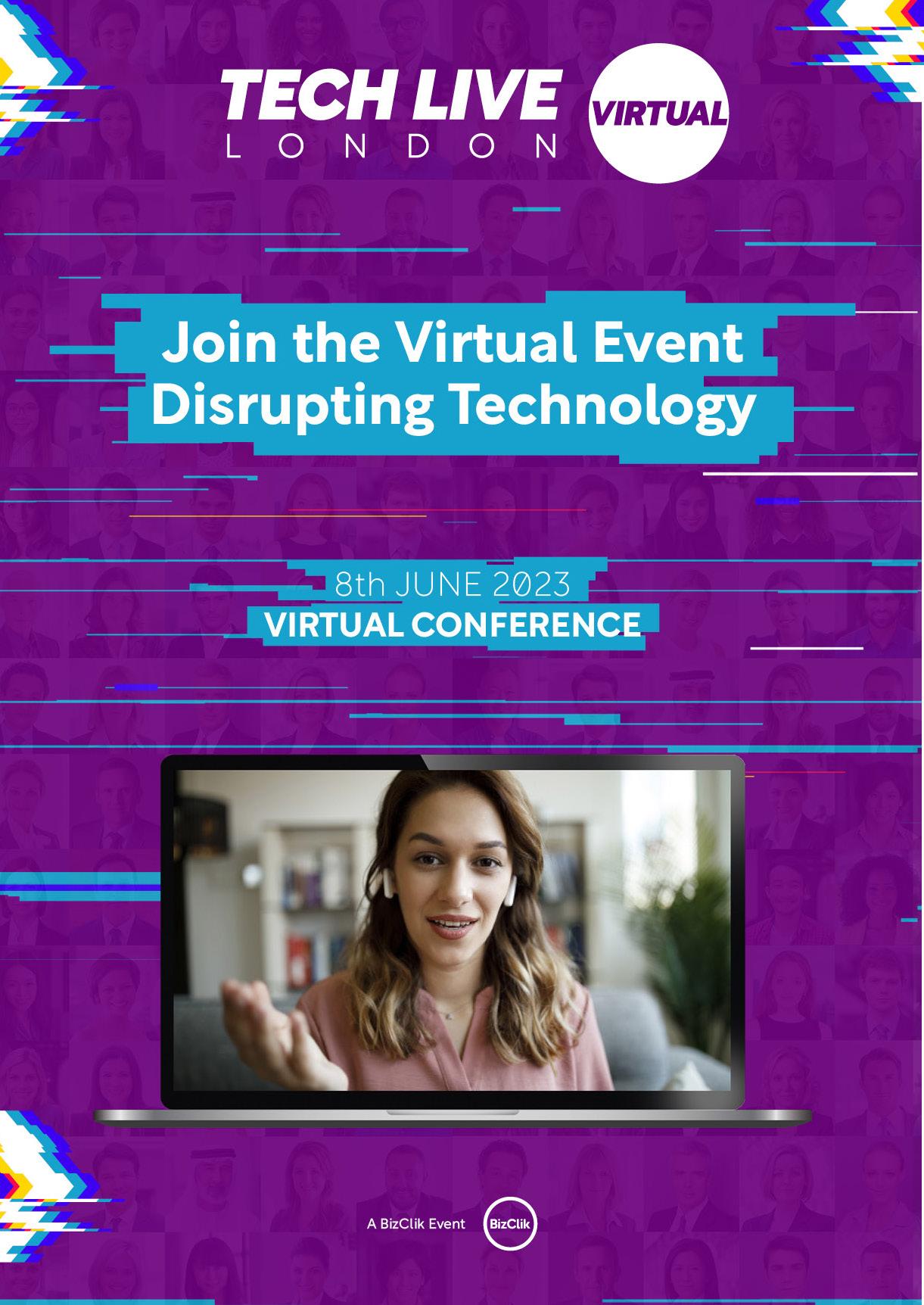



Combining generative AI and hyperautomation will offer numerous possibilities for businesses, enabling them to automate complex tasks and processes
Welcome to June’s edition of Technology Magazine. Reports of the non-stop rise of generative AI are nothing new. While the technology has been growing in recent years, OpenAI’s ChatGPT accelerated its adoption and broke through as the first “mass” generative AI application.
Fast forward to today, and companies are leveraging the technology’s transformative power to unlock new opportunities, drive innovation, and gain a competitive edge.
A term coined by Gartner in 2020, according to robotic process automation (RPA) software company UiPath, hyperautomation brings together several components of process automation, integrating tools and technologies that amplify the ability to automate work.
But how does generative AI fit in? This month we spoke with Boris Krumrey, Global VP of Automation Innovations at UiPath, about the future of hyperautomation and how generative AI could change the landscape going forward.

marcus.law@bizclikmedia.com

MARCUS LAW
“From redefining customer experiences to optimising operations, today, companies are leveraging the technology’s transformative power to unlock new opportunities, drive innovation, and gain a competitive edge”

014 BIG PICTURE Counting birds? It isn’t all black and white
016 FIVE MINS WITH Tami Erwin former CEO, Verizon


020 LIFE TIME ACHIEVEMENT Abhijit Dubey Global CEO NTT Ltd

FEATURES
026 HYPERAUTOMATION

Generative AI set to enable a hyperautomated future

036 DATABANK
Fuelling tech growth by taking data to the edge
054 ENTERPRISE IT
IT procurement teams rely on manual processes in digital age

062 THE ROYAL MINT
Inside the technology function of Britain’s coin maker
080 DATA & ANALYTICS
Embedded analytics key to gaining insights from data



158 MICROSOFT
Microsoft empowering manufacturing firms to accelerate supply chain innovation
172 PINTEREST
How data engineering is powering Pinterest’s global platform

188 VODAFONE AUTOMOTIVE
Connected mobility builds safety into road infrastructure
202 EVIDEN
The €5bn startup helping clients accelerate digital transformation
218 QTS
The future of sustainable data centres


230 SAILPOINT
Leveraging procurement to shape the future
244 APOLLO IBOTT 1971
Preparing insurance for the future of autonomous vehicles




Jamie Cairns, Chief Strategy Officer at Fluent Commerce, on how its order management platform enhances operational efficiency and customer experience.
Fluent Commerce is a global software company focused on distributed order management. Its cloud-native platform, Fluent Order Management, provides accurate and near real-time inventory data visibility, order orchestration, fulfilment optimisation, instore pick and pack, customer service, and reporting to transform fulfilment into a competitive advantage.

As Jamie Cairns, Chief Strategy Officer at Fluent Commerce explains, the process of managing orders begins with inventory data. “Being able to unify a view of inventory and then syndicating that inventory data out across a range of different channels lets you improve the customer experience,” Cairns comments.
That, in turn, has a range of different operational efficiency benefits, reducing costs by reducing split shipments, cancelled orders, and customer service calls.
As Cairns describes, order management represents an opportunity for retailers and B2B organisations to harness inventory data to provide real-world benefits. One of their recent innovations, Fluent Big Inventory, is about unifying in near real-time those inventory sources, enabling all systems to become inventory aware.
“It is not just about enhancing the order fulfilment process, which is typically what has been the domain of an order management system,” Cairns explains. “It’s about making inventory data available to other systems, like search, as well and ultimately being able to personalise search results based on inventory.” With changing customer preferences in recent years,
brands have had to adapt quickly. As Cairns explains, Fluent Order Management not only provides a robust software-as-a-service platform, but at a lower total cost so businesses can move quickly and meet customer expectations efficiently.
During the COVID-19 pandemic when stores were closed, Fluent Order Management enabled businesses to adapt quickly. “Stores still had inventory and there were huge spikes in online demand,” Cairns explains. “Our customers were able to adapt in a matter of a day to completely change their fulfilment workflows.
“Digital agility is essential,” he concludes. “We are not trying to predict what the future is, but to provide a toolset that allows you to adapt as the future evolves.”
Wind farm developer and operator SSE Renewables is trialling a new way of counting the 80,000 puffins on Scotland’s Isle of May using AI, machine learning, and image recognition technology.




Tami Erwin shares some of the phenomenal change she has witnessed in the technology industry during the course of her 35-year career
TITLE: FORMER CEO
COMPANY: VERIZON INDUSTRY: IT SERVICES
LOCATION: COLORADO, US
Tami Erwin began her career in Seattle as a Customer Service representative. At that time, she had planned to work in the role while deciding her next steps but ended up pursuing a 35-year career in the wireless industry. When Tami joined Verizon, it took her six weeks to see her first phone – a bulky, analogue device. “I remember making my first call,” she laughs, “it was scratchy, like driving a stick shift.”
Tami recently concluded her tenure as Verizon’s CEO, where she served clients in 150 countries, managed employees in 50 counties, and oversaw US$32bn in operating profit and loss.

INSPIRED YOU TO PURSUE A CAREER IN THE TECHNOLOGY INDUSTRY, SPECIFICALLY VERIZON.
» I’d love to tell you that I was inspired and I had a very intentional plan, but it was really just good luck, curiosity and a lot of hard work. I’d moved back from Silicon Valley and was looking for a role. Wireless was brand new, so somebody said, “Hey, why don’t you interview for this job?”. At that point, people were saying wireless was never going to take off, after all, who was going to carry a phone around with them?
But I ended up working for an incredible woman, who inspired me to believe I could achieve anything I set my mind to. As I grew up in this business of telecommunications – now technology – I watched how it changed the way we all live, work, and play. It exposed me to leading and managing large teams while being able to provide tools and resources to help others succeed.
15-20% The Women of the World programme saw a 15-20% improvement in women in the sales’ environment
45-50% 45-50% of the world's internet traffic travels on Verizon's IP

“I’ve had great mentors and sponsors, but I've also seen the struggle that so many women face”
» There have really been so many changes. For example, the journey from analogue to 5G now, and, of course, we’re working on the development of 6G. There’s also the integration of satellite communications beginning to come in and fill the gap to ensure we’re able to be always connected – specifically relevant for rural communities and developing countries.
I’ve also seen a really interesting cultural transition in that 35-year period. The industry is much more focused on DEI and how we make
sure that there’s respect for every age, race, and gender. Although there’s still a lot of work to be done, we have experienced significant change.
» In many ways, I’ve had incredible support as a female. I’ve had great mentors and sponsors, but I’ve also seen the struggle that so many women face – for example, not having the same opportunity that their male colleagues have. It tends to be that women progress to a place where they achieve a certain role, but it takes them longer because they have had to work harder and prove they’re capable – as opposed to male colleagues, who often just need to demonstrate the potential of being capable.
As we find ourselves having deeper conversations around what’s involved in scaling for women and people of colour, we’re finding we all must be active about driving change. I also believe that this is not a women’s issue; this is a leadership and economic issue that we’re all responsible for resolving. So, we need to stop talking about the problem and lean into actions to scale the opportunity for equity and equality.
» After digging into DEI data, I decided to create a programme called Women of Wireless, which yielded incredible results. I helped women build their confidence and personal brands while encouraging them to take sales jobs, so that they could enjoy the compensation opportunities.
“Tech is changing the world as we know it, so it’s incredibly important that we diversify the space”
This ultimately transitioned Women of the World, where we saw 15-20% improvement in women in the sales environment. To me, this just goes to show that we can’t just admire the problem – we’ve got to act. Tech is changing the world as we know it, so it’s super important that we diversify the space. If not, we’ll see chatbots that are biassed and technology that works better for men than for women, just to start. But diversification goes beyond gender – we also need to consider age and race, for example, so with this in mind, it’s paramount to close the digital divide.

» After leaving Horizon, I committed to taking six months to do nothing – but I’m not really a ‘do nothing’ person. I've
had a lot of really interesting exploratory conversations with people about my next steps, but I am looking to broaden my board member portfolio and currently take great pride in my position on the John Deere board. I’m very proud of the company as they’re doing incredible work using technology to transform the yield of our food source, which is so important in a food-insecure world. I’ve joined Aptiv as an advisor on their tech and strategy council, which is very exciting as they’re exploring how to transform gas-managed vehicles into electric vehicles. I’ve also joined the York Space Systems’ board to assess how we can accelerate satellite communications to fill that layer cake as we think about connecting the world anywhere, anytime. In the future, I may even look to take on a different CEO role!

Abhijit Dubey is Global Chief Executive Officer for NTT Ltd, a member of the Board of Directors for NTT Ltd, and a member on the advisory board of NTT Venture Capital.
At McKinsey & Company – where he was Senior Partner and core leader of the Global Tech, Media and Telecom Practice – Dubey advised technology companies for over 20 years on a range of topics, including strategy, go-to-market transformation, product and software development, operations excellence, organisational effectiveness, M&A, and post-merger integration.
Founding McKinsey’s cloud practice in 2004, Dubey led the North America Software sector for several years and co-founded its internal venture organisation, chartered with transforming McKinsey into an assetbased consulting firm.
As Dubey described in an interview with Technology Magazine, there are a number of changes in management styles between the fast-moving, Silicon Valley-style approach and the characteristics of an organisation with a more traditional structure, like NTT Ltd.
“My experience has been that both styles are far more powerful when they coexist,” he explains. “In Silicon Valley, there is a mindset to move fast, to be disruptive, and to take risks. The overwhelming focus is on intellectual
property differentiation or product or technology differentiation. And, by virtue of that, a lot of the talent is more logicdriven. So it’s more about winning the minds of the people.
“If you switch over to a very traditional Japanese company – even though NTT Ltd is a global company with global leadership and employees – there are differences. Because they take a very long-term and patient perspective, there is less risk-taking. Instead of focusing purely on technology or superiority, there is a real focus on quality and quality of delivery.
ABHIJIT DUBEY
TITLE: GLOBAL CEO
COMPANY: NTT LTD
INDUSTRY: IT SERVICES
LOCATION: UK
Global CEO for NTT Ltd
Abhijit Dubey joined the company in 2021 from McKinsey & Company.
At McKinsey, Abhijit advised technology companies for over 20 years on a range of topics. He founded McKinsey’s cloud practice in 2004 and led the North America Software sector for several years.
Abhijit Dubey, Global CEO at NTT Ltd, speaks about his 20-year journey from career consultant to being tasked with expanding NTT’s business


“Instead of winning just minds,” he says, “I think there’s a lot of focus on winning the hearts and minds of people. We still move very fast, but we always keep the long-term perspective in mind, which means any change that we’re doing is not just about what will give us the benefit in the next couple of years, but actually about building a much more sustainable institution in the future.”
As Dubey explains, this approach still involves taking risks when necessary. “We are actually quite bold in our aspiration,” he asserts, “but we’re also patient to see those bets take time to mature and take fruit.

“One of the things that happens when you move very fast is you make bets, you wash them, and if it doesn’t work out in a year or two, you move on and get on to the next stage. Here – because there is this more long-term focus on things and more patient focus – you can actually take bets and you can actually be patient to better return.
“The last piece – probably the most important and something a lot of companies now talk about – is composed of your stakeholders, who are not just
your shareholders anymore. You’ve got a much broader set of stakeholders. And while that’s becoming more and more prevalent in corporate America and globally, the reality is that corporate Japan has always, always operated that way. It’s always been about stakeholders, not just about shareholders. It’s always been about what a company’s role and obligations are in the context of society and the community. That was actually one of the things that really attracted me. In my mind, the two are never at odds.”
NTT’s global IT Services business has been surging over the past decade-anda-half, growing from US$1bn to US$30bn, helping drive transformation and position the business as the global, pre-eminent services company it is today.
“If you look at scale, including the Japan business, the IT services business is about US$30bn, which puts us actually in the top five in the world,” Dubey explains.
“Our aspiration is to be one of the powerhouses in the world. We do have some work to do in terms of driving the awareness of the marketplace, of what we are capable of doing, what this portfolio is, and what the capabilities are.
“We are significantly more diversified geographically,” he explains. “Most of our competitors – almost half the business, potentially more – are in North America. We have an almost equal split between EMEA, North America, and Japan, which is quite significant.
“Obviously, growth is a big priority. Number two is bringing breakthrough innovations. And number three is bringing the global scale and the breadth and depth of capabilities with the local presence at scale that we have.”



Executives from Appian, AWS, and Xebia share their collaborative efforts and excitement about their partnership in low-code, cloud, and sustainability.
Technology is instrumental to achieving next-level capabilities across industries. But organizations that want to operate sustainably must choose technology that lets them adhere to strong environmental, social, and governance principles.


Appian Corporation, a process automation leader, is a critical piece of the digital transformation and sustainability puzzle. The enterprise-grade Appian Low-Code Platform is built to simplify today’s complex business processes, with process mining, workflow, and automation capabilities.
“By quickly building apps that streamline and automate workflows, organizations are using Appian to make their processes for monitoring and reporting on ESG initiatives faster, simpler, and more effective,” says Meryl Gibbs, Emerging Industries Leader at Appian.
“Both AWS and Appcino are amazing partners of ours,” says Michael Heffner, VP Solutions and Industry Go To Market at Appian. “We have an extremely long legacy engagement with AWS as our trusted, go-to-market partner and Appcino builds “meaningful, business-focused applications on the Appian platform and is amazing in all things ESG.”
As an AWS leader enabling sustainability solutions built on the cloud, Mary Wilson, Global Sustainability Lead at AWS, talks about the partnership with Appian.
“Our objective is to help our customers achieve sustainability goals across their business operations,” says Wilson. “[This means] looking at data availability, meaning access to more data, and enabling actionable insights. “Lowcode, cloud-enabled, technologies will allow organizations to build fast, learn fast, iterate, and continue to improve these insights to drive their sustainability outcomes.”
Tarun Khatri, Co-Founder & Executive Director of Appcino (product part of Xebia), explains just how critical ESG is in the face of digital transformation. “The investment community now considers ESG reporting as a major factor for measuring performance,” says Khatri The collaboration will continually uncover new insights and provides customers the opportunity to accelerate their ESG goals with speed and security.
HYPERAUTOMATION
HYPERAUTOMATION
HYPERAUTOMATION
HYPERAUTOMATION
HYPERAUTOMATION
HYPERAUTOMATION
HYPERAUTOMATION
HYPERAUTOMATION
HYPERAUTOMATION
HYPERAUTOMATION
HYPERAUTOMATION
HYPERAUTOMATION


Combining generative AI and hyperautomation will offer numerous possibilities for businesses, enabling them to automate complex tasks and processes
WRITTEN BY: MARCUS LAWHYPERAUTOMATION
HYPERAUTOMATION
HYPERAUTOMATION
HYPERAUTOMATION
HYPERAUTOMATION
HYPERAUTOMATION
HYPERAUTOMATION
HYPERAUTOMATION
HYPERAUTOMATION
HYPERAUTOMATION
HYPERAUTOMATION
HYPERAUTOMATION
AI automation
Aterm coined by Gartner in 2020, hyperautomation is a disciplined, business-driven approach that organisations use to rapidly identify, vet, and automate as many business and IT processes as possible. According to robotic process automation (RPA) software company UiPath, hyperautomation brings together several components of process automation, integrating tools and technologies that amplify the ability to automate work.
“It starts with RPA at its core, expanding automation capability with artificial intelligence (AI), process mining, analytics, and other advanced tools,” UiPath explains. “The idea is to automate more and more knowledge work, and engage everyone in an organisation to be part of the transformation.”
According to research by McKinsey and Company, however, 69% of enterprises are yet to implement any process automation. “Businesses should be focused on delivering a better experience for customers and on innovating, not using their teams to process repetitive tasks that are full of errors,” states a 2023 report on hyperautomation by Activant Research.


Technology Magazine spoke with Boris Krumrey, Global VP of Automation Innovations at UiPath, about the future of hyperautomation and how generative AI could change the landscape going forward.
As Krumrey describes, AI-powered automation is taking the technology to a whole new level: “First, there’s the scope of what the technology can do. Automation typically refers to the use of technology to perform manual or repetitive tasks. In contrast, AI-powered enterprise
BlackBerry prevents DarkSide, NOBELIUM and REvil attacks with security powered by Cylance ® AI
 TWITTER FACEBOOK INSTAGRAM YOUTUBE
TWITTER FACEBOOK INSTAGRAM YOUTUBE
automation is an end-to-end solution that combines various advanced technologies –including AI and ML – to automate complex business processes.
“While automation may only involve a single technology such as RPA, AI-powered
automation integrates, alongside RPA, several other components such as AI, machine learning, process mining, data analytics, and natural language processing, among others.”
As Ipsos describes, while the domain of Generative AI has been growing in recent years, OpenAI’s ChatGPT accelerated its adoption and broke through as the first “mass” Generative AI application.

From redefining customer experiences to optimising operations, today, companies are leveraging the technology’s transformative power to unlock new opportunities, drive innovation, and gain a competitive edge.
“The rise of generative AI is a very exciting development in the world

BORIS KRUMREY GLOBAL VP AUTOMATION INNOVATIONS, UIPATH
“The rise of generative AI is a very exciting development in the world of automation, as generative AI and automation working together can unlock revolutionary benefits for businesses”
According to Accenture’s Technology Vision 2023 report, the introduction of automation technologies has the potential to increase productivity by 45%, with a subsequent US$16.3bn in economic impact, by 2028.
of automation, as generative AI and automation can work together to unlock revolutionary benefits for businesses,” Krumrey explains. “There are a number of ways in which generative AI can be used in enterprise automation, with some of the key applications being content generation, natural language processing, and predictive analytics.
“Generative AI can be used to create content for marketing, such as social media posts, product descriptions, and blog articles. This can help businesses scale their content production while




improving the quality and relevance of their messaging.
“Alongside this,” Krumrey adds, “the natural language processing abilities of generative AI can be used to analyse and generate human-like language that is perfect for chatbots and virtual assistants, helping businesses improve customer service and support functions.


“In terms of predictive analytics, businesses can use AI-powered automation to analyse large amounts of data and generate predictive insights that can help businesses make better decisions.

“A lot of testing is required to ensure all the composable applications function in a cohesive way”
BORIS KRUMREY GLOBAL VP AUTOMATION INNOVATIONS, UIPATH
For example, it could be used to predict customer behaviour, identify trends, and optimise supply chain operations.”
UiPath provides a complete end-to-end business automation platform that enables enterprises to scale automation across the organisation quickly. The platform supports every phase of the automation lifecycle, from process discovery and design to implementation and maintenance.
“One of the main benefits of AI-powered enterprise automation is its advanced complexity thanks to the ability to integrate multiple different components into the same workflow,” Krumrey asserts. “The UiPath Business Automation Platform allows our customers to reach the full potential of their automation projects, integrating components such as process mining, task mining, communications mining, idea
capture and management, and other advanced automation tools.
“With a strong arsenal of tools available to them, businesses can unlock the potential of automation by streamlining lengthy workflows, automating content production, and developing reliable support systems. By using UiPath technology, organisations can transform their business operations, drive value, and improve their bottom line.”
As Krumrey predicts, the future of automation with generative AI is very promising. “Using these two technologies together can offer numerous possibilities for businesses to automate complex tasks and processes,” he says. “With the integration of generative AI, automation is expected to become even more intelligent, efficient, and effective in transforming business operations.”

As business automation grows in scale and generative AI continues to develop alongside it, there will be more possibilities for what businesses will be able to create – and rapidly scale – boosting productivity and efficiency. These two technologies working together can empower companies to push the boundaries of innovation.

“As more cloud-native and composable applications become prevalent in 2023, hyperautomation will become a reality,” Krumrey comments. “Composable applications make it easier for businesses to deliver new services assembled from other apps and services very quickly. Shopify is an example of this technology. It’s essentially a service made up of reusable functionalities including APIs,

“One of the main benefits of AI-powered enterprise automation is its advanced complexity thanks to the ability to integrate multiple different components into the same workflow”
BORIS KRUMREY GLOBAL VP AUTOMATION INNOVATIONS, UIPATH





payments and SEO. It has everything required to deliver the full ecommerce experience, created from different parts assembled to make a new digital experience. But a lot of testing is required to ensure all the composable applications function in a cohesive way.”
As these applications become more commonplace, the need for hyperautomation – effectively automating any processes or functionality you can –will increase. “Hyperautomation will enjoy more success with extensive testing and monitoring,” concludes Krumrey. “This is necessary because users will access the application from different points and their expectations of how to use the application will differ. Going forward, automated testing at scale augmented with humandriven testing will be needed to avoid fragmented technology and ensure the quality of the experiences.”




 What is a UiPath Software Robot?
What is a UiPath Software Robot?

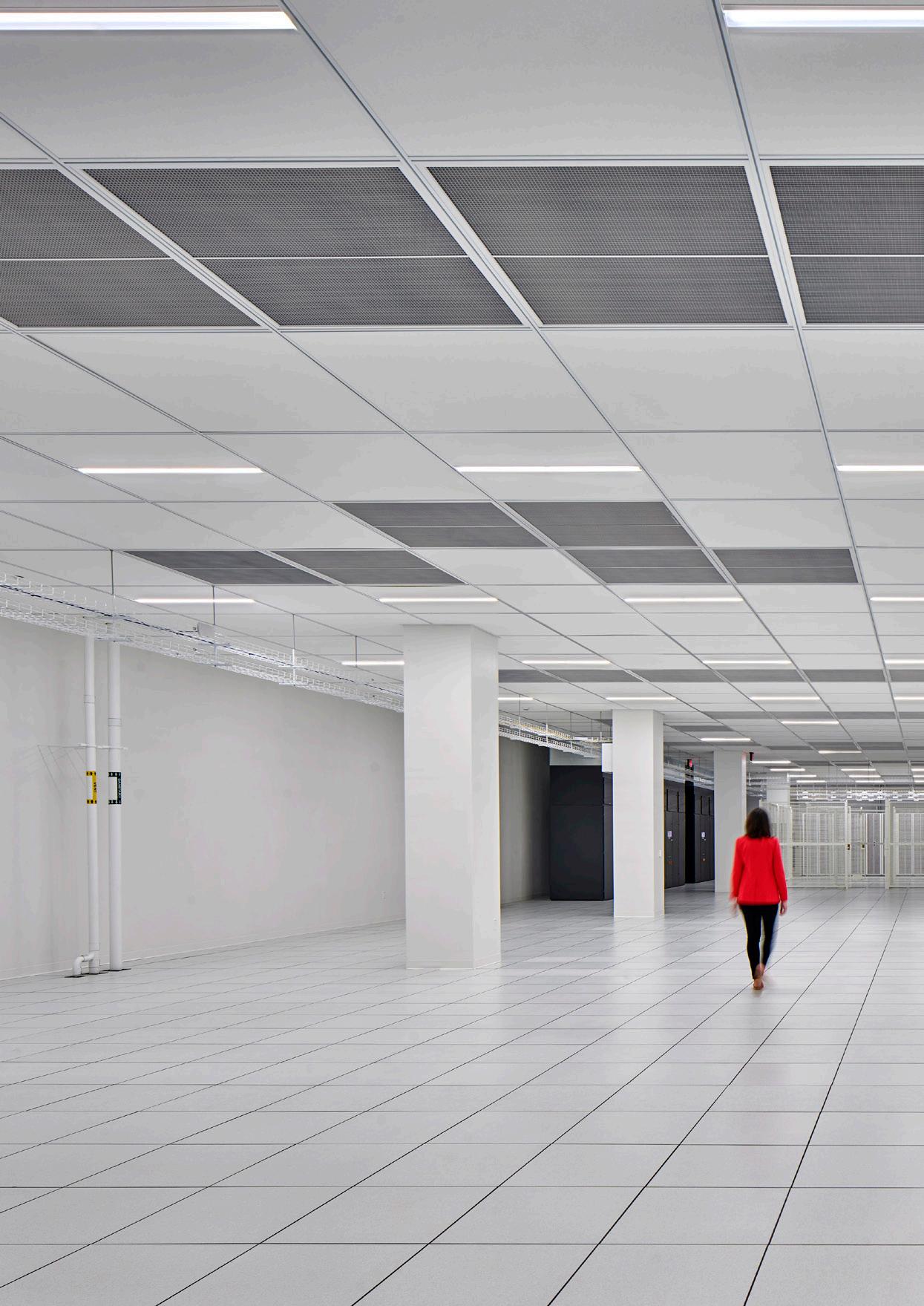
WRITTEN BY:
SEAN
ASHCROFT
PRODUCED BY:
LEWIS
VAUGHAN

It might seem odd that, in a world in which technology companies are laying off workers in their thousands, a company such as DataBank – which helps fuel tech consumption – is continuing to expand at a steady pace.
DataBank's managed data-centre services are anchored in world-class facilities, and the company currently boasts such centres in locations including Dallas, Minneapolis, Kansas City, Cleveland, Pittsburgh, Salt Lake City, and Atlanta –managing or operating major network facilities in each of these regions.
These facilities provide uninterrupted access to customer data, applications and IT equipment. DataBank’s services provide business solutions for corporate enterprises, including hybrid cloud services, customised IT deployments, and industry compliance, to meet the outsourcing needs for IT management, maintenance and operations.
The company serves a wide range of customer verticals, including media and content distribution, cloud infrastructure providers and telecom networks.
DataBank has been expanding its size and reach for years. In September 2017, it acquired cloud hosting company, Edge Hosting, which specialises in designing, operating and simplifying secure and compliant IaaS and PaaS Managed Cloud Hosting. The acquisition provided both market expansion and extra expertise in the delivery of cloud solutions and

Tony Qorri is VP of Construction with DataBank, and explains how the business continues to expand strategically in testing economic times



Today, there’s more than 18 million servers running in more than 2,500 data centers all across the globe to support everything from our global economy to our increasingly remote workforce. As we continue seeing more demand for ecommerce, artificial intelligence, streaming video, virtual reality/augmented reality applications, smart systems, and Big Data analytics, we expect these numbers to climb drastically. This unprecedented demand for digital services has made the case that data centers have become as essential as public utilities such as electricity, gas, and water. Below is an overview of some of those technologies, according to the guide:
Intelligent equipment and new controls enable data center operators to improve the utilization and efficiency of the critical power systems required to achieve high levels of data center availability. One strategy we’re seeing used by organizations is utilizing the overload capacity designed into some UPS systems to handle short and infrequent demand peaks rather than oversizing equipment based on these peaks.
Renewable energy can be a great tool for reducing carbon emissions. Numerous ways to leverage renewable sources include purchase plan agreements, renewable energy certificates, and migrating loads to cloud or colocation facilities committed to carbon-free operation. Some operators are looking at opportunities to power data centers through locally generated renewable power, which can be accomplished by matching renewable energy sources with fuel cells, systems that can produce clean hydrogen from renewable energy, and UPS systems with dynamic grid support capabilities.
For organizations in the initial stages of planning long-term efficiency and sustainability goals, beginning such a journey can be daunting. Fortunately, Vertiv’s guide offers valuable first steps for reducing environmental impact, including:
y Establishing Goals: Data center operators are embracing goals based on the vision of the net zero data center or adopting several of the pillars that make up that vision. According to Vertiv’s guide, a net zero data center typically encompasses:
• Zero losses: Eliminating inefficiencies and maximizing utilization in data center systems.
• Zero carbon: Eliminating carbon emissions from the power consumed by data centers.

• Zero water waste: Eliminating the waste of water for data center operation.
• Zero waste: Eliminating the e-waste created by data center operations.
y Defining Frameworks and Metrics: Emissions will often be the primary target when establishing measurable goals for reducing environmental impact.
The Greenhouse Gas Protocol provides standardized global frameworks that industry organizations and their value chain partners can use to understand, aggregate, quantify, and reduce emissions. Find more metrics and frameworks Online
y Prioritizing Opportunities: Organizations looking to build out their sustainability approach can begin by evaluating existing data center systems and prioritizing opportunities based on goals and available technologies. As plans move forward, operators should continue to prioritize solutions that can achieve desired levels of continuity. Some priorities include increasing asset utilization, decreasing data center water usage, reusing data center heat, and reducing e-waste.
The path toward a more sustainable data center is not paved by a single strategy or piece of technology and implementing these changes will be no easy feat for most organizations. The reduced costs, progress toward corporate goals, limited dependence on utilities, and lessened environmental impact from these initiatives can help create significant long-term value for an organization.
managed services, especially for clientele requiring comprehensive operational controls for a number of commercial and government compliance standards.
Then in September 2020 it acquired zColo’s data centre assets from Zayo Group Holdings, with these located in cities including New York, Los Angeles, Seattle and Denver. The deal means DataBank now offers secure colocation, connectivity, cloud, and managed services in 60 data centres in 28 key markets in the US and UK.
Such structured, strategic growth has put DataBank at the forefront of the edge

“I stick with the same principles in my work as I did in my sports career: keep learning, keep improving”
TONY QORRI VP CONSTRUCTION, DATABANK
infrastructure wave, enabling enterprises, hyperscalers, cloud, content, and software customers to move their mission-critical workloads and platforms closer to end-user populations in second-, third-, and fourthtier markets.
Crucially, these deals have seen DataBank acquire expertise along with infrastructure. One such addition is VP of Construction, Tony Qorri, who joined the company as part of the zColo deal.


So how does Qorri explain DataBank’s growth in the face of a shrinking tech market?
“Tech companies might be cutting their staff, but it's not because people aren’t using technology,” he says. “In fact, people’s
TITLE: VP OF CONSTRUCTION
COMPANY: DATABANK
Tony Qorri joined DataBank as Vice President of Construction in December of 2021 with the responsibility of overall construction efforts on large construction projects as well as customer fit-out projects. Qorri came to Databank as part of the DataBank acquisition of Zayo's colocation division, zColo, where he served as Director of Construction for 7 years. Prior to Qorri's tenure at Zayo, he worked for a General Contracting / Construction Management firm in New York City where he served as Senior Vice President of Operations for 7 Years. Qorri has been in the mission critical industry for 15 years where he has built multiple Enterprise data centers for many of the financial institutions as well as the top 5 colocation companies on a global perspective. His time spent on both the contractor side as well as the end user side makes him a very well-rounded individual that understands all aspects of engineering, building, and operating a data center.


AECOM Tishman is one of the world’s leading builders. With more than 120 years in business, we’ve been responsible for the construction of more than 600 million square feet of space. A part of AECOM, our construction management business line is supported throughout the entire project lifecycle – from planning, design and engineering to program and construction management.

hunger for technology is growing, and data centres are the infrastructure that fuels that.
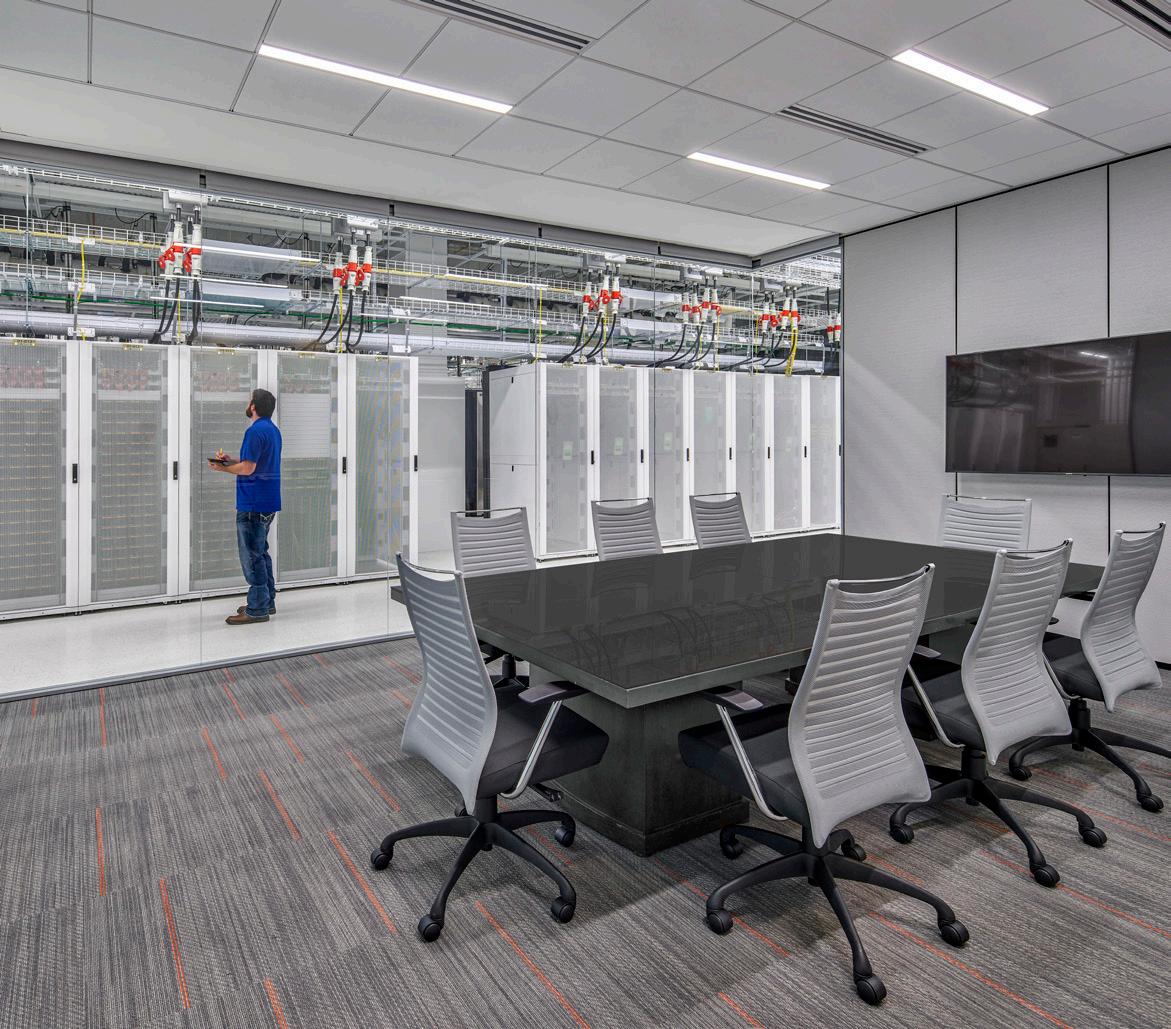
“So whenever you pick up your phone or click on an app you are firing three pieces of infrastructure. The cell tower that's capturing your signal, the fibre through which the signal travels and the data centre, where everything ends up.
“You have to remember our business is about serving customers of tech companies. We go where the customers are.”
And where DataBank always goes is to the ‘edge’, says Qorri.
“You always want to place your data as close as possible to those who use the data. So you are at the edge of the network.
TONY QORRI VP CONSTRUCTION, DATABANK
“We have built scalability into the business by creating a forecast that shows, quarter over quarter, what the market looks like”
And also where land is more affordable, which is why Salt Lake City and Atlanta have become focal points for the company.
“Those locations have been two we've chased pretty aggressively,” says Qorri. “We've got a lot of additional builds throughout the nation, but we've got quite a bit of capital being spent in those markets.”
Qorri’s role is to run and manage DataBank’s expansion and development builds,” including greenfield and brownfield retrofits, and expansions in any of the existing sites”.
He explains: “We've got three models of construction. One is brand-new developments – so a greenfield ground-up building. Second is a brownfield site, where we buy a shell – some type of building, could
have been a distribution centre or an office building – and we retrofit that.

“The third is an existing facility that has maybe one to five data halls. We'll go in and expand that building over the course of time.”
From front-end to back-end, Qorri and his team hires and manages design consultants, contractors and the commissioning firms that ensure the data centres are functional. For good measure, he also runs the procurement arm of the organisation, an area that in recent years has been pivotal to the continued growth of the company.
Just over a year ago, DataBank hired a strategic sourcing manager who works for and closely with Qorri.



“As the construction project management team continued to grow we wanted to take some of the sourcing workload off those guys, because they had challenges of their own,” he says. “Together, we’ve been doing all of the sourcing. We try to forecast at least two years ahead, and we’ve got to continue evolving that because we're still seeing supply issues and challenges.”
Being able to source strategically has allowed DataBank to avoid costly supply chain delays.

“It’s enabled us to quickly deploy and to not lose six months to a year on deliverable timelines, which would've lost us customers,” he says. “We're actually growing quite rapidly. We've scaled over the past few years and I think we're going to continue to
scale over the next few years. Continuing to develop the teams we need has been quite a challenge and will continue to be so, but it’s proved very important.”
DataBank’s growth has been consistent and strategic. It’s been facilitated by smart procurement but also many other factors, says Qorri.
“We have built scalability into the business by creating a forecast that shows, quarter over quarter, what the market looks like, and from this we created a stocking programme.
“We bought everything from transformers to generators, and also downstream. But we didn't want to over-buy, so we were strategic about it, and it’s the best thing we ever did because it has allowed us to grow at a sustainable rate.”
As well as growing its infrastructure, DataBank has been adding to its knowledge base with strategic new hires, including experienced project managers (PMs).


“As we’ve scaled, we’ve taken on more PM,” says Qorri. “This has allowed me to get out of the trenches, because I have been project managing as I was leading a group. As we continue to bring more people on board I can focus more on managing downstream, and helping the organisation grow from a future planning perspective.”
Planning for growth has different drivers in the post-pandemic world, it seems –particularly when it comes to winning new contracts.
TONY QORRI VP CONSTRUCTION, DATABANK
“Taking a project from the front-end to the back-end is a challenge but a hugely rewarding one”
Qorri says: “Back in the day, the most competitive bid was nearly always the winner. Those days have changed a bit. Now it's not always the most competitive bidder, it's the most strategic bidder in specific markets that wins.”

“Strategic often comes down to 'how well you know a given market, and how strong your relationships are with the downstream folks in that market'.

He adds: “This is why I tell my guys to come in not with their client hat on but their partner hat. I ask them to make our partners their friends. People always want to work with their friends, right? Friends are going to have your back and will help you execute.”
Taking a project from the front-end to the back-end – “where we're meeting specific customer needs” – is a challenge, says Qorri, “but a hugely rewarding one”.

TONY QORRI VP CONSTRUCTION, DATABANK
“You always want to place your data as close as possible to those who use the data – at the edge”Highland Associates is an Architectural and Engineering firm focusing on the design of mission critical facilities for Enterprise, Co-Location and Hyperscale clients throughout the United States.

He adds: “It involves supply chain, contractor availability in certain markets and taking a task from A to Z in a very tight timeframe and bringing it in on time and on budget.
“Myself, my team, the organisation, we get a rush out of that. There are competitors that are able to do it but there are also a lot of folks who are not able to accomplish this, and it day-in, day-out – especially over the past few years, with the pandemic and multiple supply chain constraints – is a major achievement.”
He reveals that, post-pandemic, “we’ve had to micromanage down to a level that was not needed before”, and that there is another big difference to the way his team operates.
“The customer is not always right any more,” he says. “Instead of demanding something and getting it, we now have to work more as partners – with our vendors, contractors and subcontractors.”
And, of course, there are other changes and challenges in expanding a business in a post-pandemic world, not least of which is labour problems, Qorri explains.
“There's not enough workers to cater to all the projects going on. Bringing in the right subcontractors to build-out a facility is a challenge. Unlike in warehouse environments, automation is not an option. You need physical labour. Technology is advanced – you need guys in the trenches to be able to execute.”
But whatever the challenges that DataBank faces, it does not face them alone; its ecosystem of partners is crucially important, says Qorri.
“DataBank has a slew of different partners,” he says. “We've got vendors that
we partner with from both thermal and power sides. Vertiv and Powersmiths are very strong partners of ours on the power side, and Toshiba and Cummins with regards to support on the generators and UPS side.”
Hitachi is another “huge partner of ours”, from a transformation perspective, says Qorri.
"Our most strategic partners are our general contracting partners. HITT in Northern Virginia, Tishman in New York, Layton in the Southwest, and Brassfield and Gorrie in the Atlanta market.”

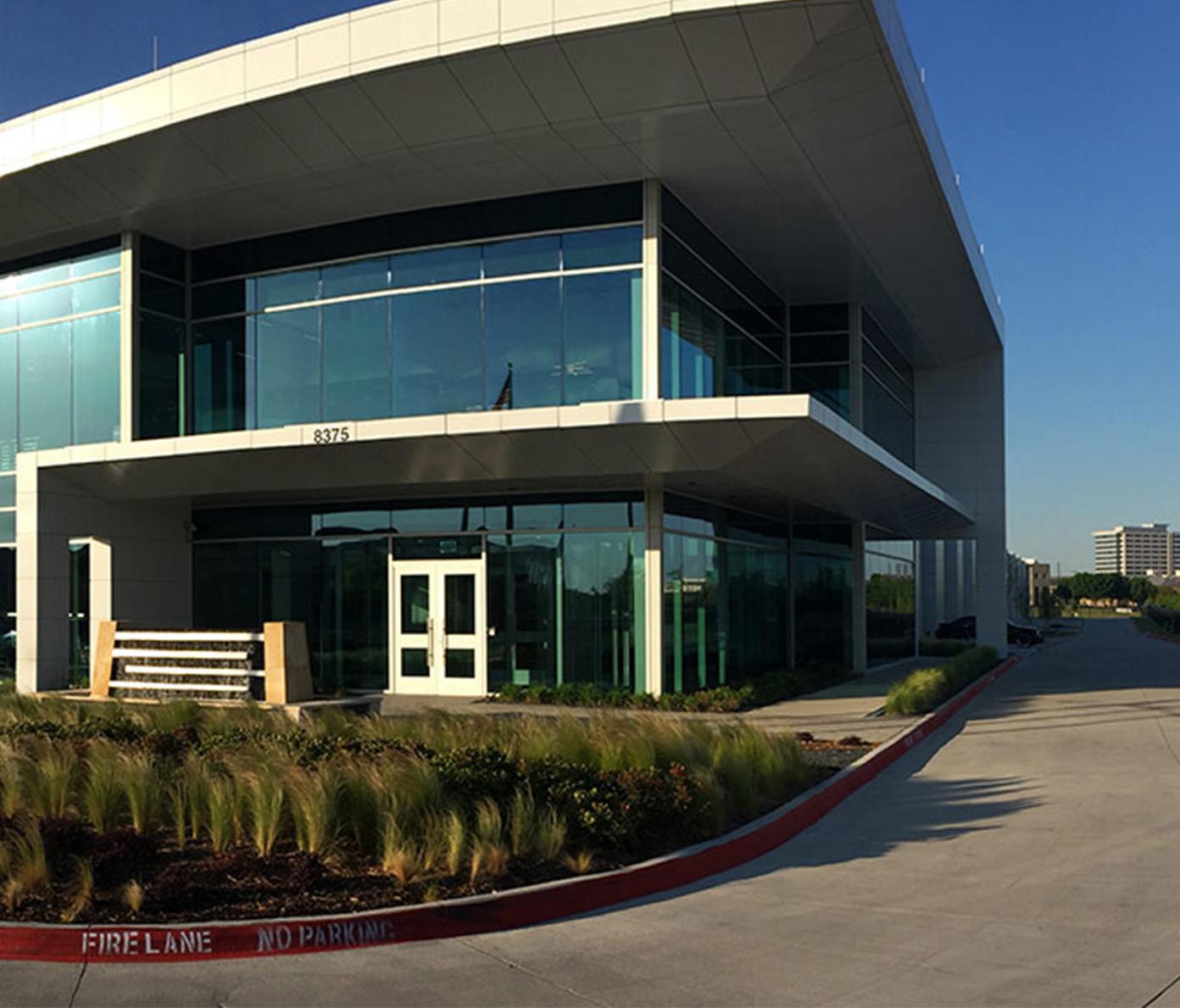

With few organisations making headway when it comes to digitalisation of their procurement systems, it’s essential for IT buyers to avoid being left behind
WRITTEN BY: MARCUS LAWAll businesses have been affected by the political, economic and social disruptions of recent years. From Brexit to the pandemic, seismic global events have tested the operational resilience of organisations, their workforces and supply chains.
Procurement, in particular, has been hard hit by a series of unprecedented challenges – from production delays and logistical log jams to inflationary pressures and exchange rate fluctuations. This volatile climate has left IT buyers in need of solutions that can help them navigate choppy waters.
As explained by Hewlett Packard Enterprise, IT procurement is a group of processes for the purchase and implementation of IT in accordance with organisation strategy. An organisation that uses IT must have a way to procure the IT products and services it needs to operate.

“Procuring IT is – or should be – about more than just buying IT products and services,” explains HPE. “IT procurement serves a vital role in the realisation of strategic and operational goals. Given the centrality of IT to business success and overall transformation, IT procurement should engage key stakeholders from business, finance, and IT itself. The process has to identify what IT can serve the business and then follow through with the best possible IT investment decisions.”
To navigate these challenges, digital procurement systems are providing organisations with answers.
But as Ian Nethercot, a supply chain director at IT procurement company Probrand, explains, a study by the company has found that very few organisations are making headway when it comes to digitalisation.


educators. Empowering students. Explore how we accelerate student discovery, learning and innovation with our Digital Education 3D Experience.

“Research produced by Probrand, in collaboration with CIPS, has revealed that fewer than one in five (18%) believe they have reached a point of full digitalisation,” he says. “Furthermore, 28% say they are yet to make plans to move in this direction.”
Probrand’s study revealed that most IT buyers feel held back by a lack of digitalisation – with almost two-thirds (63%) still relying on manual systems to complete standard tasks, such as placing orders.
“The results also showed that a quarter are spending the equivalent of one day each week just researching IT purchases – this includes comparing equipment specifications, checking prices and stock availability,” Nethercot adds. “Liaising with suppliers during the ordering process was also revealed as a huge drain on buyers’ time – with 71% saying they spend a significant amount of time emailing and 70% saying the same effort was being spent on calls.”
But these weren’t the only duties taking up a lot of time.
“The vast majority,” Nethercot explains, “said they were also burdened by tasks such as tracking orders, checking prices and stock,
processing orders, and chasing returns and errors. Even straightforward tasks, like raising a PO number, are taking three days or more for most buyers – almost a fifth said this was taking longer than a week.
“Standing still on digitalisation will undoubtedly leave businesses at a competitive disadvantage. Bogged down by unnecessary admin, a lack of access to live data is leaving buyers struggling to buy at the best times and gain value from every purchase. As a result, they also have less time to spend building strategic relationships with the suppliers that can help them better meet the needs of their organisation,” he comments. “So why are procurement professionals still working in this manual way?”
“Fewer than one in five organisations believe they have reached a point of full digitalisation”
IAN NETHERCOT SUPPLY CHAIN DIRECTOR,
According to Paltron, the digitalisation of procurement is often treated as a poor relation –omnipresent areas such as sales, marketing or IT security draw all the attention.
“Although the primary focus on these areas is justified at the beginning, procurement is another crucial component that holds a real treasure for companies: a large set of existing data as well as additional connections to many internal and external departments and areas,” the company says. “In particular, the connection to suppliers and stakeholders as well as the entire supply chain.”

As part of its study, Probrand asked IT buyers what their biggest obstacles to digitalisation are. Almost two-thirds listed ‘budget’ as a problem, while other issues included dealing with ‘legacy systems’ and ‘winning the support of management’.
“Interestingly,” Nethercot adds, “more than one in ten (12%) listed being ‘unsure how to write a business case for digitalisation’ as a challenge. Given that digital transformation in procurement shouldn’t incur major costs and typically delivers a significant return on investment (ROI), this is an issue that needs addressing.
“What was clear from the research, however, was that there is a desire among procurement professionals to achieve digitalisation – with 74% saying they are
Procurement digitalisation often seen as ‘poor relation’
either working on their digital transformation plans, are part way through implementing it or are looking to move in this direction.”
What’s clear is that, given time, digitalisation will become the norm. That must be a concern for those organisations not currently taking steps in this direction.
“When it comes to recruiting and retaining the best procurement talent, a failure to digitalise will impact an organisation’s ability to find and keep the best people,” Nethercot asserts. “This will affect the quality of the workforce and impact long-term business performance.
What’s more, as we continue to experience a period of global uncertainty and sustained periods of supply chain disruption, organisations will need tools in place to manage their suppliers.
“When it comes to recruiting and retaining the best procurement talent, a failure to digitalise will impact an organisation’s ability to find and keep the best people”
IAN NETHERCOT SUPPLY CHAIN DIRECTOR, PROBRAND
By empowering procurement teams with the technology and data, organisations can better manage risk by making informed purchasing decisions.
“A failure to digitalise procurement processes will ultimately hurt the overall businesses in several other ways too –through higher costs, slower deployment of equipment, employee dissatisfaction and a competitive disadvantage.”
As Nethercot describes, it is concerning, therefore, that almost a quarter are still not moving in this direction. Especially, when it is possible to do this without heavy investment.
“For example, by working with suppliers that offer live supply chain data, procurement teams can gain ready access to the information they need to make smart decisions and buy at the best times. By integrating these information streams within their own systems, they can also start to enable digital workflow and approval systems that will allow them to act faster.
“None of the barriers to digitalisation are insurmountable, yet four out of five organisations still say they are yet to fully do so,” Nethercot concludes. “Those who have a clear vision and are putting plans in place will get there sooner, however – and they will enable their organisation to act more efficiently and effectively in the process.”
isn’t Enough
“None of the barriers to digitalisation are insurmountable, yet four out of five organisations still say they are yet to fully do so”
IAN NETHERCOT SUPPLY CHAIN DIRECTOR, PROBRAND

 WRITTEN BY: TOM CHAPMAN
PRODUCED BY: KRISTOFER PALMER
WRITTEN BY: TOM CHAPMAN
PRODUCED BY: KRISTOFER PALMER


The Royal Mint is a company that needs little introduction, at least not to the majority of the Great British public, coin collectors, or those interested in the Royal Family.
Founded more than 1,100 years ago in around 886 AD, the Mint – as it’s colloquially known – is one of the UK’s oldest brands and remains the official maker of British coins. It’s also billed as the home of precious metals (think gold bullion bars) and recently launched a luxury jewellery collection called 886 by The Royal Mint.

That’s without mentioning the illustrious commemorative coins side of the business, which continues to thrive, and the iconic Olympic medals it created for London 2012. It will come as no surprise, however, that The Royal Mint has had to digitally adapt to rapidly-evolving societal norms and technological advances.
Much of that responsibility has fallen to Richard Hobbs, Group IT Director of The Royal Mint, who joined just before the pandemic in early 2020. Hobbs has been spearheading The Royal Mint’s technology transformation and implementing a five-year strategy that supports the organisation as it diversifies –which, he believes, is on the right track.
“We’re transforming from a traditional manufacturer into a modern, digital-oriented organisation,” says Hobbs. “And over the last five years or so, we’ve been very successful in our commercial diversification but also in introducing new technology into the business.”

Like all forward-thinking manufacturing businesses, The Royal Mint has come to recognise the undeniable importance of sustainability and, with that, is factoring sustainable practices into its everyday operations.
Later this year, The Royal Mint is opening a plant to recover precious metals from electronic waste. Once up and running, the precious metals’ recovery site is expected to process 90 tonnes of UK-sourced e-waste every week.
Clearly, then, The Royal Mint requires a powerful ERP system in the form of

“We’ve been really successful in our diversification, but also in introducing new technology to help the organisation”
RICHARD HOBBS GROUP IT DIRECTOR, THE ROYAL MINT
Gwillimdesign process
Microsoft Dynamics 365 for Finance and Operations to support this groundbreaking journey. The aim, Hobbs explains, was for this technology to support that entire manufacturing process – from the minute the e-waste is sourced, all the way through to products reaching the consumer.

That includes being able to track e-waste loads as they come in, manage the process of removing component parts, identify them, and then move them into The Royal Mint’s business. Building an effective ERP system was therefore “critical”, but also served as a huge opportunity for the tech team.

“There aren’t many opportunities to implement a greenfield ERP in an existing
TITLE: GROUP IT DIRECTOR
COMPANY: THE ROYAL MINT
INDUSTRY: CONSUMER GOODS
LOCATION: CARDIFF
Rich joined The Royal Mint in January 2020, bringing 20 years’ experience from financial services, where he worked for Barclays Bank, Barclaycard, Lloyds Banking Group and Admiral Insurance. During his time, Rich has led his team to implement the technology strategy at The Royal Mint, driving forward its digital transformation, modernising cybersecurity and growing the IT function as The Royal Mint diversifies and expands its business. Working closely with the executive board, Rich has led in driving a culture of technological innovation, enabling the delivery of The Royal Mint’s
Hitachi Solutions is a global Digital, Data and Technology consultancy specialising in end-to-end transformation using Microsoft Cloud Services, Dynamics 365 Business Applications, Power Platform and Azure, including Application Modernisation and Data & Analytics. Our highly skilled teams drive improvements, create efficiencies and enable growth to revolutionise the Public Sector.

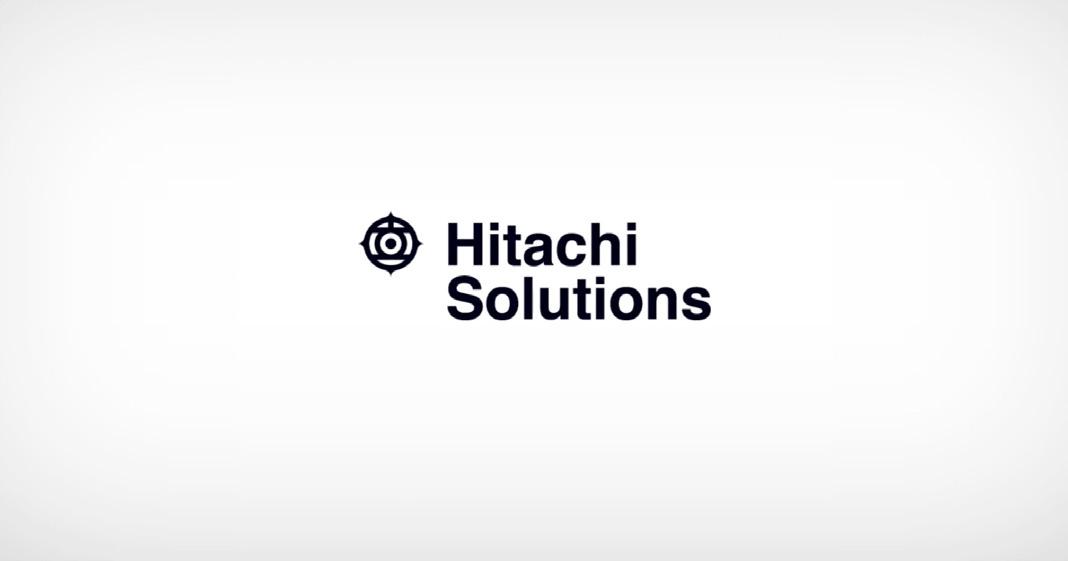
Jamie Watson, Client Director at Hitachi Solutions Europe, explains why his firm was well-equipped to assist The Royal Mint in its ambitious transformation

Embarking on its world-first Sustainable Precious Metals (SPM) programme, The Royal Mint (TRM) needed a partner that could seamlessly establish a new ERP system. The Mint joined forces with global consultancy firm Hitachi Solutions, which specialises in people-first business transformation using Microsoft technologies.
Jamie Watson, Client Director at Hitachi Solutions Europe, explains: “From a tech perspective, this involves the full suite of Dynamics 365 (D365) Business Applications: the Power Platform, Azure, and the data and AI platforms. “From a people perspective, it’s centred around change management and digital innovation.”
Detailing Hitachi Solutions’ engagement with TRM, Watson adds: “We worked very closely with The Royal Mint team to deliver a people and business-led engagement that initially focused on understanding their needs and goals. “We prioritised those needs and worked out what enabling technology was required within the Microsoft technology stack to turn those needs
into real-life outcomes. “Since then, we’ve continued our relationship, successfully tendered the SPM ERP transformation programme, and we’ve gone live with the D365 Finance and Supply Chain Management solution.”
The design and build of TRM’s new ERP solution means it will prove to be extremely sustainable in the long term. “As a collective team,” Watson continues, “we had less than six months to design, configure, test and deploy a production-ready ERP solution, which, for anyone familiar with these types of programmes, is almost unheard of.”
Watson said the project had provided “huge opportunity” for transformation across TRM’s organisation. He adds: “We can focus less on keeping the lights on and focus more on continually adding new functionality like the Power Platform, robotic process automation, and even brand-new technologies that are hitting us across AI and machine learning. “That will certainly become relevant to The Royal Mint and could, in itself, provide significant long-term benefits.”
business, so we were very quick to recognise it as an opportunity to test drive some of our assumptions and processes,” says Hobbs.
“It’s been a great learning curve for us to start on our ERP journey and, in fact, we delivered the MVP ERP within 15 weeks of inception. That was done by January and we’re already at the end of phase two, which is implementing a second phase of change.
“It’s been a really successful programme that’s had a big impact on the business.”

The pronounced importance of cloud computing to modern living, technology and the manufacturing industry is well documented. The Royal Mint’s IT transformation from on-premise to the cloud allowed for greater technological flexibility.
“Our new ERP sits on the cloud, giving us the ability to be really quick and nimble, keep it updated, and take on technology,”
“Sustainability is now at the heart of The Royal Mint – and technology plays a crucial role in this journey”
RICHARD HOBBS GROUP IT DIRECTOR, THE ROYAL MINT
says Hobbs. “But it also enables integrations to be fast and effective, allowing us to scale up the product during busy periods and to be elastic without even thinking about it.”
Moreover, cloud computing has allowed The Royal Mint to enhance its data management and cybersecurity, both of which lie at the heart of the aforementioned technology strategy. A data management function has been created to appropriately surface information to the business, which is self-serving and maintains an organised, controlled, and secure data team.
Moving to the cloud and the implementation of modern ERP across the Mint has even helped change internal perceptions of the technology department, with Hobbs adding: “We’re now seen as much more of an enabling function than a
cost function. When the business is moving fast, trying new things, and diversifying quickly, it needs the technology to do it.”
The Royal Mint has been able to count on a whole host of partners to help carry out its recent technological transformation and activities.
Its primary partner within the ERP space has been Hitachi Solutions, which worked closely with The Royal Mint’s tech team to implement the Dynamics 365 system managing the precious metals recovery site.
“We’re essentially a public sector organisation, so we have to go through a procurement process,” explains Hobbs. “When we spoke to Hitachi, from quite early on we recognised there was a really strong cultural fit.

886AD
Founded in 886 AD during the time of Alfred the Great, The Royal Mint is one of the oldest brands in Great Britain
800
The Royal Mint employs more than 800 people across functions including manufacturing and technology

Away from producing currency for the UK and other countries, The Royal Mint has successful businesses across commemorative coins and investments as well as its new luxury jewellery range
“Knowing an ERP project is potentially two or three years long, we wanted to make sure we could work together. The technology itself is quite prescribed but, on the softer side of things, Hitachi were able to engage with us and support us in our decision making.”
Also key was Hitachi Solutions’ experience in working with similar organisations and its success rate in implementing Dynamics 365. This meant that, rather than simply responding to The Royal Mint’s questions, project team members were able to add some colour to the conversations around what they’d seen before.
“We were so lucky,” Hobbs continues. “Hitachi brought in a great project team who we kept for the whole duration; they engaged with The Royal Mint side of things really effectively. It felt like they were part of our own team.

“Hitachi Solutions has been a great partner of ours for about two years now, helping to shape our story and the build we’ve just completed.”
Using Dynamics 365 and sitting within a Microsoft Azure cloud means the Mint has, of course, worked closely with Microsoft, while Optimizely provides its website platform. The emphasis from The Royal Mint’s point of view is on gathering a small but focused group of partners that help the company push through its strategy.
“We recognise that we don’t know the answers to everything,” says Hobbs. “Picking

On a mission to expand on its digital e-commerce operation, with the customer at the forefront, The Royal Mint leveraged Expleo’s domain expertise and best-in-class proprietary methods for testing and assuring technology rollouts.
Find out how Expleo can help your organisation embrace a culture of hyperautomation. LEARN MORE

As the country’s oldest company and holder of the exclusive contract to produce the nation’s coinage, The Royal Mint is an icon of British business. Expleo was offered a rare opportunity to partner with one of the country’s greatest establishments in its digital transformation.
In 2020, Richard Hobbs, Group IT Director of The Royal Mint recognised the significance of innovation within the technology function and formulated a plan to bring new technologies into the business, while accelerating time to market with new product offerings. This coupled with heightened customer expectations around seamless online experiences provided the impetus for the Royal Mint to replace legacy systems and digitalise manual processes that were tying up resources and time. The Royal Mint issued a tender for a project to digitalise its IT infrastructure, selecting Expleo to automate the testing of its e-commerce digital platforms and oversee the testing process for its switch to a new payment provider. Hobbs, architect of the
Royal Mint’s digital agenda, envisioned an ‘automation-first’ approach to IT refurbishment, geared towards expanding the company’s product suite and client base.


Top of the list of deliverables was a highperformance website – RoyalMint.com. Expleo quickly implemented a robust testing framework to identify defects within the existing IT infrastructure and put in place a quality assurance tool that has allowed The Royal Mint to develop new functionality for a smoother customer journey. This intervention dramatically reduced the number of hours required to execute a core regression test pack by 80%.
Expleo’s
Mint’s website helped the company to unlock new revenue streams across its products. Additionally, the improved testing and bug detection capabilities decreased the risk of lost sales due to system downtime, while bolstering the security of The Royal Mint’s website, and mitigating the risk of cyber-attacks.
our partners based on shared synergies and the ability to work well together is the driving factor for me.”
Another important partner for The Royal Mint is Expleo, which has grown to become a force in the fields of engineering, technology and consulting.

“Expleo has supported the expansion of our commercial horizons,” Hobbs says. “Their team’s technical know-how enabled us to improve our development processes and increase efficiencies across the board.
“Expleo facilitated a re-platforming of our website and oversaw the testing process for our switch to a new payments provider. Through this engagement with Expleo, we’ve been able to expedite time-
 Royal Mint Pattern
Royal Mint Pattern
to-market with a new product line, unlock viable new revenue streams and become more commercially agile.
“Overall, this phase of automation has allowed us to focus resources on more strategic initiatives, increase productivity, improve customer satisfaction and boost revenue growth.”

The Royal Mint is focused on working towards a sustainable future for its business and the environment, and this includes developing talent within the technology team.
Hobbs says: “Our technology function is robust and we want to ensure we’re sustaining as well as attracting talent to the business.”
The Group IT Director and his team have forged partnerships with the University of South Wales and the National Cyber Security Academy. They collaborate in a number of ways, including supporting students with projects and dissertations, attending speaking opportunities and sharing insights to provide students with case studies to aid their assessments.
“Hitachi Solutions has been a great partner of ours for about two years now, helping to shape our story and the build we’ve just completed”
RICHARD HOBBS GROUP IT DIRECTOR, THE ROYAL MINT
“It’s important for us as a team to engage with the local communities we operate in,” Hobbs adds. “It also allows us to demonstrate the amazing local career options that we have on offer, helping us to attract talent into the business. We work closely with educational establishments and it’s a mutually beneficial relationship; we offer our knowledge and, eventually, this may make its way back into the business via employment opportunities.”
The tech team also works with the Network 75 scheme on technical apprenticeships, allowing students to gain hands-on experience at a world-renowned organisation. The Royal Mint hires directly from university, with three technology team members being employed via this route.
“It’s important for me to ensure my team is happy, whilst delivering our technology strategy and offering a premium experience for our customers,” Hobbs continues. “Our technology function provides lots of opportunities in which our staff can fully immerse themselves, whether that’s working on our new ERP system on the cloud, data management, cybersecurity or working with our project partners.”

What next for technology at the Mint? The outlook for The Royal Mint is transformational, and its technology strategy plays a huge part in delivering some of these exciting plans.
The precious metals’ recovery site will soon go live and begin putting tonnes of e-waste to good use. Cybersecurity innovation and use of data to enhance customer experience is also on the agenda, as are various improvements to the website. It’s projected that the ERP journey will be complete in around 18 months’ time.

Furthermore, Hobbs predicts that AI and machine learning will become increasingly influential in both the technology and manufacturing spaces.
“It’s really interesting to think about how we can harness new technology like generative AI,” he adds. “What impact will it have in the manufacturing space? What can we teach it about our manufacturing processes to constantly enhance and develop them? The scope of potential innovation is boundless.”
“We work closely with educational establishments, and it’s a mutually beneficial relationship”
RICHARD HOBBS GROUP IT DIRECTOR, THE ROYAL MINTCurrency coins being produced

By taking a holistic approach that embeds data and analytics into applications, businesses can gain real-time insights and optimise their operations
WRITTEN BY: MARCUS LAWEmbedded analytics – the integration of data analysis capabilities directly into business applications – is revolutionising how organisations extract insights and make data-driven decisions. With embedded analytics, users can access powerful analytical tools within the same application they use for their daily tasks, without the need for separate analytics platforms or complex data transfers. This seamless integration empowers organisations to gain real-time insights, uncover hidden patterns, and optimise their operations for better outcomes.
“Embedded analytics is a digital workplace capability where data analysis occurs within a user's natural workflow, without the need to toggle to another application,” Gartner defines. “Moreover, embedded analytics tends to be narrowly deployed around specific processes such as marketing campaign optimisation, sales lead conversions, inventory demand planning, and financial budgeting.”
Embedded analytics approaches don’t only save time; they ensure that curated analytics are presented where they are needed, based on known, reliable data sources and relevant analyses. They can improve users’ experiences with applications because data is seamlessly provided within the product and workflows they already know. Users are presented with the insights they need, embedded within the applications in which they make decisions and act, rather than moving to separate analytical interfaces, finding and interpreting the right content, and then switching back to a transactional app.
“Companies that succeed have a holistic approach, continuously embedding data and analytics into the business,” said Stefan

A modern network must be able to respond easily, quickly and flexibly to the growing needs of today’s digital business. Must provide visibility & control of applications, users and devices on and off the network and Intelligently direct traffic across the WAN. Be scalable and automate the process to provide new innovative services. Support IoT devices and utilize state-of-the-art technologies such as real-time analytics, ML and AI. And all these must be provided with maximum security and minimum cost.
This is the power that brings the integration of two cloud managed platforms, Cisco Meraki and Cisco Umbrella. This integration is binding together the best of breed in cloud-managed networking and Security.
cisco.com










Pechardscheck, Global Leader Technology at management consulting company BearingPoint, which named embedded analytics as one of its key trends for 2023.
“They keep an eye on new trends and adjust accordingly, but always move along a roadmap with initiatives and use-cases that drive them toward their goals,” he comments. “Companies must define and
prioritise actionable use-cases and insights, and work with a holistic plan. Without these, data analysis won’t go far.
Currently, the vast majority of business products that deliver analytics to customers do so via methods that feel “bolted on” like emails, web portals, and standalone dashboards, explains Paul Scholey, Vice President International at business intelligence software company Sisense.
“Analytics in this manner is hard to find, unintuitive, and often irrelevant to most end-user goals,” he comments. “When disconnected from core-product workflows, users find it hard to leverage analytics when making decisions and, consequently, won’t.”
As Scholey describes, the solution involves embedding analytics seamlessly into the product and prioritising contextual insights over aggregate data. “That way,

“Companies that succeed have a holistic approach, continuously embedding data and analytics into the business”STEFAN PECHARDSCHECK GLOBAL LEADER TECHNOLOGY, BEARINGPOINT

According to Microsoft, organisations can gain the following benefits from embedding analytics into their workflows:
• Save on development time and resources. By embedding analytics rather than building the content out themselves, product teams can focus more on building out core features, allowing them to get to market faster. Automated monitoring and deployment tools may also help reduce cost and resource usage.
• Provide users with easier access to data. Many embedded BI platforms offer in-app, self-service analysis and AI features so you can get what you need without having to put in an analyst request. This results in greater familiarity with the data, deeper insights, and the fostering of a data-driven culture.
• Upgrade to a more modern data experience. Feature-rich reports and dashboards give you the ability to interact with your data in a more immersive way. This leads to more meaningful insights, greater user satisfaction, and an in-app experience that stands out from the rest.
• Boost productivity. With all your analytics available in one interface, you’ll no longer need to toggle between different platforms to find what you need. This results in increased productivity, more value, and a greater return on investment.
customers can be informed and take action in the exact same place,” he says.
“The best embedded analytics platforms offer extensive customisation to fit naturally into existing product workflows. And recent advances in artificial intelligence (AI) and other technologies mean insights can automatically be generated from data in a way that makes sense to the customer.
“This also allows users to go from descriptive analytics that simply inform, to prescriptive analytics that advise the best actions to take,” he adds.
“Customer service representatives can proactively reach out to customer accounts that are likely to churn. Healthcare companies can dynamically adjust appointment availability based on historical data and current demand. Retail managers can plan and shift inventory
based on local sales, market trends, and a competitor’s promotions. These are the types of experiences businesses can give their customers – all made possible by embedded analytics.”
With the rising need for data-driven insights and the scarcity of traditional data scientists, citizen data scientists are stepping up to bridge the gap.

“When paying attention to the role that analytics plays in the modern enterprise, it often becomes clear that it’s the reporting and dashboarding approach itself that is behind many of the bottlenecks which, in turn, act as obstacles to holistic deployment and rollout of “top-to-bottom” analytics,” explains technology thought leader and influencer Bernard Marr.
“Analytics and data science teams often find themselves forced to spend time creating tools, applications, and dashboards that will only ever be accessed by the 20%
“When disconnected from core-product workflows, users find it hard to leverage analytics when making decisions and, consequently, won’t”
PAUL SCHOLEY VICE PRESIDENT INTERNATIONAL, SISENSE


“Rather than relying solely on hiring qualified data experts, business leaders should aim to train their existing workers with data skills: this can help to keep costs and overheads down”
ITAMAR BEN HEMO CEO & CO-FOUNDER, RIVERY
of the workforce for which analytics is an accepted part of their role.
“Put simply – data and the insights it contains are far too valuable to be kept locked away in the ‘ivory towers’ of data scientists, the c-suite, and the few rarified environments where it is already put to use.”

As Itamar Ben Hemo, the CEO and Co-Founder of DataOps platform Rivery, explains, many businesses are bringing in data experts to leverage data initiatives due to their ability to interpret high volumes of data and turn it into actionable insights. However, relying solely on data experts can be a crucial error for businesses.
“Rather than relying solely on hiring qualified data experts, business leaders should aim to train their existing workers with data skills: this can help to keep costs and overheads down,” he explains. “Data literacy courses are already becoming common in many companies; large organisations such as Bloomberg and Adobe are going further, with in-house digital academies dedicated to training workers in how to use data.”
“Training analysts to use low-code or no-code tools for data management costs far less than hiring a data scientist,” Ben Hemo asserts. “By removing bottlenecks in daily data operations, teams that need analytic dashboards to make decisions for campaigns don’t have to wait and can focus more on revenue-generating activities.
“Training existing employees is particularly powerful because they combine newly-acquired data skills with their existing domain expertise to extract maximum value from the data,” he concludes. “These ‘data citizens’ will be able to extract value from data without waiting for a separate team of data experts or scientists to do it for them.”


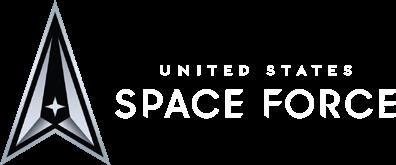
AD

FEATURE WRITTEN BY: MARCUS LAW
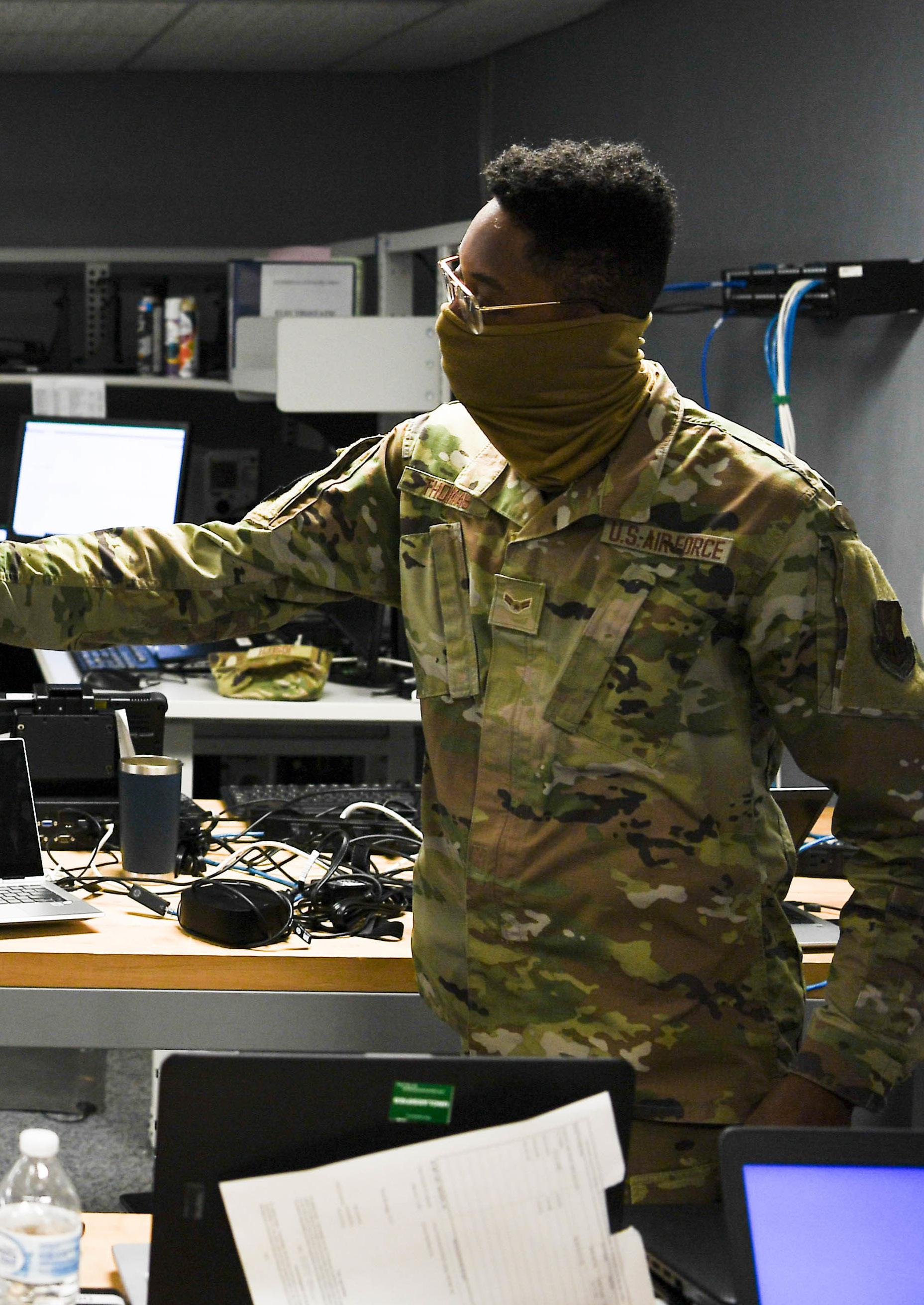
When a high-level official steps down from their position, it often raises questions about the future of the organisation they leave behind. But Lauren Knausenberger, CIO of the Department of the Air Force, will be leaving with her head held high.

Knausenberger’s time in the role which she describes as the “honour of a lifetime” is coming to an end: she leaves her role, on 2nd June. But speaking with her shortly before her time as CIO concludes, it is clear that she is not letting up as she prepares to cross the finish line.
“There are a couple of things that are going to be a photo finish,” she explains. “One is just getting all of our endpoints on the same image and having all of those endpoints remotely managed. We’re pushing very, very hard on that.”
Other projects nearing completion are the simplification of the department’s endpoint security model and the first wave of its Enterprise IT-as-a-Service, which is aimed at improving consistency of IT service delivery.
“Those are all big things that have been in progress for a little while and people are really trying to get it done because we have a shared sense of urgency in the Department. These are the top items on the hit list I want to see done before I leave.”
As her time as CIO at the Department of the Air Force comes to an end, Lauren Knausenberger tells us about the tasks still on her hitlist and her advice for her successor

An experienced technologist who began her career at the NSA as a teenager, since 2021 Knausenberger has held the role of CIO for the Department of the Air Force, comprising the US Air Force and US Space Force.

“I’ve been able to build an incredible team,” she adds. “When I depart, I am not at all worried about walking out the door and knowing that there are a number of people that can pick up the torch and run.”
Before joining the Air Force as its Director of Cyberspace Innovation in 2017, Knausenberger graduated from
“When I depart, I am not at all worried about walking out the door and knowing that there are a number of people that can pick up the torch and run”
LAUREN KNAUSENBERGER CHIEF INFORMATION OFFICER, DEPARTMENT OF THE AIR FORCE
fields
Conference, also
at the Pentagon, July 19. AFCON is a one-day immersion into Air Force technology, culture and operations designed for long-form storytellers who typically do not cover the military.
Wharton Business School and held a number of roles in the entrepreneurial and investment industry.

Most recently working in a high-profile role in the defence sector, the call to serve her country came literally in the form of a call from an Air Force captain who had been inspired by a speech by then-DAF CIO, Lieutenant General Bill Bender.
“My husband got a call from an Air Force captain one day, and he just said, ‘We need more companies like your wife’s company in the defence space. We have so many barriers to innovation. I’d really love to chat with someone like her about how we can solve some of these problems’.”
TITLE: CHIEF INFORMATION OFFICER
COMPANY: DEPARTMENT OF THE AIR FORCE
LOCATION: WASHINGTON, US
Lauren Barrett Knausenberger is the Chief Information Officer for the Department of the Air Force, comprised of the US Air Force and US Space Force. Ms. Knausenberger leads three directorates – Enterprise Information Technology, Data and Artificial Intelligence and Cybersecurity – and supports 20,000 cyber operations and support personnel around the globe with a portfolio valued at U$17bn. She provides oversight of the Air Force’s Information Technology investment strategy from networks to cloud computing, Enterprise policies, data management, digital transformation, information resources management, information technology innovation initiatives, information assurance and related matters for the Department of the Air Force.
 Image: Lauren Knausenberger (centre), director of Cyberspace Innovation, talks about women in technology career
during the Air Force
known as AFCON,
Image: Lauren Knausenberger (centre), director of Cyberspace Innovation, talks about women in technology career
during the Air Force
known as AFCON,

“It truly has been an honour of a lifetime to work with these airmen and guardians, at a time that we’re launching the Space Force and truly becoming an enterprise and moving through a lot of cultural barriers too”
LAUREN KNAUSENBERGER CHIEF INFORMATION OFFICER, DEPARTMENT OF THE AIR FORCEImage: Lauren Barrett Knausenberger, Air Force Chief Information Officer, tours a B-52H Stratofortress during an official visit to Barksdale Air Force Base, Louisiana, June 15, 2021. Knausenberger visited Barksdale to familiarise herself with the mission of Air Force Global Strike Command.
The punchline was, ‘Can I take your wife out for a beer?’ Knausenberger laughs.
“After my husband stopped laughing, he sent the captain my phone number and we met up,” she says. “As we were chatting, I opened up my little bar napkin and I started sketching some things out. We were having a great conversation and just bouncing ideas off each other.”
From this conversation, Knausenberger was asked to put those notes together in a pitch to General Kim Crider, who would later become the first Chief Data Officer of the
Air Force and the first Chief Technology and Innovation Officer for the Space Force.

“I then met General Holmes who went on to be the Air Combat Command four-star and then to General Bill Bender where it all started. And, over time, he and General Crider tackled me and said, ‘Hey, we really need you to serve your country because when you talk about these things, we believe that we can really do them’.”
As Knausenberger explains, the CIO role came thanks to the decision by the Air Force to cast a wider net in the interest of innovation.
“The CIO at the time, Bill Marion, looked across the table at me one day and he said, ‘You know you’re probably the next obvious CIO, right?’ And after I looked over my shoulder
at who he could possibly be talking to, I said something along the lines of, ‘I don’t think that is obvious at all!’
“He encouraged me to put my name in the hat. And because the Air Force cast a wider net, I was not a tenured member of the senior executive service at the time.”
Since taking on the role, Knausenberger says it has been an honour to work with her team, particularly at such a transformative time.
“It truly has been an honour of a lifetime to work with these airmen and guardians, at a time that we’re launching the Space Force and truly becoming an enterprise and moving through a lot of cultural barriers too, through

“ I feel that we are very well set up for the next five years to completely crush it as a cyber IT and comm team”
LAUREN KNAUSENBERGER CHIEF INFORMATION OFFICER, DEPARTMENT OF THE AIR FORCE
COVID, to truly understand what a digital world is and that it is the underpinning of our future competitive advantage.”
The hard work of Knausenberger and her team over the last three years has truly elevated the stature of the office of the CIO. “The CIO 100% has a seat at the table,” she says. “The secretary relies on us for technical guidance. MAJCOM Commanders rely on us to solve major problems for them for the fight.”
As a result, the cyber and IT community feels incredibly valued. “We do lots of things that support air power anytime, anywhere.
Image (Left): Lauren Barrett Knausenberger, Chief Information Officer for the Department of the Air Force, participated in a base tour March 29, 2023 at Eielson Air Force Base, Alaska. During her visit, Knausenberger met with Col. David Berkland, 354th Fighter Wing Commander, to learn more about their mission and discuss the critical role of cyber communication. As the Chief Information Officer for the Department of the Air Force, Knausenberger is responsible for overseeing the Air Force’s communication and information technology strategy. This includes ensuring that the Air Force’s cyber capabilities are aligned with the needs of the service and the broader national security goals.
We do lots of things that support the fight in space, but people now recognise very consistently that the airplanes are not taking off without all the IT and cyber systems and personnel that support them.”
One of Knausenberger’s proudest achievements, she says, came when the United States Air Forces in Europe (USAFE) A6 and USAFE MAJCOM commanders were looking for new solutions to problems with their IT infrastructure.

“I went out personally and then put together a broader team across our operational community to go out and work with those guys. In partnership with the MAJCOM commander and A6 out there, we completely overhauled their infrastructure. And so they were able to go through and do these critical exercises with their allies with greater performance and resilience than they had ever seen.”
As Knausenberger explains, this new ability to move quickly has been particularly important in recent times.
“We did not know at the time that the Ukraine conflict would be coming, but when it did, because we had done all of that hard work, it was so much easier to launch new capabilities that would provide that resilience that we would need to do anything to help


March 29,
Alaska. During her visit, Knausenberger met with Col. David Berkland, 354th Fighter Wing Commander, to learn more about Eielson’s mission and discuss the critical role of cyber communication. Knausenberger’s visit provided valuable insights into the base’s use of communication and information technology to help identify areas where additional resources or support may be needed.
and to be prepared for ourselves in case things got really bad,” she comments. “That’s something I was really proud of.”
Historically, the US Department of Defense might not have been known for its excellence in IT. But thanks to the efforts of Knausenberger and her team, a marked improvement in user experience has been made.

“Over my first year in the seat, we had about a 12-point improvement,” Knausenberger says. “And then over the user experience numbers I just saw, it looks like we went up another 12 points.
“That’s a 25-point improvement that I can put my finger on through the efforts of the team. The user experience improvement has been huge and I expect that to be even greater
as we’re able to do more with our ICAM roadmap and as we’re able to really gain momentum on EITaaS Wave 1.”
Central to the DAF’s plans going forward is continuity, Knausenberger says, which will enable the department to continue to deliver in the coming years.
“I feel that we are very well set up for the next five years to completely crush it as a cyber IT and comm team. We have the right strategy in place, we have the right roadmaps in place, we have the right teams in place, and we have the right funding and resource profile in place. And I do not

Image (below): Lauren Barrett Knausenberger, Chief Information Officer for the Department of the Air Force, participated in a base tour March 29, 2023 at Eielson Air Force Base, Alaska. During her visit, Knausenberger met with airmen to discuss the future of cyber communication and recognised three outstanding service members. Senior leadership visits like this are important because they give Airmen the opportunity to talk to and share their concerns with key decision makers.

remember a time that we could say that at the same time.
“I feel really comfortable walking out the door knowing that we’re in a good place. I feel good that I’ve been able to make a difference and I know that the team that follows is going to be able to exponentially drive even more as some of those initiatives come to full fruition. So I’m excited to be able to watch the home game and cheer on the sidelines with my popcorn as this team continues to win a few games.”
Last year, the DAF released its CIO strategy up to 2028, highlighting six Lines of Effort to shape the department’s IT strategy going forward.
Covering topics such as cloud adoption, cybersecurity and AI, these topics were chosen to directly address the needs of the emerging strategic and technological environment in which the department operates.

“The strategy has six lines of effort and it’s not anything too surprising. It might look a lot like what you would find in a commercial CIO strategy,” Knausenberger explains.
The first Line of Effort is around the acceleration of cloud adoption. “We have done a very good job in this area in that we have, I believe, the world’s largest cloud instantiation with over 750,000 users times multiple networks in the cloud, as well as a pretty robust multicloud environment within Cloud One. But we’re still just chipping the surface on that. We have a lot of things that we do need to migrate within the secret and top-secret realm as well.
“We’re making it easier to consume cloud services, we’re being more transparent about the cost of those cloud services and we are removing some of the roadblocks to automate more of the process.”
As Knausenberger explains, the future of cybersecurity plays a major role and is the strategy’s second Line of Effort. “Zero Trust plays a big role here. There’s a lot about workforce education here as well because every person has a responsibility in cyber. And then post-quantum encryption and in general crypto agility also play pretty heavily on the cybersecurity side.”
The concept of Zero Trust is a North Star concept, she explains.
“What we’re trying to do is deliver a more secure but also simplified warfighting environment today. We have way too many networks and way too many systems that are really following an old model of protection. And in some cases that makes us vulnerable.
“In a lot of cases, it makes it really hard to use the systems. You have to be very welltrained to do basic things in certain instances. And so we want it to just be much easier for our warfighters to do basic things like login once and be able to get into everything that you need to get into.
“The most important thing to me is getting to a future world where we can fight in one warfighting environment with our joint partners and our allies.”
The third Line of Effort is around the workforce, involving taking care of all of the people that are the most important investment in our warfighting enterprise, and ensuring they are equipped with digital skills.

“Our digital university has been a great enabler there because our curriculum is always updating as fast as industry can possibly deliver,” Knausenberger says. “We have a variety of different digital pathways through there. And so whatever it is that an airman or a guardian wants to learn, they can go and learn and we can see what their skill sets are. And when we need something for the fight, we can very easily see who has a skill set that we can bring to bear.”
LoE four is portfolio management, based around ensuring dollars are spent efficiently and effectively, focused on a return on cybersecurity and mission performance, while the fifth LoT is excellence in core IT and mission-enabling services. “That’s really the tech stack, making sure that we’re delivering the services that people need to do their jobs.
“ Coming into this job I said I’d plan on doing two years. I’m coming up on three”
LAUREN KNAUSENBERGER CHIEF INFORMATION OFFICER, DEPARTMENT OF THE AIR FORCE
And that’s everything from having reliable transport through compute, through end-user devices and DevSecOps services.
“And then finally data and AI. And that’s all about operationalising data for decision advantage, getting ready for embedding AI and ML responsibly and ethically into more of what we do on a day-to-day basis.
“The overall mission of all of this is to shorten the literal and proverbial kill chain and deliver decision advantage so that, as we go into whatever mission we have, people
have the information. They can rely on their systems and they can conduct their mission with our joint partners and our allies. That we can continue to fly, fight and win.”

With technologies like ChatGPT having taken the world by storm, generative AI solutions will continue to hold a role in the DAF’s strategy going forward.
“Generative AI already has really taken the world by storm and it will continue to,” Knausenberger comments. “And as we adopt in the Department of Defense, there
is going to be so much power there. Even in basic things like improving productivity and making it easier to bring knowledge to people’s fingertips.”
This technology also changes the threat landscape, however. “There was a Wall Street analyst that shared a proprietary model with ChatGPT and that caused some problems for that investment house,” Knausenberger comments. “We don’t want our airmen and guardians to inadvertently share controlled unclassified information or classified information with an AI bot that is then going

“We’ve got a plan in place, we’ve got momentum, we’ve got the people doing the right things”
LAUREN KNAUSENBERGER CHIEF INFORMATION OFFICER, DEPARTMENT OF THE AIR FORCE
to compile that into its knowledge and share it with the public.
“Likewise, we have to seize this as an opportunity because certainly anyone that is seeking to harm us and our allies will be using it and harnessing it to do harm to us. And so we have to be aware of the threats, we have to be aware of defensive actions against those threats, but we absolutely have to harness the opportunity and leverage these capabilities and we have to do it ethically and responsibly. And I think we have done a pretty good job of that thus far.”
Next steps
for
For Knausenberger, the next steps involve taking some well-earned time to spend with family.
“Coming into this job I said I’d plan on doing two years. I’m coming up on three. And believe it or not, I’m actually the longestrunning CIO in quite some time because this job tends to be a two or three-year role.
“You need new blood, you need new ideas and new approaches to keep things fresh in a space that is going to continue to change.”
After a summer off, the next step will be a role back in the private sector. But Knausenberger won’t rule out a return in future.
“I would not be surprised if some amount of time away if I get a phone call from someone in the national security sector that says, ‘Boy, do I have a juicy problem for you to come and help with!’,” she says. “And I will have to give it some really good thought.”
At the time of speaking with Knausenberger, her successor has not been announced. But what advice would she give the next CIO?

“Whoever we choose, what I would tell them is to trust their team, trust the strategy and the roadmaps. We’ve got a plan in place, we’ve got momentum, we’ve got the people doing the right things.
“I would say trust the team to go forward and continue to remember that this is a broad enterprise,” she concludes. “We have a lot of stakeholders and we have to really make sure that we are driving toward that enterprise look, that we’re enabling our airmen and guardians and continuing to deliver.”
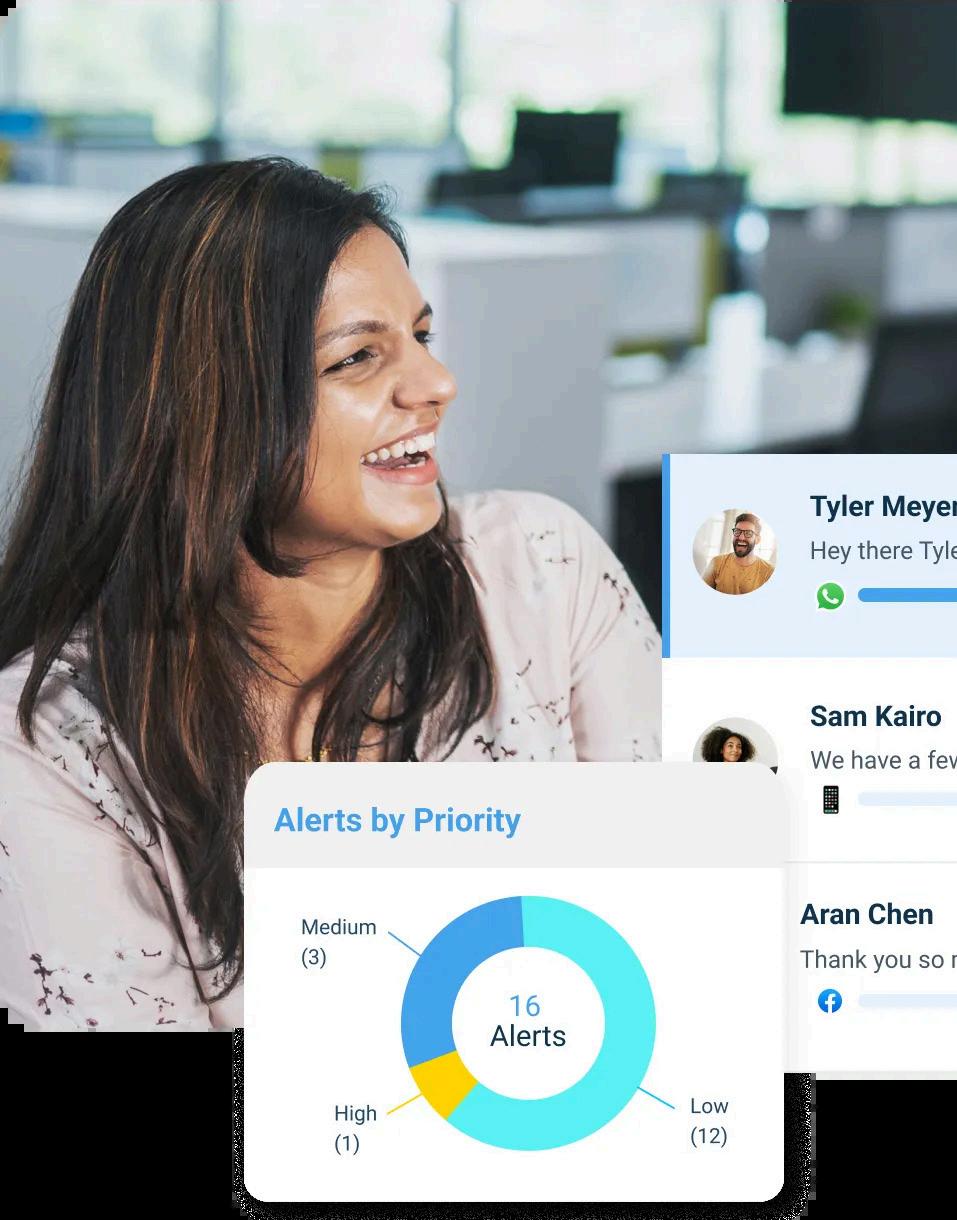
Since OpenAI announced the launch of ChatGPT in December 2022, the rapidly-advancing technology has dominated headlines globally.
Today, the technology is being used by businesses to assist with crucial tasks, from enterprise support and customer interaction to product development. Capable of generating human-sounding text, the tool is a powerful one for the next generation of chatbots and, by proxy, omnichannel customer communications.
Large language models like GPT-4 or Google’s LaMDA use Natural Language Processing (NLP) to understand and respond to human-generated text inputs in a conversational manner. A subfield of AI that focuses on enabling computers to process and understand human language, these models utilise NLP techniques to analyse and interpret the text input it receives – including tasks such as part-of-speech tagging, named entity recognition, sentiment analysis, and language modelling. These NLP techniques help related tools understand the meaning, context, and intent behind the text input, allowing them to generate relevant, coherent responses in a conversational style.
With the field of NLP continuing to advance rapidly, the integration of GPT technology is propelling the next generation of chatbots to new heights. With their ability to understand and generate human-like text, GPT-powered chatbots are revolutionising customer interactions, virtual assistants, and other conversational applications.

With AI and NLP scrambling to the innovative frontier of tech, we look at how the two combine to inform the newest GPT iteration for nextgen chatbots


The way companies talk to their customers can significantly impact retention and business growth. Threequarters of US consumers told a study conducted by customer communications company Intercom earlier this year that communication that makes them feel valued is a top factor in continuing to do business with a brand.

The study of 1,000 US consumers found that three in four say communication that makes them feel valued is a top or the most important factor when doing business with a brand. A total of 64% went further and reported they would leave a business if they didn't feel valued.
Furthermore, the study highlighted generational differences in the style and
“The old adage that it takes months to win a customer and seconds to lose them has never been more true in the digital age”
COLIN CROWLEY SENIOR DIRECTOR OF CUSTOMER SUCCESS, FRESHWORKS
In March, OpenAI announced the launch of GPT-4, the latest iteration in its deep learning models, featuring improved creativity, reliability, and the ability to accept image inputs and work with texts around the same length as a short novel.
OpenAI says GPT-4’s new feature highlights are:
• Enhanced creativity and collaboration: GPT-4 can generate, edit, and collaborate on creative and technical writing tasks – including song composition, screenplay writing, and adapting to a user's writing style.
• Image input capabilities: GPT-4 can process images and generate captions, classifications, and analyses.
• Extended text handling: GPT-4 can manage over 25,000 words of text enabling long-form content creation, prolonged conversations, and document search and analysis; for reference, that limit is around the same wordcount as The Old Man and the Sea by Ernest Hemingway and only slightly less than George Orwell’s Animal Farm or John Steinbeck’s Of Mice and Men
• Improved problem-solving: GPT-4 can tackle complex problems more accurately due to its expanded general knowledge and problem-solving skills.
tone consumers want. Good customer support varies based on the person and situation, say the researchers, making it essential for businesses to deliver personalised communication grounded in context and a deep understanding of each individual customer.
As Colin Crowley, Senior Director of Customer Success at Freshworks, explains, the main purpose of a chatbot is to improve the productivity of customer-facing teams, increase customer satisfaction, and reduce the workload caused by live chat.
“It doesn’t matter how impressive a product is or how clean a website looks –



“Thanks to AI, chatbots are transforming from rule-based solutions to virtual agents with strong conversational intelligence”
RAFFAELE FERRARA
PRODUCT MARKETING MANAGER, ODIGO
if a customer can’t get simple queries answered, updates on orders or speedy resolutions to their issues, they will leave feeling frustrated and disappointed with the brand,” he asserts. “The old adage that it takes months to win a customer and seconds to lose them has never been more true in the digital age, where customers expect instant gratification and fast responses.”

The widespread interest in large language models like GPT-4 has created huge gains in interest around NLP and deep learning, according to O’Reilly’s annual Technology Trends for 2023 report, which examines the most sought-after technology topics.
The report shows that developer interest in generative AI is gaining momentum, with NLP being the most significant year-overyear growth among AI topics. In the world of NLP chatbots, one of the main roles that GPT tech is playing is improving the
conversational quality and effectiveness of chatbot interactions. GPT-based chatbots can understand and respond to a wide range of queries and prompts from users, providing relevant and contextually appropriate responses. This has significantly enhanced the user experience, making chatbot interactions more human-like, engaging, and satisfying.
“The combination of chatbots and AI allows for far more advanced bots that can mimic human conversations, leveraging NLP, Natural Language Understanding (NLU), AI and ML technology to understand the intent of a query and offer solutions,” Crowley comments.
“Thanks to AI, chatbots are transforming from rule-based solutions to virtual agents with strong conversational intelligence,” adds Raffaele Ferrara, Product Marketing Manager at Odigo. “These solutions can handle even more complex use cases thanks to advanced NLU capabilities: handling
Transformers, explained: Understand the model behind GPT, BERT, and T5
multiple entities and intents in one utterance.
“They are also capable of handling all nuances related to human conversations – including interruptions and multiple requests – and retain short-term and long-term memory to make conversations productive.”

With human-level performance on various professional and academic benchmarks, GPT-4 surpasses GPT-3.5 by a significant margin, exhibiting an increased ability to handle complex tasks and more nuanced instructions.

“Only if and when a GPT model is fed knowledge with metadata context can these hallucinations be fixed and GPT trusted as an AI advisor”
AARON KALB CHIEF STRATEGY OFFICER, ALATION

Despite its capabilities, however, GPT-4 has similar limitations as earlier GPT models. “Most importantly, it still is not fully reliable,” the OpenAI team says. “Great care should be taken when using language model outputs, particularly in high-stakes contexts, with the exact protocol (such as human review, grounding with additional context, or avoiding high-stakes uses altogether) matching the needs of a specific use-case.”
Aaron Kalb, Chief Strategy Officer and Co-Founder at Alation, reiterates this final point: GPT should not yet be trusted to advise on important decisions.

“That’s because it’s designed to generate content that simply looks correct with great flexibility and fluency, which creates a false sense of credibility and can result in so-called AI ‘hallucinations’.
As Kalb – who, when working at Apple, was part of the founding team behind its groundbreaking Siri voice assistant –explains, the authenticity and ease of use that makes GPT so alluring is also its most glaring limitation: “Only if and when a GPT model is fed knowledge with metadata context – so essentially contextual data about where it’s located, how trustworthy it is, and whether it is of high quality – can these hallucinations or inaccurate responses be fixed and GPT trusted as an AI advisor,” he asserts.
“GPT is incredibly impressive in its ability to sound smart. The problem is that it still has no idea what it’s saying. It doesn’t have the knowledge it tries to put into words. It’s just really good at knowing which words ‘feel right’ to come after the words before, since it has effectively read and memorised the whole internet. It often gets the right answer since, for many questions, humanity collectively has posted the answer repeatedly online.”



 WRITTEN BY: GEORGE HOPKIN
PRODUCED BY: TOM VENTURO
WRITTEN BY: GEORGE HOPKIN
PRODUCED BY: TOM VENTURO


Chief Technology Officer Joseph Jacks considers himself a lucky man, able to take inspiration from the technology work he and his team deliver for the largest K-12 school district in East Texas.


“I get to work in IT, but everything my team and I accomplish is for the students of our district,” explains Jacks. “It’s a good feeling knowing that our work positively affects the next generation. It makes it easy to come to work every day.”
Jacks manages technology services and network operations for Tyler ISD. As the liaison between IT operations and educational teams, his oversight includes cybersecurity, network operations and technical support services.
A member of the Consortium of School Networking (COSN), Texas Educational Technology Leaders (TETL), and Texas Computer Educators Association (TCEA), he holds a Master of Business Administration (MBA) degree from LeTourneau University and has been a Certified Educational Technology Leader (CETL) since 2014.
Jacks is also a self-described “lifer” when it comes to working in the education sector. “I got into education when I was 22, and I joined Tyler ISD as a PC repair technician in Oct 2000,” he explains. “I worked here while I went to college to earn a bachelor’s degree in business.”




TITLE: CTO
LOCATION: UNITED STATES
Chief Technology Officer

Joseph Jacks manages technology services and network operations for the largest K-12 school district in East Texas. As the liaison between IT operations and the educational teams of Tyler ISD, Mr. Jacks’ oversight includes cybersecurity, network operations and technology support services. Joseph holds a Master of Business Administration (MBA) degree from LeTourneau University and has been a Certified Educational Technology Leader (CETL) since 2014. He is a member of the Consortium of School Networking (COSN), Texas Educational Technology Leaders (TETL), and Texas Computer Educators Association (TCEA).


“I was promoted to Assistant Systems Engineer, where I gained invaluable knowledge of networking and after four years, I became Coordinator of Support Services while also pursuing my MBA from LeTourneau University. Eventually, I assumed the role of Chief Technology Officer, responsible for all aspects of network operations, cybersecurity, technology services and our 1:1 initiative.”
“Today, I work with some of the smartest, most dedicated people you will ever meet,” says Jacks. “Like myself, most of my team have been with Tyler ISD for over 15 years. We are a family, and that’s a good way to feel about work. When everyone likes where they work and have a shared purpose, it is amazing what you can accomplish.”
As the largest school district in Northeast Texas, Tyler ISD covers 193 square miles, maintains 36 campuses and auxiliary facilities, and serves an enrollment of over 18,000 students. The district comprises four high schools, a Career & Technology Center, two Innovative K-8 schools, four middle schools, 15 elementary schools, and one special education campus.


“I get to work in technology, but everything my team and I accomplish is for the students of our district”
JOSEPH JACKS CTO, TYLER ISD


Ben Rice and Timothy Kusajtys, from Converge, bring awareness to the importance of being prepared for cyber attacks after 1:1 devices are deployed
With its impressive record of implementing and managing IT solutions, Converge Technology Solutions has become a trusted advisor to numerous major organisations and education institutions.


Tyler ISD set to reap rewards
Tyler Independent School District (ISD), in Texas, is already benefitting from Converge’s skillset. Ben Rice, Director Education Solutions at Converge, says: “Tyler ISD understood that other school districts were successfully implementing large-scale 1:1 programmes and saw the value in leveraging our company’s capabilities.”
Rice continues: “During COVID, continuing education was prioritised in the educational space, forcing schools into a rapid 1:1 deployment. As a result, securing devices and student data was often an afterthought.” Timothy Kusajtys, Cybersecurity Manager and Practice Lead at Converge, adds: “Cyber criminals aren’t typically concerned about who they’re targeting. The problem is schools lack cybersecurity funding and expertise.”
School districts, Kusajtys continues, must be proactive in their approach to cybersecurity.
“You have to get things right 100% of the time,” he adds, “but attackers only have to be right once and it’s game over. Making sure you have a well-drilled plan is critical.”
Knowledge is key
Funding for cybersecurity in schools is important but, just as every teacher will tell you, so is knowledge.
In cybersecurity, the problems of yesterday may not be the problems of tomorrow, as has been seen with the use of Chat GPT in phishing emails. Fortunately for schools, Converge boasts an experienced team of 1,400+ technical resources who live and breathe cybersecurity.
“We can take our knowledge into school districts and produce an offering at a price they can afford,” concludes Kusajtys. “These are our young minds; making sure they’re safe is critical.”
“We are located about halfway between Dallas, Texas and Shreveport, Louisiana, right in the middle of the East Texas Piney Woods,” explains Jacks. “Being the largest district in the area means that we serve a very diverse population of students. Those students come from very different backgrounds. It is important that every student has access to the same learning experience, regardless of their background.”
“The great equaliser is technology,” says Jacks. “By providing every student with a Chromebook and access to a virtual desktop, Tyler ISD ensures that every student has the same opportunity to access all available resources, which levels the playing field and ensures equitable access to all.”




"Like many school districts, funding isn’t always available to perform upgrades when you need them, and our classroom technology had become extremely dated," explains Jacks, a challenge that was addressed with a district-wide classroom digital transformation. While they may have been top-of-the-line 20 years previously, Tyler ISD's smartboards, ceiling-mounted projectors, teacher stations and a great deal more technology were all in need of replacement.
"Over the past year we were able to secure funding to upgrade all our classroom technology," says Jacks. "We replaced 10-year-old staff workstations with brand new Dell thin clients to facilitate the connection to our Virtual Desktops. We also revitalised the AV experience by replacing the old smartboards and projectors with beautiful Cleartouch interactive flat panels (IFPs) with onboard PC, webcam and wireless keyboard."
“This classroom revitalisation means teachers are at the front of the classroom more often than teaching from behind
a desk,” explains Jacks, “and webcams make distance learning possible by allowing entire classes to join remote sessions or join with other classes via Microsoft TEAMS.”

"It’s very fulfilling to visit a campus and see this technology being used to teach our students and think about how far we have come," says Jacks. “I’m blessed to work for Tyler ISD because they really support technology. Our leadership supports and trusts us to find the right solutions to serve our district. That support has allowed Tyler ISD to grow and thrive in the digital age of learning.”
This has led to many achievements for which Jacks and his team remain very proud, but Jacks singles out the planning and approval of Tyler ISD’s secondary network and data centre as a particularly

“In the current environment, everything is reliant on technology, our network and internet connectivity,” he says. “Fear of losing that connectivity can keep you up at night. Now, with a fully resilient network utilising multiple fibre networks, multiple paths to the internet, and dual active data centres,

It’s good knowing that our work positively affects next generation. It makes it easy to come to work
Enable secure access to virtual desktops and apps from anywhere with an unmatched user experience
Leverage the scale and flexibility of a hybrid and multi-cloud Desktop-as-a-Service platform

Reduce IT costs and simplify management with SaaS services using a unified control plane

we can truly provide near-guaranteed access to our learning resources anytime and from anywhere our staff and students want to learn.”
Jacks and his team have taken time and effort to ensure Tyler ISD has established the right cloud configurations, fibre optic infrastructure, and data centre resiliency. “The world we live in today runs on technology,” he explains. “That is as true in the education of our students as it is in other


industries. If the network goes down or there is an internet outage, then in many cases, learning comes to a stop.”
“Without the internet, students can’t reach their web-based learning suites and software. If the network goes down, they lose access to their files, folders, and projects. Teachers can’t reach their teaching resources, and even communications such as telephone systems and alarm systems can be affected.”
“We have spent a lot of time planning our resilient network based around multiple live data centres and multiple fibre optic networks. These fibre networks interconnect all our campuses and data centres to allow multiple paths to the internet, Virtual Desktop Infrastructure, data storage services, and ultimately negate a network outage.”
JOSEPH JACKS CTO, TYLER ISD
“Without the internet, students can’t reach their web-based learning suites and software”
193sq mi
Total area covered by Tyler ISD Services

36 Campuses and auxiliary facilities operated by Tyler ISD
18,000+ Students served by Tyler ISD
“Nothing is fool proof,” Jacks accepts, but with the resources now available to all, he is confident Tyler ISD has built a network that can withstand partial outages and continue to provide the services and access staff and students have come to expect. “This means that teachers can continue to teach, and students can continue to learn without interruption even if we lose a data centre or a portion of our fibre network.”

Tyler ISD was a pioneer in the use of Virtual Desktop Infrastructure (VDI) in education, but Jacks is quick to point out that he can’t take all the credit for this. “I may currently be the leader of an amazing team, but the real heroes of our VDI implementation are two of our most senior engineers, Daryl Kisosondi and Jason Keeling. This foray

into the VDI world began before I was the CTO. However, together with these two guys and the rest of my team, we have continually evolved and improved our virtual environment.”
“Virtual Desktops using VMware’s Horizon View have led to multiple benefits for Tyler ISD,” says Jacks, “including saving millions of dollars in hardware and support costs over the past decade while simultaneously


supporting thousands of endpoints with much fewer support staff than would be required to maintain traditional PCs.”

“The Virtual Desktops reside in our private cloud, which is housed inside our Tyler ISDowned data centres,” he explains. “This means we retain complete control of both the hardware and software. Virtual desktops also mean we can push new software and updates almost instantaneously, ensuring all our endpoints are always up to date.”
“We can’t forget about remote connection,” says Jacks. “VDI with VMWare Horizon View means that any staff or student can connect back to their personal desktop anytime, from anywhere, on any device, 24 hours a day, 365 days a year. It truly means learning can take place at any time.”
Remote learning has been possible at Tyler ISD for many years thanks to its VDI implementation, but this ability was not used extensively. Students and staff have had the ability to connect via VDI anytime and gain access to their resources, but students did not have district-owned devices issued to them, so they had to use personal devices.
“Before COVID-19, we had a cart-based model for student devices and computer labs. Staff were not issued devices, and we supported a ‘bring your own device’ (BYOD) approach,” says Jacks. “Thanks in part to our VDI infrastructure, we quickly pivoted from the cart-based student device approach to a 1:1 program by adding additional Chromebooks. We coupled that with VDI and began our BLADE program - Blended Learning and Distance Education - which combined remote learning and integrating technology device use into everyday classroom instruction time.”
Tyler ISD started the Autumn/Fall 2020 school year in an optional remote learning environment but returned to full in-person







Enabling organisations to automate repetitive tasks and save time, we look at 10 of the top RPA providers helping drive operational efficiency

 WRITTEN BY: MARCUS LAW
WRITTEN BY: MARCUS LAW
Robotic Process Automation (RPA) has emerged as a game-changing technology for businesses, automating mind-numbing repetitive tasks while driving operational efficiency and accuracy. With the growing demand for RPA solutions – and the global market set to be worth US$25.1bn by 2030, according to Acumen Research – numerous companies have entered the market with innovative offerings in recent years. Fittingly, then, in Technology Magazine this month, we explore 10 of the top RPA companies in the world.


Intelligent automation software provider Kofax allows businesses to automate and improve business workflows by simplifying the handling of data and documents













Kofax RPA lets users quickly build, deploy, and manage automated robots directly on a centralised server that interacts across internal enterprise systems, websites, web portals, desktop applications and other data sources – without requiring APIs, scripting, and complex coding.
Nintex RPA sets the standard for secure, scalable, and cost-efficient automation. With five patents for machine learning and computer vision, its RPA solutions enable businesses to automate even complex tasks. The drag-and-drop interface is specifically designed with business users in mind, so no coding required.
“Kofax RPA lets users quickly build, deploy, and manage automated robots directly”
SAP Intelligent RPA is an automation solution where any developer, from expert to citizen, can build intelligent bots to automate repetitive manual processes. Launched in 2018 at TechEd Las Vegas and released to customers in early 2019, SAP’s Intelligent RPA tool allows enterprises to streamline processes in areas such as supply chain, data management, and sales order management.


Cloud computing company Appian offers RPA as a capability of the Appian platform for automating tasks. Appian RPA is made of multiple components hosted in both the Appian Cloud and in the customer environment, connecting systems and applications in a low-code manner to automate tasks and processes without the need for APIs or custom integrations.


“Cloud computing company Appian offers RPA as a capability of the Appian platform for automating tasks”













IBM’s RPA offering helps users automate more business and IT processes at scale with the ease and speed of traditional RPA. Software robots, or bots, can act on AI insights to complete tasks with no lag time and enable businesses to achieve digital transformation. Use-cases include automatic invoice emission, system integration, information reconciliation, report generation, intelligent email management to lead generation, and many others.
Named as a Leader in the 2022 Gartner Magic Quadrant for RPA, NICE provides RPA software robots that can execute a variety of tasks without human intervention, freeing up employees to focus their attention on more valuable business priorities.

Its NEVA (NICE Employee Virtual Attendant) solution is a leading attended automation solution, designed to transform CX via real-time automation & next-bestaction guidance, empowering employees at scale.





Microsoft Power Automate, formerly known as Microsoft Flow, is a SaaS platform by Microsoft for the automation of recurring tasks. It is part of the Microsoft Power Platform line of products together with products such as Power Apps and Power BI.


Built into its Windows 11 operating system, Power Automate’s low-code RPA platform provides a solution for developers and non-developers alike to automate routine tasks from their Windows desktop, such as reporting, data entry, and scheduling.
SS&C Blue Prism provides leading enterprise intelligent automation technology worldwide. Founded in 2001, Blue Prism’s platform empowers customers to reimagine how work gets done with a secure and scalable intelligent digital workforce.
In February, Blue Prism was named a Leader in The Forrester Wave™: Robotic Process Automation, Q1 2023. "We believe being recognised by Forrester as a Leader in RPA is a testament to the hard work and dedication across the SS&C Blue Prism team,” commented Bill Stone, Chairman and CEO of SS&C Technologies.


“Automate routine tasks from Windows desktop”






Founded in 2003, Automation Anywhere is on a mission to democratise automation and create a better future for everyone, liberating people from mundane, repetitive tasks, and allowing them more time to use their intellect and creativity.
With 2.8 million bots deployed at customers in 90 countries and a network of over 2,100 partners, Automation Anywhere is a leader in the Gartner Magic Quadrant. Its AI-powered digital workforce platform optimises the business processes of the world's largest enterprises and governments in virtually every industry, including 85% of the top banks and financial institutions, 90% of the top healthcare institutions, 85% of the top technology companies, and 80% of the top telecom companies.













Originally founded in Bucharest, Romania in 2005 and now headquartered in New York City, UiPath is the market leader in RPA software, with its AI-powered Business Automation Platform combining leading RPA with a full suite of capabilities to understand, automate, and operate end-to-end processes.

In February, UiPath announced it had been named a leader in the Forrester Wave™: Robotic Process Automation, Q1 2023, achieving the highest score in each of the three categories among the 15 vendors evaluated. “Today, UiPath is not only the largest RPA software vendor by revenue but has also evolved from an RPA pure play into what it refers to as a business automation platform,” the report noted. “Over the past few years, it has added capabilities such as process mining, intelligent document processing, API integration, and low-code app development to its product, thereby turning it into an automation platform.”

“UiPath is the market leader in RPA software”
 WRITTEN BY: LUCY BUCHHOLZ
PRODUCED BY: LEWIS VAUGHAN
WRITTEN BY: LUCY BUCHHOLZ
PRODUCED BY: LEWIS VAUGHAN
SITE: BILLINGS WAY, IKEJA, LAGOS 50MW DATA CENTRE UNDER CONSTRUCTION
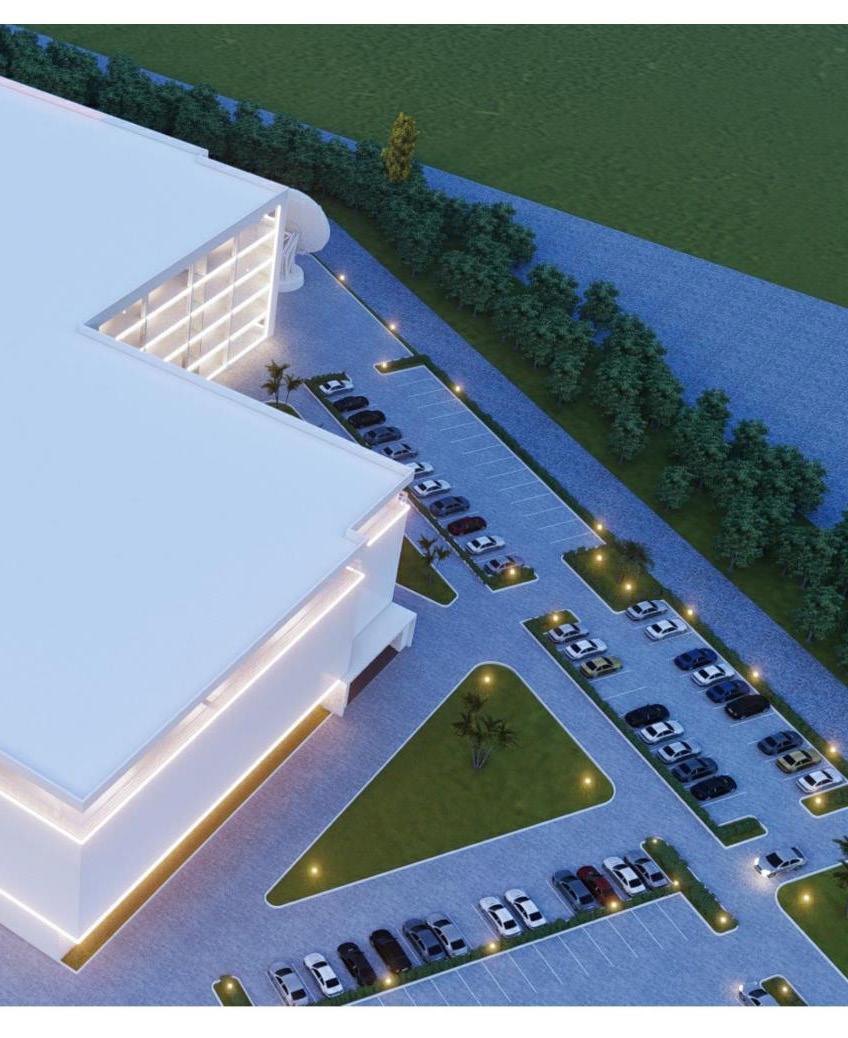
st Century Technologies Limited is a 25-yearold, mission-critical digital infrastructure and technology platform company with the singular aim of delivering robust infrastructure and skills to support a new Africa – one where technology, science and engineering are the drivers of transformation.
The business was built from the clear vision of creating state-of-the-art infrastructure in Nigeria while offering worldclass services to customers in support of critical industry problems through motivated talents and skilled workforces.
Now, as a leader in data centres, towers, power, technology platforms, and payment solutions, the business delivers reliable and secure services, with sustainability at the heart of everything it does. To do so, 21st Century Technologies strives to achieve five critical elements: infrastructure, customers, people, partnership and sustainability.
Moreover, the business is positioned to become the biggest provider of data centre capacity in West Africa with a total capacity of 75.5 megawatts across Nigeria’s capital, Lagos. This includes 1.5MW from five edge centres producing 300kW each. These data centre operations span three key sites: Apapa with 12MW, Lekki with 12MW, and Ikeja with 50MW — a site that is still under construction.

SITE: BILLINGS WAY, IKEJA, LAGOS 50MW DATA CENTER UNDER CONSTRUCTION




With Wale Ajisebutu, Fellow of the Institute of Chartered Accountants of Nigeria and CEO of 21st Century Technologies, we discover the amazing work being done to build Africa’s largest digital infrastructure.
Empowering Africa from Nigeria
Nigeria – where 21st Century Technologies is based – has opportunities totalling a trillion dollars just waiting to be tapped into. “With young people and an abundance of resources, Nigeria is home to huge opportunities,” Ajisebutu explains. “We sleep on gold in this part of the world. That’s the way I see it.
“In fact, one in every five people in Africa is from Nigeria, so the only enablement

“We will do anything humanly possible to make sure that we provide the necessary infrastructure, the right skilled people and global partnerships holding sustainability at the height of it all, to ensure we achieve these goals”
WALE AJISEBUTU CHAIRMAN/CEO, 21ST CENTURY TECHNOLOGIES
to tap these resources is building the right infrastructure. We decided to build a data infrastructure that digitally transforms the way we live, interact and do business. In Nigeria today, mobile technology is growing at a very high rate, with citizens now enjoying 5G.”
Technology has positively disrupted sectors such as education, financial services and healthcare, which has in turn enabled the convergence of various industry verticals. For example, telecommunication companies are offering banking services in Nigeria – providing evidence that the environment is evolving. Nigeria has proven to be very dynamic when it comes to technology. This is due, in part, to the
TITLE: CHAIRMAN/CEO
COMPANY: 21ST CENTURY
INDUSTRY: IT SERVICES
LOCATION: NIGERIA
Wale Ajisebutu is the Chief Executive Officer of 21st Century Technologies Limited, an Information Communication Technology Service Provider that was set up in 1997.

Previous to the arrival of the company he is presently leading, Ajisebutu was solely a business man who engaged in the business of importation and exportation of households, fashion and corporate items.

He launched into the ICT space in 1997 to fulfill his curiosity to explore greater challenges and become more relevant in the country.
Shortly after his venture into the sector, Ajisebutu became a big name that got many talking of his exploits
Government of Nigeria, which actively supports the sector.

“We have the best regulatory body in this part of the world, to be honest,” Ajisebutu says. “And technology business contributes 19% of our GDP. To me personally, that shows there are no barriers. There are no obstacles. You have to determine within yourself to take advantage of the opportunity. And the opportunity is there to be grabbed.”
To ensure the business is performing to the highest standards, 21st Century Technologies focuses primarily on five crucial elements: infrastructure, customers,
Honestly, we can’t do it alone
Transforming the entire energy system requires all of us to change how we do business, invest, govern, consume, and even live.
people, partnerships and sustainability – the business's core values.
To abide by the first element, infrastructure, 21st Century Technologies is currently building high-capacity, openaccess connectivity in Nigeria, which is resilient, reliable and protected. “What we’re building is very compelling,” Ajisebutu explains. “And that's what our customers want.”

The second element, customers, highlights that technology is not the customer's core business, but it is the core of their business. 21st Century Technologies is therefore well-positioned and fully mobilised to offer technology solutions as a service to their customers. “This ensures that our customers can focus on their core business,” Ajisebutu adds, “So, we become core to their business.
“That's our philosophy, and why we have been able to reach over 1,000 companies in Nigeria. We are doing incredibly well, providing services to all of them. Without creating value for the customers, we don't have businesses offering services today. We have to be able to create value. We have to be able to make it very agile and
“Poverty is now defined by lack of access to technology, rather than geography”SITE: 5, JEREMIAH UGWU STREET, OFF BABATUNDE ANJOUS STREET, ADMIRALTY WAY, LEKKI, LAGOS. 12MW DATA CENTRE

very compelling for them to be able to use the infrastructure."
To accomplish the third element, people, 21st Century Technologies prioritises youth's development. For example, the business assembled and trained youths to rewrite the history of technology, while building the most compelling tech academy in West Africa, opened by the Consul General of the American Embassy in Nigeria. The aim is to train 10 million people in 10 years – to offer technology to the people of Africa.
Sustainability, the fourth element, lies at the heart of 21st Century Technologies. “Throughout our infrastructures, we have installed solar panels,” Ajisebutu says.
“Our 1MW solar panel powers some of the critical load we have today, and we plan to extend it to 10MW in the near future.

“We don't see challenges. We see opportunities. The greatest obstacle opens to man – as far as I'm concerned – is ourselves”
WALE AJISEBUTU CHAIRMAN/CEO, 21ST CENTURY TECHNOLOGIES
Our mission is: ‘meeting the needs of the present without compromising the ability of future generations to meet their own needs’ (United Nations 1987).
“We have just acquired 20MW of power plants, and discussion is ongoing to acquire additional 80MW, hydrogen and gas power plants to power our facilities and participate in providing power to the grid, so we take sustainability very seriously. Our goal is to become the first company in Nigeria to reach net zero – we hope to achieve this as quickly as possible.”
The final element, partnership, is the key to everything the business does. “We cannot do everything ourselves, so we work with trusted partners to ensure we cover as much ground as possible,” Ajisebutu shares. “We select the best partners in the world – those
that are pioneering in their industries — to ensure we have experts in every area.”

“Oracle is one of our partners, and I don’t believe that there's another company in this part of the world that understands database software to the depth that they do. We’re also partnered with Schneider Electric – a one-stop-shop for data centre infrastructures and software – they provide excellent products by excellent people coupled with excellent service delivery, we cannot ask for more. In addition, Siemens is the most advanced power company in the world with local knowledge and a positive approach to the market, to supply the power plant with power that is run by hydrogen and gas at the same time.”
21st Century Technologies is also partnered with Amazon, Microsoft Azure, VMware,
SITE: BURMA ROAD, APAPA 12MW DATA CENTRE

Multichoice Group, Super Micro, MIT, Glo, Airtel, MTN, NIBSS, 9Mobile and Orange.
Transparency, innovation and integrity are driving forces behind 21st Century Technologies. For example, the business is building a digital hospital to support operations in Nigeria. “We take our customers very seriously,” Ajisebutu says.
“We're entering into a good partnership and committing to our goal is key. We don't see challenges. We see opportunities. The greatest obstacle opens to man – as far as I'm concerned – is ourselves. We all face a couple of bumps in the road, but they are just to wake you up.
“We live in an era of exponential growth with technology and the internet at the heart of it all,” Ajisebutu shares. “The global data generated continues to grow rapidly without any sign of slowing down.
“More importantly, poverty is now defined by lack of access to technology, rather than geography. So we must do everything humanly possible to make sure that we build compelling infrastructure in this part of the world. And 21st Century Technologies is at the forefront of that.”
The business, therefore, feels compelled to participate in the fourth industrial revolution, having missed out on the first, second and third. 21st Century Technologies is committed to building infrastructure in Nigeria to build a reference point for technology in West Africa. To do so, the business invests in seven key areas: Connectivity, Data Centres, technology platforms, payments, people, security and power.
“We are building 75.5-megawatt Data Centres. When people question the need for it, I do not listen to their reservations,

because I know Nigeria will occupy it at the appropriate time,” says Ajisebutu.
The business is also powering data centres with hydrogen and gas-powered turbine engines. This facility is used to support the government when helping the population, ensuring life is made comfortable for the citizens of Nigeria.
“We're committed to this country,” Ajisebutu says. “We will do anything humanly possible to make sure that we provide the necessary infrastructure, the right skilled people and global partnership holding sustainability at the height of it all, to ensure we achieve these goals.”
21st Century Technologies is not slowing down. In fact, the company is racing to be a significant part of history, through the continuous implementation of board and infrastructure projects – they plan to stay ‘ahead of the curve’.
The business accelerates innovations that will provide support for intensive network

“We live in an era of exponential growth with technology and the internet at the heart of it all”
WALE AJISEBUTU CHAIRMAN/CEO, 21ST CENTURY TECHNOLOGIES
evolution and fast-track last-mile assets to digital connectivity, paving the way for a fully digitised future and supporting the digital economy. 21st Century Technologies is therefore investing aggressively to ensure this is achievable in the future.
By implementing bold infrastructure, the business continues to accelerate innovations in the area of technology solutions as well as provide support for intensive network evolution such as 3G, 4G, and 5G fast-track last-mile access to digital connectivity. Further, they will continue to deliver unique infrastructure services to our customers, vendors and partners, enabling a fully digital future.
Moreover, 21st Century Technologies will continue to build a compelling platform that will help to tackle some of the world’s biggest challenges, spanning AI and quantum computing to healthcare, aviation, logistics and construction.

The business will continue to grow at a rapid rate to become the largest provider of information security solutions, helping customers and partners define the risk in their environment and select the right technologies and solutions.
21st Century provides value that enables and drives socio-economic growth. “Technology has become part of us,” Ajisebutu explains. “We cannot remove technology – it’s become part of everything we do today, and it will continue to expand. Technology is fast becoming a resource-liberating mechanism. More importantly, with our help, technology will support Nigerians to do great things in terms of technology transformation and development.”
 WRITTEN BY: SEAN ASHCROFT
PRODUCED BY: JAMES BERRY
WRITTEN BY: SEAN ASHCROFT
PRODUCED BY: JAMES BERRY

Helping to spearhead digital transformation programs across the process industry is no small feat, but Microsoft’s industry executive Yury Gomez is the perfect fit for the job.
Gomez – Global Chief Commercial Leader for Process Industries – has a supply chain background, which means that not only is she battle-hardened, but she also has a real-world understanding of what works and what doesn’t when it comes to manufacturing operations.

She has also been tempered by the seismic experience of COVID-19: “Supply chains have always existed. It’s always been the job of demand planners, forecasters, financial planners, and supply chain leaders to make sure products are at hand, and to take care of inventory control, product delivery, and customer satisfaction. But then COVID19 came along and, overnight, none of this worked any more. That was challenging, and I was thrilled to be on my mission to help customers overcome that challenge.”
Gomez began her Microsoft career as Global Executive Director for Pharmaceutical & Life Sciences Manufacturing and Supply Chain Digital Transformation, and had the opportunity to accelerate digital transformations during COVID-19 – a time, she says, “when customers looked to technology companies to help them overcome their supply chain challenges”.
Yury Gomez – Microsoft’s Process Industries lead – explains why the company’s tech ecosystem is driving change

Now, she leads digital transformation for all process industries – including the chemicals industry, specialty chemicals, pulp and paper, steel, pharmaceuticals, and the consumer packaged goods space.
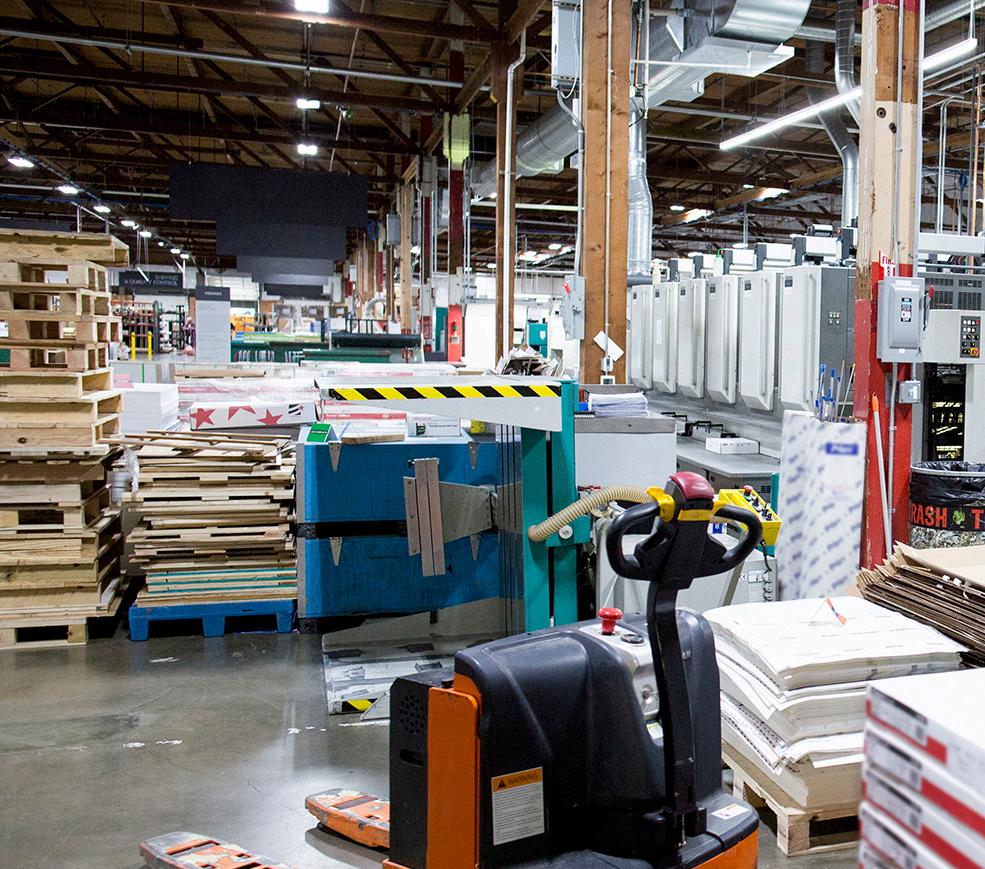
Gomez admits that, although most people know Microsoft as the company that created Windows and Xbox, for the past three years, “it has been doing a phenomenal job impacting industry digital transformation”.
Cloud helping Microsoft pioneer transformation projects
“With the advance of cloud computing and technology, we've had the opportunity to
YURY GOMEZ GLOBAL COMMERCIAL LEADER, PROCESS INDUSTRIES, MICROSOFT
“With advances in cloud computing and technology, we’ve been able to impact how industries think about the digital transformation journey”
impact how industries think about their digital transformation journey,” she adds.
The industry solutions and partner sales organisation of Microsoft is organised by industries. “In manufacturing there are two main kinds of companies: Discrete and Process,” explains Gomez. “For Discrete, you can think of aerospace, for example, but there is also process manufacturing, like chemical companies.”
Her role is to “elevate” customer journeys by “helping them envision how digital transformation can help them accelerate efficiency, increase return on investment, and transform the way they work”.
TITLE: GLOBAL CHIEF COMMERICIAL LEADER, PROCESS INDUSTRIES

COMPANY: MICROSOFT
LOCATION: UNITED STATES
Yury is the Global Chief Commercial & Strategy Officer
for the Process Manufacturing Industry division at Microsoft. She leads the GTM strategy and sales execution for process industries including chemicals, pharmaceuticals, CPG and others. In her role, she drives end-to-end digital transformation for Fortune 100 companies and many more working with engineering, sales, and partner teams.
Yury has over two decades of industry experience. Prior to joining Microsoft, she worked for Johnson & Johnson, Solvay, and various startups where she had multiple leadership roles leading innovation, manufacturing, E2E supply chain, commercial operations, and
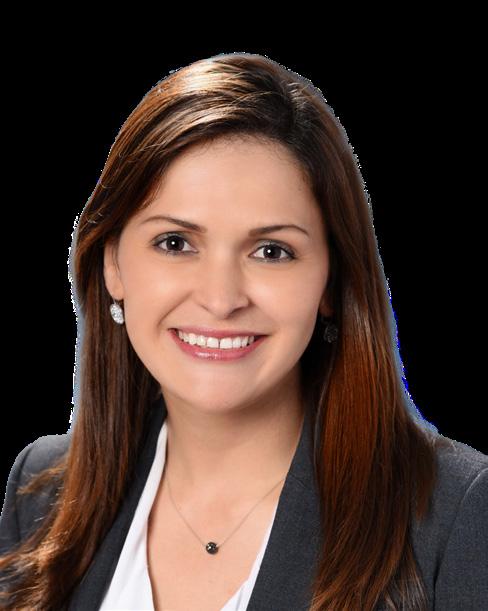



Supply chain digital twins must continue to evolve in order to drive optimal business outcomes. aThingz and Microsoft are delivering rapid transformation within global logistics organisations by fusing the informational (data), physical, and financial supply chains (the triple threat), and converging planning with execution (the double threat).
This new “Triple-Double” approach helps companies make faster, cost-optimised decisions that solve the most stubborn global logistics problem statements.
Learn more
aThingz is a unicorn supply chain and logistics solution provider enabling organisations to rapidly take cost out of their logistics spend while helping them be more agile and resilient. Customers reap accelerated value by week 6 with aThingz.
aThingz’s founders are Vijaya Neela, President & CEO and Kannan Ramachandran, Chief AI and Commercial Officer.
Vijaya establishes the supply chain transformation roadmap for customers and leads solution development and delivery engagements. Kannan is focused on aThingz’s AI strategy, managing customer relationships, and leading revenue growth initiatives.
“We are building solutions with an AI component that is a competitive differentiator for our customers. The speed and accuracy of business decisions rely on quality data. Our AI-powered purposebuilt data management solution for Supply Chain and Logistics can identify data anomalies, apply pattern
recognition techniques to standardize, cleanse, and improve the quality of data.”
Vijaya sets the vision for aThingz’s unique approach to global logistics management within the supply chain.



“We establish a customer digital twin model that overlays the physical, financial, and informational supply chain, and analyse historical planning and ongoing execution data to continuously calibrate the effectiveness of the plan. Planning and execution should not be considered two separate entities but should be a closed-loop process for optimal cost savings, efficiencies, and contextual insights.”
“We’ve been a strategic Microsoft partner for over five years,” says Kannan. “Our solution has been built ground up on their Azure stack using composable microservices. We leverage 100% of what Azure has to offer.”
“We will be co-piloting with Microsoft well into the future” says Kannan. “Our solutions use conversational AI, machine learning, deep learning, intelligent solvers, advanced heuristics, hyper automations, workflows, and alerts. Microsoft’s Azure stack has made it possible for us to drive accelerated innovation and business value for our customers.”
Gomez works with executives at C-Suite level to “better understand their business problems, how they are organised, and their operating models”. She then shares with them what Microsoft is doing in the wider world for other industries and customers.
She says: “I then go deeper into how Microsoft – with our cloud computing technology, our business applications and infrastructure – can help them transform.”

Crucially, she says, it is people who are always at the centre of my conversation with customers because “people are the lifeblood of how companies manufacture, operate and deliver products”. This approach informs Microsoft about the broader culture at the client, and the right journey and roadmap to help customers with a holistic approach to improve their operating processes and impact their workforce to work in new ways.

Microsoft empowering manufacturing firms to accelerate supply chain innovation
“We help transform everything – people, processes, data, and systems,” she explains, “so that these converge into a new journey that will transform how companies can do more with less, and in a more advanced way.”

So, what are the top supply chain challenges that her customers are facing today?
“The list is enormous,” she says, “but one thing we find most often is that customers need visibility.” This goes back to the effects of the pandemic. The main challenge is endto-end visibility in the value chain ecosystem.
“So visibility to multi-tier suppliers – not only tier one, but also tiers two and three. Also, visibility on customer data, how quickly inventory is turning over, and how the production systems are looking.”
This need for visibility has, according to Gomez, been heightened not only by the pandemic but also the knowledge that “market dynamics can impact supply at any time”.
“Take the Suez Canal blockage, or the Ukrainian war – the latter of which is causing a significant energy crisis impacting how companies operate and the manufacturing volumes they can sustain to maximise energy use.”
Despite difficulties, Gomez feels that, although the world is slowly returning to prepandemic just-in-time inventory models, today’s businesses want advanced digital tools to manage supply chain uncertainties.
Digital cloud-native technologies such as AI, analytics, blockchain, and IoT are helping customers build resilience and more visibility. Hence why end-to-end supply chain ecosystem visibility has become supremely important, she says “to improve production, planning, logistics, and cost efficiencies”.
Another challenge is how organisations can secure their supply chain “all the way to customers”, which she says makes logistics visibility and optimisation vitally important if companies are to achieve operational and financial goals.

Supply problems are in a constant state of flux Gomez and her colleagues at Microsoft seek to bring order to a disordered world, but she concedes that the challenges shape-shift from month to month, and that technology
also needs to change fast also to meet the needs of the evolving industry market.
“The pandemic is largely over but we’re continuing to see labour shortages that are impacting manufacturing industries, and manufacturing is a big piece of enabling the supply chain,” she says.
“People are also retiring younger, and there’s a lack of skilled people who know and understand digital technologies. Businesses have to operate faster to have competitive advantage, so all this is a challenge that’s added into the existing complexity.”
Gomez also references the rampant inflation occurring around the globe: “This is putting a lot of pressure on companies to digitise even faster to reduce their operating costs.
“So, a customer that has already started on the digital transformation journey and is getting close to a higher maturity stage – and that has visibility around suppliers, customers, and manufacturing production – is suddenly hit by spiralling inflation. It can sometimes feel like it’s difficult to keep up, especially if you are trying to do this on your own.”
She adds: “Taxes are also rising, and debt is increasing, and companies need to pass this down to consumers or customers. But to what degree? How far can they go before customers seek out a competitor, whose prices are lower?”
These are the kind of fluctuating dynamics that Microsoft is helping businesses tackle, mainly through its cloud solutions.
AI-enabled cloud products mark out Microsoft as unique for industry digitalisation
Its AI-enabled cloud products mark out Microsoft as unique. They demonstrate the company’s commitment to industryspecific standards and communities, such as the Open Manufacturing Platform, the OPC Foundation, and the Digital Twins Consortium.
Coupled with this is its innovative partner ecosystem, featuring composable and extensible solutions that seamlessly connect people, assets, workflows, and business processes.

“Our technology is giving businesses more intelligence and visibility than ever before, while making operations more adaptable,” she says.
Data is, it seems, the key driving force – both in the need for such solutions and the way in which they operate, as Gomez says: “We realise that though companies have a lot of data, it's siloed so they can't make much sense out of it. So we give them the infrastructure and technology they need to unify this data, helping them gain advanced insight into their supply chain to make better decisions.”
Referencing Microsoft’s partner ecosystems, Gomez says the company “leverages partners to help industry”,
adding: “Every customer wants to prioritise certain aspects of their supply chain, and we have partners that play very well to all these various needs – whether it’s end-to-end or for specific functions of the supply chain.
“We partner with ecosystem companies to bring the operational efficiency and agility that companies are looking for. Most importantly, we recognise customers’ need to simplify the way they work with vendors while ensuring a secure platform that’s flexible and extensible. We built Microsoft Supply Chain Center because we recognise this security and flexibility is very important.”
Gomez describes Microsoft as “the most trusted, secure cloud provider that provides the infrastructure and connectivity to partner solutions”, adding that the very nature of the platform is to recognise that “no one partner has everything a customer needs and so it provides a platform to enable an ecosystem of solutions”.
This ecosystem is helping Microsoft modernise supply chains, which by nature are complex, and involve many operational steps and activities, whether it’s manufacturing, procurement or logistics.
“There are many partners we work with to address the various challenges in supply chain,” says Gomez, “and we bring them together to light up the digital transformation of the supply chain.”
She adds: “Partners are the lifeblood of how we execute transformation. They have deep knowledge of the industry and know what, exactly, is the right solution. And then we, Microsoft, bring our secure and intelligent infrastructure technology
to enable our partner to deliver a solution that is secure and that leverages the best cloud-based digital capabilities and latest solutions to enable customers to become more agile and resilient.”
Businesses, she says, have discovered that operational and supply chain resilience is the key to their competitive advantage; to help them build this resilience, “I encourage customers to work with us to advance their digital journey”.
“The start point is always what they are doing today,” says Gomez. “What's your current state? What are your top operational problems? What is your digital maturity? Then we bring them the digital solutions and roadmaps to help them orchestrate, so they can better plan and optimise to improve their supply chain visibility, execution and logistics models.”
“Most importantly,” she adds, “we deliver all of this in a secure manner, meaning customers can really embrace digital transformation.”
This is where Gomez’s supply chain experience stands her in good stead.
She says: “Before Microsoft, I was part of industry myself. I was a leader of supply chain, and so I understood that supply chain people often don't know how to get started on digital transformations.
“To build resilience, supply chain leaders have to understand how digital capabilities can enhance each step of the supply chain operational process. It’s about working with partners and getting a dynamic going. I think that’s how companies can start their journey toward building a more resilient supply chain.”


 WRITTEN BY: MARCUS LAW
PRODUCED BY: LEWIS VAUGHAN
WRITTEN BY: MARCUS LAW
PRODUCED BY: LEWIS VAUGHAN

With more than 460 million ‘Pinners’ using its platform each month, Pinterest is powered by its data architecture, ML and experimentation platforms
Pinterest is the visual inspiration platform people around the world use to shop for products personalised to their taste, find ideas and crafts to do offline, and discover the most inspiring creators.

Beginning as a tool to help people collect the things they were passionate about online, today more than 460 million people flock to Pinterest’s platform every month to explore and experience billions of ideas.
Central to powering this platform is data engineering on a vast scale – as Dr. Dave Burgess, VP of Data Engineering at Pinterest, explains.
“In Data Engineering we create and run reliable and efficient planet-scale data platforms and services to accelerate innovation at Pinterest and sustain our business,” he says. “We do everything from online data systems to logging data, big data and stream processing platforms, analytics and experimentation platforms, machine learning (ML) platforms, and the Pinterest Developer Platform for external developers to build applications using Pinterest APIs.”



As Burgess explains, one of the biggest challenges in data engineering is improving Pinterest’s developer productivity, which is measured through surveys and the time taken to complete tasks: “For example, the time it takes to train and deploy a new machine learning model or run an experiment.”


From the survey results, a developer productivity NPS (Net Promoter Score) is calculated, from +100 to -100. “When I first started at Pinterest four years ago, our developer productivity NPS was -5 and now it’s +65.”
Since joining the business four years ago, Burgess has overseen the replacement of many of Pinterest’s data engineering systems with the latest in open-source software. “We’ve also built machine learning and experimentation platforms on top of our data platform, increased ML Engineering velocity by 10x and run hundreds of new experiments every week,” he adds. “We’ve also democratised our data so that everyone in the company can use data to make decisions, build applications and experiment. All of this has significantly improved our agility, developer productivity, and the products for our customers.”
2010 Year founded
$2.8bn Revenue in 2022
4K+ Employees around the globe
460m+ Monthly users
Pinterest’s machine learning and experimentation platforms
‘Under the covers’, according to Burgess, Pinterest is a ‘massive ML machine’: “We use ML to generate recommendations for our home feed, search results, related products, advertising, and also have augmented reality for our Pinners (the affectionate name we call our users) to see makeup on their face.”

Central to Pinterest’s success is its ML platform. Used to power everything from product recommendations and image categorisation to online advertising and spam filtering, Burgess explains that it enables Pinterest’s engineers to be significantly more productive.
“Our ML engineers can iterate much more quickly, building and deploying new ML models in a day, performing offline training
“In data engineering, we create and run reliable and efficient planet-scale data platforms and services to accelerate innovation at Pinterest, sustaining our business”
DR. DAVE BURGESS VP DATA ENGINEERING, PINTEREST
data engineering is powering Pinterest’s global platform
to iterate and improve their models offline before testing them with real production traffic, and have production ML systems be automatically monitored and self-healed,” he comments.
One such tool is Pinterest Lens, a visual search tool allowing users to search for ideas and products using images. The tech trick behind this feature is computer vision, which identifies objects in photos to suggest related content, allowing users to find similar items on Pinterest. These innovations, Burgess explains, are powered by open-source and internal advancements in ML technology.
“Our ML platform is built with a combination of open source ML technologies, like PyTorch, Tensorflow and MLFlow, and tech that integrates with our own big data and online systems,” he explains. “That enables us
to train ML models and automatically deploy them into serving systems for ML inference.”
Pinterest is an organisation defined by a culture of experimentation. As Burgess describes, its Experimentation Platform encourages experimentation and datadriven decision-making throughout the whole organisation, while also enabling the organisation to test thousands of new ideas.
“Our Experimentation Platform is designed to support rapid iteration and the continuous improvement of our products, and allow us to quickly test and refine new features, user interfaces, and other elements of the user experience. By using data to guide our product development decisions, Pinterest is able to better meet the needs and preferences of our users, as well as increase inspiration.”


Pinterest had long recognised the need to optimise its data storage system. Using HBase, the image sharing platform was carrying a large footprint, with more than 50 clusters and data totalling one petabyte. Enter PingCAP, an enterprise company launched in 2015 by seasoned infrastructure engineers frustrated with the way databases were managed, scaled and maintained.
Seeing no capable solutions on the market, they built TiDB, an advanced, open-source, distributed SQL database for powering modern applications with elastic scaling, realtime analytics and continuous access to data.
“Pinterest’s storage and caching team wanted to find their next-generation, unifying storage system,” explains Liquan Pei, Principal Technologist at PingCAP. “As a NoSQL database, HBase offers a very simple key value interface, but the business logistics are complex. To add new features, Pinterest had to build additional layers on top of HBase, which incurs a very high maintenance workload.” With those motivations in mind, Pinterest
evaluated more than 15 solutions and settled on TiDB in 2020. Pei says the reason for Pinterest choosing PingCAP came down to TiDB’s robust technical capabilities and PingCAP’s high-quality enterprise support.

TiDB is set to bring a host of benefits to Pinterest’s day-to-day operations. When carrying out the project, PingCAP evaluated Pinterest’s secondary index services system and, using TiDB, achieved better performance and 80% cost reduction.
“Because of TiDB’s capabilities, we were able to reduce the system from six components to one, greatly reducing the maintenance burden,” adds Pei. In the long run, TiDB’s expressiveness and scalability should also help Pinterest’s IT teams from a practical perspective. Pei continues: “People from Pinterest will enjoy peace of mind because a lot of work is handled by TiDB, so they can focus instead on more impactful work.”
As Pinterest went in search of a next-generation, unifying data storage system, the company found the perfect solution in PingCAP’s TiDB
One of the number of changes made in Pinterest’s data systems involves the building of a next-generation data warehouse and the transition to a Data Mesh: an emerging approach to data architecture that aims to address the challenges of managing large and complex data environments, which was first introduced by Zhamak Dehghani – a software architect at ThoughtWorks – in 2019.
“At a high level, Data Mesh is a decentralised data architecture that emphasises data ownership and autonomy,” Burgess explains. “Rather than having a central data team manage all the data for an organisation, Data Mesh encourages each business unit or team to take ownership of their own data domains, managing their data in a way that is best suited to their needs.”
This approach involves breaking down data into smaller, more manageable domains that can be owned and managed by individual teams. Each team is responsible for the data within their domain, including defining the schema, ensuring data quality, and providing access to other teams that need to use the data.
To enable collaboration and sharing across domains, Pinterest has a catalogue of schemas and metadata stored in Apache DataHub, has standardised its data vocabularies and metrics, has tiered the quality of its data, and has integrated its open-sourced Querybook platform to collaborate and share SQL queries.
“Querybook is an open-source data collaboration platform developed by Pinterest,” Burgess explains. “It has a userfriendly interface for data analysts and engineers to collaborate on data analysis

tasks, allowing them to share queries, datasets, and insights with one another. It’s the most popular and highly-rated internal tooling platform at Pinterest.”

As Burgess describes, Querybook also benefits from advanced data analysis capabilities for ad-hoc data analysis, generating visualisations, and even building machine learning models: “We’ve also built a ChatGPT-like interface to automatically generate and execute queries from a text business statement. For example, you could ask it how many daily active users there are on Pinterest over the past month and it will generate a SQL query with the right tables and fields.”
“Overall,” Burgess asserts, “Data Mesh represents a new way of thinking about data architecture that helps us to manage our large and complex data environment more effectively, while also fostering greater collaboration and innovation.”
DR. DAVE BURGESS VP DATA ENGINEERING, PINTEREST
“By using data to guide our product development decisions, Pinterest is able to better meet the needs and preferences of our users, while increasing inspiration”
Building a successful partner ecosystem Pinterest’s Data Engineering department works with a number of third party partners, including AWS for cloud infrastructure and Percona for MySQL support, along with a number of other companies on open source software such as Netflix, Lyft, AirBnB, AWS, Starburst (for Presto/Trino), StarRocks Technologies, and Preset (for Superset), as well as close collaborations with the open source community.
Another of Pinterest’s partners, PingCAP, has assisted with the deployment of its TiDB system: a distributed SQL database engine that provided users with better data consistency, reducing tail latencies by 30-90% while reducing hardware instance costs by more than 50%.


“We had been using an older version of HBase for many years, which is a scalable open-source, distributed, column-oriented NoSQL database,” Burgess explains. “We’ve made many fixes to HBase over the years to make it faulttolerant at our scale on AWS, used it for different kinds of use cases, and added a lot of functionality on top.”

“The biggest pain points with this older version of HBase were: the total cost of ownership to maintain and run this; limited functionality, which led to lower engineering productivity and increased application complexity; the lack of data consistency across tables, affecting our users’ experience; and the scalability requirements our internal users wanted to run at.”
This partnership with PingCAP to use TiDB is already reaping benefits, providing better data consistency, a lower total cost of ownership, and more powerful features than the previous solution, HBase.
“As a NewSQL database, TiDB provides a scalable solution in a huge problem space for use cases that need stronger consistency or richer functionalities”, Burgess explains. “It fills in the gap between our existing SQL and NoSQL systems, allowing developers to build
storage applications faster without making painful tradeoffs.”
“All these factors combined enable us to more easily build and scale businesscritical applications including shopping catalogues, advertising index systems, trust and safety systems and many more.”

“Data Mesh represents a new way of thinking about data architecture that helps us to manage our large and complex data environment more effectively, while also fostering greater collaboration and innovation”
DR. DAVE BURGESS VP DATA ENGINEERING, PINTEREST

“We will make it easier for Pinners to shop for the things they love. Pinners will be able to go from being inspired to making this a reality in their lives”
DR. DAVE BURGESS VP DATA ENGINEERING, PINTEREST
What are Pinterest’s main aims for the next five years?
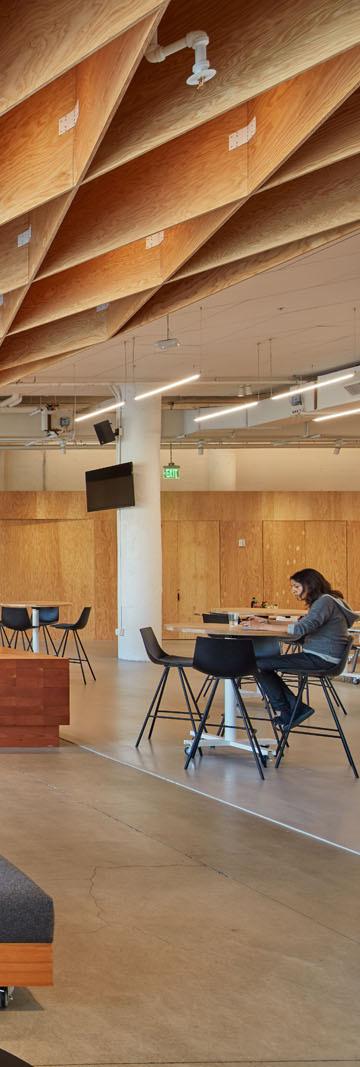
As Burgess describes, central to Pinterest’s plans for the future is innovating and creating new technologies and products that put Pinners first. “This means enhancing the user experience and driving growth internationally.”
The organisation will also look to improve its advertising products and expand its advertising partnerships with businesses of all sizes, while becoming a more sustainable and socially responsible company. Reducing its environmental impact is part of the latter, as is promoting diversity and inclusion, in addition to supporting causes related to social and environmental issues.
“We will make it easier for Pinners to shop for the things they love. They’ll be able to go from being inspired to making this a reality in their lives,” Burgess adds. “We will also be a more sustainable company, with almost 100% renewable energy for our operations. This includes renewable energy for our offices and data centres.”
With the space moving quickly, making the most of the opportunities presented by developments in ML and AI will also be central to Pinterest’s success going forward.
“This space is changing quickly with the recent advances in Large Language Models, Stable Diffusion, and Transformer models,” Burgess concludes. “We have the ability to generate images and text answers, augment ML models with more data, recognise objects in images, and create an augmented reality. We can also significantly improve our productivity with AI-assisted bots that generate code and answers.”
“There are many applications of this and it’s going to be a game changer.”
 WRITTEN BY: TOM SWALLOW
PRODUCED BY: THOMAS LIVERMORE
WRITTEN BY: TOM SWALLOW
PRODUCED BY: THOMAS LIVERMORE

Hands up, then, who saw this one coming…a leading telecommunications provider giving similar treatment to cars as it would handheld digital devices? While it would have made for a ludicrous conversation a decade or so ago, connectivity has become a staple in modern life, naturally progressing towards various applications in the automotive sector.
EV manufacturers have embarked on a journey that will mark its place in history as the most significant evolution of transport, which also comes with a lot of responsibility to protect drivers and passengers in alignment with their contributions to global sustainable change.
This can be witnessed throughout countless connectivity exploits and, as explained by David Brown, Head of Connected Mobility Product Portfolio at Vodafone Automotive, telecommunications and digital services play an integral role in the future of electrified mobility.
The services provided by Vodafone Automotive – a global service subsidiary of Vodafone – include hardware and software and Brown leads the product management team to deliver next-generation connectivity-based services to customers looking to improve road safety and vehicle security, efficiencies, and emissions reduction. Non-connected services are supplied as upgrades to on-board vehicle systems and connectivity-based services
are fulfilled through multiple solutions, including vehicle-to-everything (V2X) services, which enable communications between cars and their surrounding infrastructure, driving behaviour monitoring and crash reconstruction.

In the vehicle security area the company offers professional services to locate and retrieve cars to minimise vehicle losses, as well as solutions that dynamically predict the probability of an event occurring over a certain period of time, such as notifying drivers on risky zones.

DAVID BROWN HEAD OF CONNECTED MOBILITY PRODUCT PORTFOLIO, VODAFONE AUTOMOTIVE
“If you break down a telematics solution into its constituent parts, you’ve got the hardware, you’ve got the connectivity, the platform, and the service”



Through a passenger-vehicle lens, Vodafone Automotive’s solutions enable peace of mind that the latest electrified cars – as well as ICE vehicles in previous years – are the safest they can possibly be while also achieving greater energy usage and other benefits. Ultimately, the mission of the company is, as Brown states, “about making mobility safe, secure and accessible.”

These three words form the pillars of innovation that Vodafone Automotive focuses on, which also carries over to fleet

“Time to green’ means realtime vehicle communication with traffic lights to reduce idling time”
DAVID BROWN HEAD OF CONNECTED MOBILITY PRODUCT PORTFOLIO, VODAFONE AUTOMOTIVE
operations and other commercial uses. As far as safety and security goes, the goal is pretty simple: to reduce the number of stolen cars, traffic issues and accidents occurring on public roads each year. Overall, it means to help move forwarda more sustainable and safe mobility.
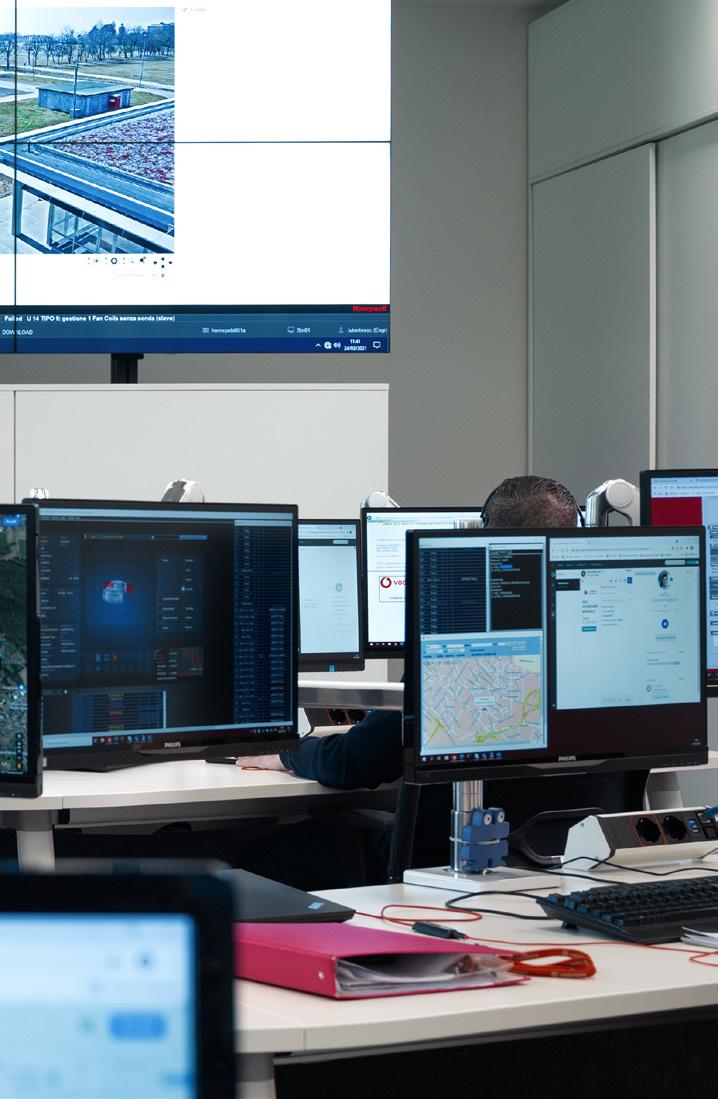
“The first pillar is really focused on the safety side of things and the aim to reduce road deaths to zero,” says Brown.
This is where cooperative connected mobility services generate key benefits that really come into play, particularly in cities and other urban environments where infrastructure is enabled with V2X
TITLE: HEAD OF CONNECTED MOBILITY PRODUCT PORTFOLIO
INDUSTRY: MOTOR VEHICLE PARTS MANUFACTURING
LOCATION: UNITED KINGDOM
David joined Vodafone in 2010 and took over product management responsibility in mobile phone devices, then in motor insurance telematics. In this role, he created a new programme function to deliver customer onboarding for complex solution deployments of insurance telematics in Northern and Central Europe. In 2019 he broadened his responsibility to lead a team of product managers and define a new product portfolio across all key verticals - Insurance, Fleet and Automotive. David holds a degree in Managerial and Administrative Studies from the University of Aston.




technology, which provides an added layer of safety to drivers while on the road. Vodafone’s product is appropriately named Safer Transport for Europe Platform (STEP) and introduces connected capabilities to provide more safety measures to drivers and vulnerable road users.
Leveraging the 5G and edge cloud capabilities developed by Vodafone, the automotive segment is about to tailor its architecture to enable V2X capabilities and package STEP on top of it. The idea of the cars having the ability to connect with others in the vicinity will encourage a more cooperative mobility ecosystem
“Being part of Vodafone, we are able to access 5G technologies and edge cloud, which, with competence in architecture design and V2X software developments

from Vodafone Automotive, has allowed the development of that capability for the entire ecosystem,” says Brown.
Working in the insurance realm is key for Vodafone Automotive, as it supports the overarching goal of road safety. Citing an example of the great work achieved by Vodafone Automotive, Brown explains a scenario where its connected solution not only benefits the drivers, but also provides a call handler with more scope for a quality service.
“When visiting a UK-based insurer that provides services to brand new drivers on the road, I was able to see first-hand how our solution makes a difference,” says Brown.
What Brown saw was how Vodafone Automotive’s solution enabled call managers to handle customer cases much more
effectively, using data to gain clearer insight into the incident, whether it be low energy crashes or more serious accidents.

By leveraging telematics services, insurers have—for many years— managed the risk of a wide range of drivers. From the perspective of new road users, this is to reduce insurance premiums, but these days we’re beginning to see the real benefits to providing vehicle usage data.
“Bearing in mind these can often be young drivers, understanding how our technology can help provide a level of assurance in high stress situations really brought it home for me. The impact was that our service meant the insurer could focus on the young drivers struggling in a time of need.”
This goes to show the impact that connected mobility has and how Vodafone

“We have Vodafone behind us, which gives us collaborative access to the 5G technologies and Edge Cloud and has allowed the development of V2X services a lot quicker”
DAVID BROWN HEAD OF CONNECTED MOBILITY PRODUCT PORTFOLIO, VODAFONE AUTOMOTIVE
Automotive is able to integrate with infrastructure and businesses to not only achieve its goals in line with its own pillars, but breed a new quality of service to its partners’ customers. Leveraging some of the best technologies on the market and almost 15 years’ experience in helping insurance to digitalise policies, the company provides that an insightful approach to insurance, which is but one way that it contributes to safety.
“If you break down a telematics solution into its constituent parts, you’ve got the hardware, you’ve got the connectivity, the platform, and the service – we play in all these parts. Being part of the Vodafone family the connectivity is naturally a core part—we have our factory for the design and manufacture of hardware, and of course we have the platform and the service network covering over 50 countries. The fact that we can bring all of those together makes us unique and makes us a leader in the market,” Brown says.

Much like the digital ecosystems that enable businesses and homes to function, road transport is entering a new era of connectivity that will allow devices to share and access data from vehicles and infrastructure components surrounding them. An example of this from a safety perspective is how assessments are made of the road ahead, which has been adopted on major highways, but is still yet to leverage this to the highest degree.
With vehicles connected to other vehicles and data shared with infrastructure – which will in turn be shared with other road users – this unlocks new functions to enable realtime insights on the road – this is V2X.
With V2X, road users could begin to see real-time updates in the vehicle made useful to them as they travel. Vodafone Automotive

recognises the potential of V2X in ensuring that any road collisions or diversions are reported and managed instantly to the driver, preventing any further incident or dialling out inefficiency.
“The key point is that this communication needs to be instant to deliver value to the road user. This is possible thanks to our 5G networks and multi-edge computing,” says Brown.
Not only can such a solution save time and emissions in cities, but with drivers more aware of the road condition changes, they can focus on the surrounding environment, which could reduce collisions with nearby cyclists, pedestrians, and other cars –fostering a more mindful approach to travel.
A great example of V2X is being designed and implemented by Vodafone which Brown explains allows drivers to determine, what he calls, ‘time to green’.
In March 2022, Vodafone launched STEP to enable faster and more efficient safety information distribution with road users using its proprietary technologies.

To be successful in this, the company ensures an agnostic solution that is compatible with all in-vehicle navigation systems and third-party apps to provide access to real-time traffic and collision data.
Road users will be directly connected with transport authorities to gain a better understanding of the road conditions and leverage these insights to avoid accidents, congestion, and delays on the road.

The issue of road congestion can be seen globally with more cars on the roads in cities, but access to real-time data has the potential to limit this by keeping drivers informed. This would be enabled throughout connectivity — data sharing between cars and traffic lights.
“For example, you are in London and you are stuck in traffic. You are at the traffic lights, traffic lights turn green, you’ve raced to the next set of traffic lights, and by the time you get there, they’ve turned red. You’re then idling for 30 seconds ,” Brown says.

“‘Time to green’ effectively means communicating with those traffic lights and
the road infrastructure, it will tell you when the next set of traffic lights are due to change and recommend your approach to the traffic lights so that, by the time you get to them, you don’t need to apply the brakes – losing all momentum in the vehicle and using lots of energy to get the car back up to speed.”
We see V2X aligning with autonomous vehicles, whereby each system can complement each other to create extra layers of protection for drivers, passengers, and pedestrians.
“This is where the system, through maybe cameras or through smartphone applications, is able to determine where

pedestrians and cyclists are in a shared space of the road,” Brown says.
“An example is with lorries, where quite often cyclists ride alongside. You can have a warning system that tells the lorry driver, even though the cyclist is in their blind spot, they are there – ’proceed with caution’.

Though all these solutions show promise for a safer, more sustainable road network, it requires collaboration amongst a variety of players such as OEMs, roadside infrastructure providers, public authorities and vehicle fleets across Europe. Particularly in the realm of EVs, the demand and readiness is there for connected car services, but education plays
a key role in enabling progress – revamping the road infrastructure network. Future prospects are bright for connected mobility and will even present new opportunities later down the line.
“Our focus is mainly on safety and security. Of course, as the applications and use cases evolve there will continue to be interesting and wide ranging commercial benefits. We want to make roads safer, and STEP will enable us to do that. Understanding how drivers interact with it will enable us to delve deeper into connected mobility.”


WRITTEN BY: MARCUS LAW

PRODUCED BY: TOM VENTURO


Few startups can say they have a background like Eviden. A new company carved out of French multinational information technology service and consulting company Atos, Eviden’s mission is to help its clients accelerate their digital future.
As Daniel Sinni, Global Head of Innovation and Digital Transformation at Eviden’s Financial Services & Insurance business, explains, the purpose of Eviden is to be the leader in data-driven, trusted, and sustainable digital transformation.
Speaking with Sinni just two weeks after the official launch of Eviden, his enthusiasm is clear. “We just learned the name Eviden,” he says. “Eviden evokes this response of creating new paths forward, transforming possibility into reality, and that’s really what the company is going to drive. We are all super excited to go!”
“It’s rare that you can say you’re part of a €5bn startup, but that’s what Eviden is,” Sinni adds. “We have nearly 60,000 people and 2,100 patents. It is purpose-built to take our clients into the next world of digital transformation, which includes digital integration. Our clients are really struggling with their amalgamation of heritage systems and processes, as well as integrating with the highly disruptive technologies, ecosystems and operation models that drive value. That’s where a lot of the problems need to be solved, and I’m really proud to be part of that solution.”

As Sinni describes, his team helps financial services and insurance customers realise the benefits of digital transformation. Central to this journey is the creation of a new

operating model. “You can’t do that without a team of really passionate experts in those different domains,” Sinni explains. “And then you need a company that is laser focused on that outcome, which Eviden is, as well as having the capability and knowledge of those heritage systems. This is essential to success, tying it all together”
When you take a company the size of Eviden and combine it with the resources of Atos, it’d be difficult to dream up many other companies, globally, that have as much expertise at scale when it comes to enabling digital transformations.
“Many of the companies that we deal with – specifically in the case of financial services
“It’s rare that you can say you’re part of a €5bn startup, but that’s what Eviden is”
DANIEL SINNI GLOBAL HEAD OF INNOVATION AND DIGITAL TRANSFORMATION, EVIDEN
and insurance – they’ve been around for 100 years, and have heritage systems and regulatory constraints that are really heavy,” Sinni explains. “If they were born today, they would be a FinTech company and they would be fast and agile, but they’re not; they’re a monolithic enterprise aspiring (but often failing) for digital change.
“There are not many companies in the world that can help bridge the two,” Sinni adds. “We understand the heritage systems, and now we’re bringing them into the new world of these operating models and these disruptive technologies. That’s what makes my group really unique and special – because we have that DNA and we have been there done that….”
TITLE: GLOBAL HEAD OF INNOVATION AND DIGITAL TRANSFORMATION
COMPANY: EVIDEN
INDUSTRY: IT SERVICES
LOCATION: NEW YORK, US
Daniel Sinni has spent his career advising Fortune 500 clients in digital transformation - specifically disruptive open-source software, AI and cyber risk management.

After graduating from the University of Delaware and joining the emerging telecoms space with Network Plus, Sinni worked for Deloitte before co-founding N-Tier Discoverya premier legal process outsourcing and AI consulting firm where he would serve as COO.
With the business acquired by RVM Enterprises in 2012, Sinni would rejoin Deloitte, before serving in various leadership roles for SunGard Availability Services and Dell EMC Global Consulting Services, before joining Pivotal Software.
Now at Eviden, he is globally responsible for its Financial Services & Insurance Consulting’s Digital Transformation and Innovation Market Leaders, Blockchain/ Digital Assets practice, Federated Fraud/Financial Crime, AI, crosspractice solutions, and strategic acquisitions.

foundation of a successful brand
FALKOR SI is the trusted blockchain platform that’s easy to use
With FALKOR SI, and ByzGen’s expert support, innovators at Atos deploy blockchain solutions that make digital and data integrations reliable and secure.
ByzGen. We make blockchain your business.

Learn more

Be innovative. Reveal new revenue streams. Help your clients build a trustworthy business.
When it comes to data, blockchain is a secure and auditable integration solution. It’s inherently trustworthy. Which is why in regulated sectors, consultants like Atos use FALKOR SI when companies need to share data quickly, securely, and without compromise.
FALKOR SI is ByzGen’s enterprise blockchain platform. Blockchain improves data quality and integrity by maintaining an immutable record of data and transactions – everyone involved can access accurate records. Blockchain platforms like FALKOR SI help people exchange data, make better decisions, and comply with regulations. This makes FALKOR SI ideal for finance, legal, manufacturing and supply chain – sectors that depend on security, trust and traceability.

Atos use FALKOR SI to build secure and scalable digital integrations, fast. With this proven blockchain solution in their hands, consulting leaders at Atos and its new carve-out company Eviden, are winning new work and increasing the value of existing contracts.
ByzGen’s FALKOR platform is built for system integrators like Atos and Eviden. Our partnership with ByzGen is a perfect example of why it is important to work with a proven partner who understands how they can help you as a progressive digital transformation partner.
Daniel Sinni, Global Head of Innovation and Digital Transformation, Eviden.
Unlock new revenue streams with FALKOR SI
FALKOR SI, coupled with ByzGen’s consulting services, makes solving complex data challenges simple. Projects that might have taken years to deliver value now do that in weeks.
Using FALKOR SI our partners have:
y Reduced operating costs by 80% for a regulatory reporting service
y Helped a manufacturer reduce power usage by 20%
y Won projects worth £50m
FALKOR SI makes deploying your blockchain solution quick and easy. Backed by ByzGen’s expertise, it’s a tool you can trust.


Central to the aim of Eviden is to help organisations on their journey from digital transformation to one of digital integration at scale.
“The pandemic made it really clear that the world has fully embraced digital,” he explains. “We’ve learned that technology is a massive enabler if used the right way, and if you integrate it into your operating model, into the way that you do business and connect with your customers - that’s extremely powerful.”
With startups using platforms such as blockchain as well as new generative AI capabilities, the question of how best to integrate them into legacy operating models and heavily invested systems is
“Eviden evokes this response of creating new paths forward, transforming possibility into reality, and that’s really what the company is going to drive”
The €5bn startup helping clients embrace digital integration
WATCH NOW
DANIEL SINNI
GLOBAL HEAD OF INNOVATION AND DIGITAL TRANSFORMATION, EVIDEN
an ongoing challenge. This is often new territory for most companies and they struggle holistically to get their arms around how best to tackle this disruptive change. Not to mention the evolving global regulatory and compliance landscape.
“You’d be surprised how many mission critical things still run on a mainframe,” Sinni comments. “Yes, these systems are known to be reliable but also a major barrier to new opportunities and often very expensive. Not to mention those folks are retiring, and those skill sets are going away fast. The question today is how we fix that in a way that doesn’t break the bank and increase risk, yet drives the agility and the new opportunities all companies want to accelerate. You need to have domain expertise on both sides of the coin here to win.
“That is digital integration, and that’s where we are right now. That’s what’s painful, that’s what’s hard. That’s what can be expensive and high risk. And to achieve that, you need an experienced partner. At Eviden, we can be your trusted partner in this journey end-to-end.”
However, as Sinni warns, there is no “silver bullet solution” when it comes to digital integration.
“ To lift and shift something into the cloud is arguably straightforward,” he says, “but making that work with low toil, making it compliant, and making it tie into the heritage systems with low friction is very, very hard.”

When it comes to migrating from legacy platforms, digital transformation or
57,000 People
2,100 Patents 50,000 Digital Certifications
€5bn Revenue

strategic innovation, Sinni describes the five ‘S’s: speed to market, stability, security, scalability, and savings. As he explains, technology for the sake of technology should be avoided.
“The first S is speed to market. Can you get to the market faster than your competitors? Can you use technology as a competitive weapon?
“The second,” he adds, “is stability. There are a lot of challenges in technology around the stability of systems. They’re often ducttaped together... When things are unstable, customers can’t get into systems, things don’t work well. You must have consistent and reliable platform stability at scale.
The third is advanced security postures. “Security has to be the cornerstone,” Sinni explains. “Companies don’t tend to exist when they’re breached and trust is compromised.

“The question today is how we fix that in a way that doesn’t break the bank and create risk, yet drives the agility and the new directions that we want to go”
DANIEL SINNI GLOBAL HEAD OF INNOVATION AND DIGITAL TRANSFORMATION, EVIDEN
“The fourth thing is scalability. Can you meet your customer’s demand at scale? You need cloud-like scalability, you need elastic services around that. You need resilient automation of those things to be able to scale, to meet the demands so that you can continue to service your customer’s needs.
“And, then, last is really savings,” he explains. “Ultimately, there’s always an investment or sometimes they pay for themselves. If you do rapid smaller projects, you get success and you build on top of that - it becomes infectious in an organisation. Business funding becomes more accessible. That’s ideally the approach - to have things pay for themselves by earning the right to the next phase and continuality winning as a team.
Key to all of this is using technology based on business outcomes. “If you don’t have those five S’s, then you probably shouldn’t move forward with certain initiatives,” Sinni asserts. “There are pieces of technology everywhere, but it doesn’t make sense unless it accelerates your business. Tech tinkering without the support and collaboration of the business is often a fool’s errand.”

Working with companies like Google, Microsoft, VMware, Eviden benefits from its relationships with a number of large and small partners. One such partnership, with ByzGen, is particularly special.
– streamlines data exchange by empowering decision-makers with a safe and secure process to share sensitive information.
Blockchain is often aligned with only cryptocurrency, which has seen its share of hype and fraud these past years. But as Sinni explains, thinking of blockchain
as an infrastructure and a decentralised ecosystem can be very powerful and can solve important enterprise challenges.
“ByzGen’s FALKOR platform is built for system integrators like Atos/Eviden,” Sinni explains. “Our partnership with ByzGen is a perfect example of why it is important to work with a proven partner who understands how they can help you as a progressive digital transformation partner.
“We’ll give them use cases, they give us use cases, and we iterate on that together. We have trust together built through successful projects with our clients. We’ll go to market with them, they’ll go to market with us, and we co-innovate together to be able to drive these outcomes with our clients. ByzGen is also part of our Eviden and Atos innovation programmes that we call Scaler and Horizons.
“It’s a very special relationship; it’s one that’s been very successful, and we’re going to continue to build on that with Eviden.”
With the accelerated capabilities of AI taking off in recent years, this topic will continue to dominate as organisations learn more about how they can harness its potential.

“There are some amazing use cases that are coming out – banks, firms and institutions are already modifying their operating models to utilise AI,” Sinni comments. “Those use cases are going
to expand as the models become more intelligent and integration will be critical to success. I also think that there’s going to be some consolidation in fintechs, which could be an opportunity for Eviden.”
Sinni also predicts that usage of Web3 technologies like blockchain and IoT technology will continue to increase.
“Juvenile crypto projects and fraud will decrease and successful projects with true utility will be further advanced given strong developer and user communities,” he says. “Financial services companies are already using blockchain as digital asset infrastructure. But blockchain can also be used as customer loyalty solutions to create new opportunities, democratise data, and enhance brand loyalty. The convergence
“ByzGen’s FALKOR platform is built for system integrators like Atos”

of these new technologies, use cases and challenges is exciting to be a part of.”
Fundamentally, when it comes to regulation, taking a balanced approach is key so as to not impede innovation but provide proper guard rails. “AI will be one of the most disruptive technologies in many industries and as a society we need to ensure its nefarious capabilities are mitigated,” Sinni asserts. “If we can do that, we will unlock these new possibilities that will be driving the next amazing discoveries and opportunities.
“Those things excite me, and that’s going to be happening at a rapid pace. The digital content and breakthroughs will be built from a lot of these newer technologies. It will be one hell of a ride!”
As Sinni explains, the near future will be one of promoting and proselytising Eviden as the business launches.
“We’re going to be showcasing all of these really cool digital projects, evangelising them and innovating with customers to help them accelerate their digital ambitions,” he says. “I’m really happy to be part of that because, in the past six or seven months, we have worked hard to assemble the right teams and go-tomarket - we’re more than ready to go.
“I have an amazing global team; we’re all very passionate in our domains, to work with our customers and build some amazing outcomes, but just as important, to get involved in some really great partnerships. I’m super pumped to help build Eviden!
“It’s going to be super busy,” he concludes. “It’s going to be a lot of fun. It’s going to be a little chaotic, but I think we’re all going to benefit – especially our clients.”

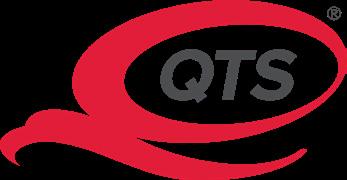
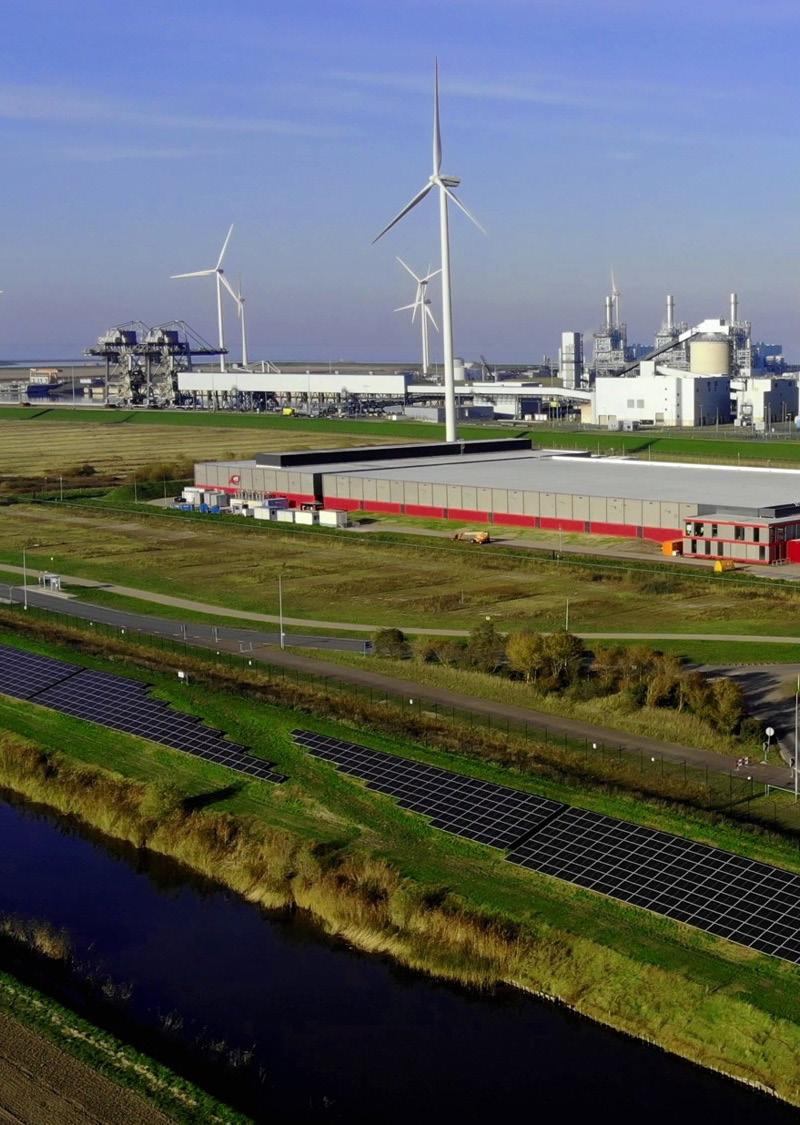
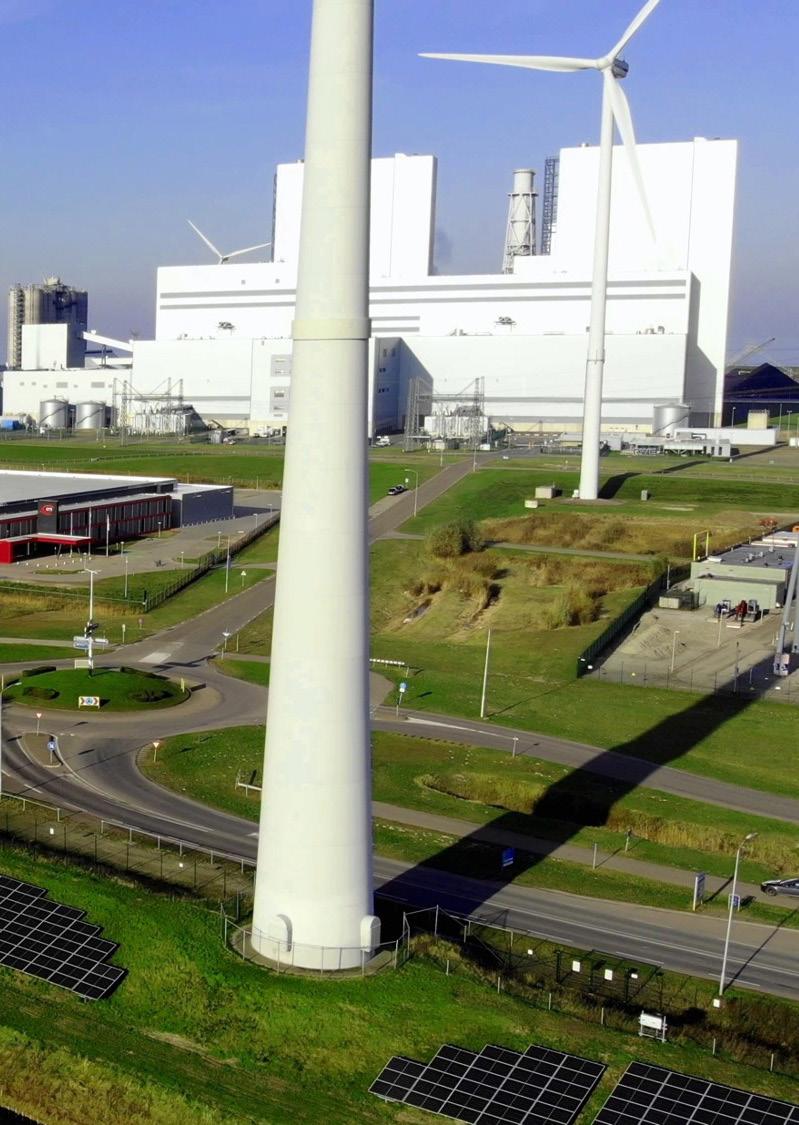
QTS Data Centers – a leading provider of enterprise, hyperscale, and US government data centre solutions – is a pioneer in delivering sustainable IT infrastructure putting its Environmental, Social and Governance (ESG) report and sustainability goals at the heart of everything it does.
Travis Wright, Vice President of Energy and Sustainability at QTS, has been leading the company’s sustainability initiatives since 2018, advocating for greater focus to be placed on carbon-free energy while leading QTS’ philanthropic ventures.
Wright reflects on how data centres can be used as a force for good while highlighting ESG initiatives and goals that set the company apart from others.

Data centres have become an integral part of our lives. These sophisticated buildings full of computers manage the information we all use virtually every minute of the day, (think navigation, voice and video streaming, social media, text, email, etc) and as such they have become massive consumers of energy on behalf of society as a whole.
As an industry, it is essential for data centres to maintain and expand their focus on decarbonising the grid. They have the potential to either positively or negatively impact this goal making it imperative to take responsibility in aiding this endeavour.
873
Number of Employees
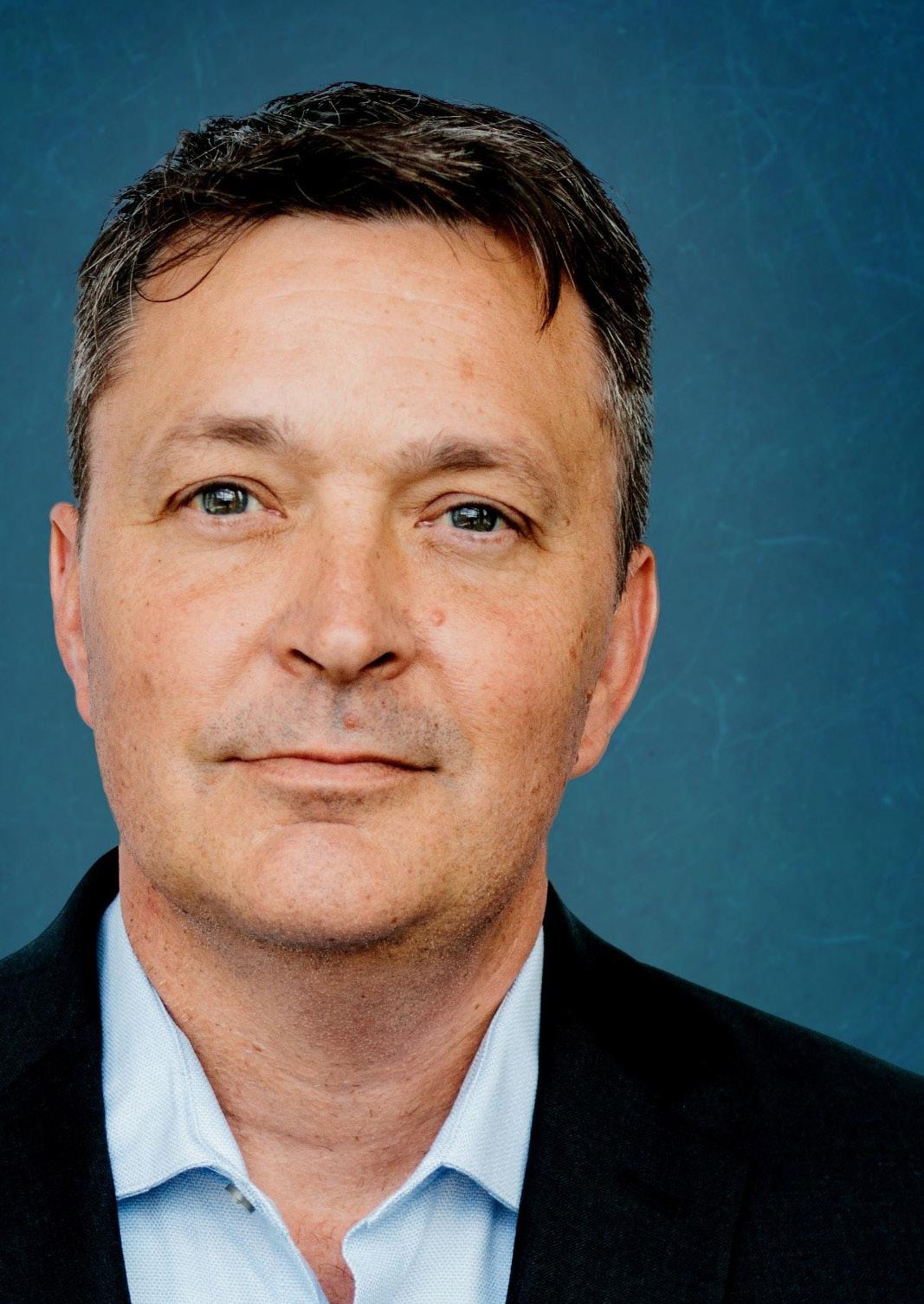
“When QTS decided to take on the challenge of sustainability, we did it with an open mind and the need to provide total transparency and public disclosure for our employees, our customers, and our shareholders,” Wright said.
According to Wright, QTS’ board of directors, led by CEO Chad Williams, was adamant in the belief that it could create value for our investors and benefit society at the same time.

“After a comprehensive vetting process, we determined our core environmental pillars to be energy, water and waste. We formalised key goals including a commitment to procure 100% of our power from renewable sources and we would do it by reducing the amount of utility power and
offsetting it with renewable resources such as solar and wind.”
That commitment has since shifted from pure-play solar and wind renewable to carbon-free which includes nuclear and large-scale hydro. This shift is predicated upon the fact that data centres are becoming so big that they are impacting not only the environment but the stability and resiliency of the utility grid.
“Solar and wind generate electricity in a less predictable way, referred to as intermittent generation. When we go into a new market and introduce a large 200-400-megawatt data centre campus, we are taking flat, predictable baseload energy off the grid. If we then turn around and develop a solar or wind facility to offset
“WE DO A LOT OF PHILANTHROPIC WORK AND VOLUNTEERING, WHILE ALSO ENSURING WE’RE ACCURATE AND TRANSPARENT WITH OUR ACCOUNTING AND BUSINESS PRACTICES”
TRAVIS WRIGHT VICE PRESIDENT OF ENERGY AND SUSTAINABILITY, QTS
the energy used with renewables, we are removing that flat, predictable baseload energy, and replacing it with unpredictable intermittent generation. This causes instability in the grid.
“We need to keep our eye on the ball,” Wright adds, “if the goal is to decarbonise the grid, then we need to do it in a thoughtful way that allows us to serve society without destabilising the grid. Until we solve the storage problem, we need to focus on carbon-free energy that provides baseload energy.

“Carbon-free is the focus, but we still intend to source the maximum amount of renewable power possible. As an industry, this challenge will be made possible once we start to solve storage challenges associated with energy from renewable sources.”

TITLE: VICE PRESIDENT OF ENERGY AND SUSTAINABILITY
Travis Wright is the Vice President of Energy and Sustainability. He pioneered QTS’ environmental and sustainability strategies and has been the driving force behind QTS’ expanding sustainability leadership position. He played a key role in the development of QTS’ Environmental, Sustainability and Governance (ESG) report – one of the first in the data centre industry –that documents QTS’ commitment to procure 100% of its power from carbon free sources.
Under his leadership, QTS has become one of the largest users of green power among all data centre companies and the 13th largest among Top Tech & Telecom companies overall. Travis was instrumental in QTS being awarded the prestigious GRESB benchmark ranking QTS #1 among
A holistic approach to sustainable data centres
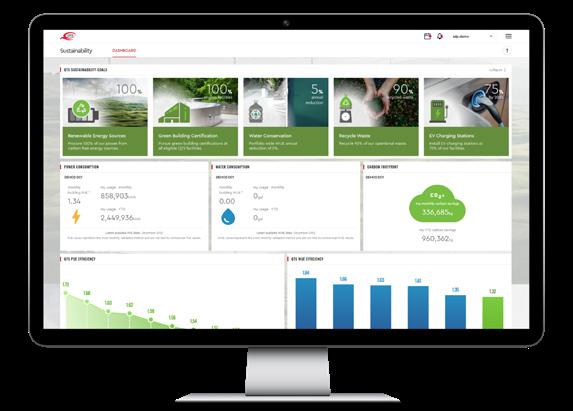
QTS prides itself on approaching sustainability in a holistic way which is demonstrated through QTS’ Freedom standard design and building specification – the basis of all new greenfield builds. This standardised design accelerates rapid deployment of data centre space and aligns with the logistical and sustainability requirements of the world’s most sophisticated companies who benefit from Freedom’s modular approach and

“IT’S LESS TO DO WITH CORPORATE PROFITS AND MORE TO DO WITH GOING OUT INTO THE WORLD AND CREATING GOODS. IN A WAY, WE’RE LEADING THE INDUSTRY DOWN A PATH AND ENCOURAGING OTHERS TO FOLLOW”
TRAVIS WRIGHT VICE PRESIDENT OF ENERGY AND SUSTAINABILITY, QTS
ability to pinpoint and optimise power and cooling to specific spaces.

This includes Water Freedom as a key feature. Water Freedom is the industry’s first true zero-water cooling solution paired with 100% renewable energy making QTS’ data centres some of the most water-efficient data centres in the world.
“Previously, companies could do zerowater cooling systems, but they required a lot more energy,” Wright explained. “This meant there was a trade-off between being either energy-efficient or water-efficient. Water Freedom uses a low-pressure, pumped, refrigerant system that uses outside air economisation to deliver world-class energy efficiency metrics, as well as using minimal water. It’s a game-changer.”
Technology companies are renowned for having aggressive decarbonisation goals and QTS is expected to match their standards in its data centre builds. “Whenever we go into new markets, we strive to achieve what others have never done before,” Wright explains. “It’s all about being good to society and our bottom line at the same time. We want to lead the industry and encourage others to follow.”
Although sustainability means something different to everyone, QTS places great importance on their program being “financially, culturally, and operationally” sustainable, to ensure the company achieves its ESG goals for years to come. As a result, QTS is passionate about creating new initiatives that create value for stakeholders, while also benefiting society at the same time. These initiatives consider QTS’ influence and impact on the environment through energy, water and waste while addressing the company’s relationship with its employees and communities.
The company has also introduced unique “success-based giving programs” based on the amount of energy contracted by each customer.
While attending a sustainability conference in San Francisco, Wright and his team met American Forests – a non-profit conservation organisation, dedicated to protecting and restoring healthy forest ecosystems.
“We loved their mission, but we couldn’t immediately come up with a way a data centre company could work with a tree planting organisation,” Wright explains. “As the team was brainstorming, we came up with the idea of linking the success of QTS to planting trees.”
“We measure our business in energy and we sell based on kilowatts (kW). So, we developed a program that for every 100 kW that a customer signs with us, we would plant one tree per month for the entire life of their contract.
“After doing the calculations, we realised it was a good place to start – but we wanted to do more. So, we decided to go back in time and plant trees for everybody who’s ever signed contracts with us in the past.”
Five minutes into pitching the idea to Chad Williams, QTS’ CEO, the idea was approved, and Williams insisted that Wright and his team launch a similar project with clean water resources in impoverished nations.

“THERE ARE VERY WATERSTRESSED AREAS IN THE WORLD, SO WE DECIDED TO WORK WITH SOME OF OUR BEST SUPPLIERS TO JOINTLY DEVELOP A SUPER-EFFICIENT METHOD OF USING ZEROWATER COOLING SYSTEMS”
TRAVIS WRIGHT VICE PRESIDENT OF ENERGY AND SUSTAINABILITY, QTS
After some research, QTS partnered with World Vision to create a programme that would supply three people with clean water for every 100kW sold. In addition, when a large company signed a 12 MW deal or larger, QTS would build a water well in a community in a developing country, providing thousands of people with access to clean water for decades.

QTS’ third success-based giving programme with the U.S. Dream Academy involves sponsoring children of incarcerated parents in Dream Academy Learning Center programs. Since its inception, QTS has sponsored more than 40 children with great success.
“Not only do these projects have fantastic repercussions globally, but our customers
also appreciate them. These initiatives are so different from what our competitors are doing and our customers are telling us they choose QTS because they’ll be doing good in the world, while also benefiting from highly sustainable data centre and IT infrastructure services.”
QTS’ passion for success-based giving did not go unrecognised. Last year, QTS won the award for Best Initiative for Philanthropy and Corporate Giving based on the programs. Wright says: “Winning this award meant so much to all of us, simply because it shows the positive impact we’re having on the world and demonstrates the importance of being good corporate citizens.”
Other unique QTS sustainability initiatives are taking place in the Netherlands where QTS has data centres in Groningen and Eemshaven. In partnership with WarmteStad, the sustainable utility company for the municipality of Groningen, QTS is the first to supply residual heat for a large-scale sustainable district heating project.
“WarmteStad developed a way to capture the heat generated by data centres and use it to heat homes and buildings in the communities including a university campus situated nearby in the city of Groningen,” Wright said. “The district heating system takes heat directly from the data centre to heat water that is pumped through the existing hot water heating system in the buildings in the community.”
It is estimated that the district heating project will produce sustainable and affordable heat for more than 10,000 households, buildings and knowledge institutions in the northern districts of Groningen by 2026. By heating with water, buildings can operate without a natural
“They’re just going to get bigger,” Wright says. “Now, the world is moving into a new era of technology, with AI and autonomous vehicles at the forefront. There are a lot of things that are now cropping up as being the big drivers of data, and that curve of data usage is just exponentially growing.”
“So we’re getting more efficient in how we build data centres, but ultimately, we’re going to be growing at a rapid rate. We’re going to start seeing gigawatt-sized campuses for data centres in the distant future.”

“Our electricity grid may not be able to support that, so we will probably end up doing on-site preservation. We also may have small-scale nuclear reactors on-site, in the next seven or eight years away in the US – less than that in Europe.”
“I do think the carbon-free resource of generating electricity onsite is the future, which I think it’s pretty exciting.”
gas connection which significantly reduces CO2 emissions and supports Groningen’s environmental goal to be completely CO2 neutral by 2035.
This revolutionary system is much more common in Europe than in the US, mainly because the infrastructure is typically closer together. The Dutch government advocates these systems and therefore incentivises companies, so there is a third party taking the heat from QTS and delivering cold in return. This cold return water allows increased efficiency of the data centre cooling system.
Another creative QTS sustainability initiative addressing energy and water conservation is the North Water initiative. “Until recently, data centres in certain parts of the Netherlands were cooled using valuable clean public drinking water. QTS’ Eemshaven data centre and Google are now using North Water’s sustainable ‘industry water’ to provide energyefficient cooling for data centre servers while freeing up millions of gallons of clean drinking water for the surrounding community,” Wright explained.

In addition, QTS recently launched the data centre industry’s first sustainability dashboard as part of its API-powered Service Delivery Platform. It enables customers to get a real-time view of the environmental impact of their IT infrastructure hosted in the data centre. The dashboard allows customers to see their building-level power usage effectiveness (PUE) and water usage effectiveness (WUE) data, typically difficult to obtain but often required for ESG reporting. Customers gain added insight into their environmental impact with access to data illustrating renewable energy, power and water consumption, carbon footprint and carbon savings.
“All of this gives our customers real-time energy and water use that other companies aren’t providing,” Wright explains. “This allows us to open up the books and to show that we’re being completely transparent. More companies are required to report on their sustainability footprints, so they need our data to ensure they are being completely transparent.”
“SIMILAR TO THE OTHER PROJECTS, EVERY TIME A DEAL IS MADE BETWEEN ONE AND 12KW, WE WILL SPONSOR A CHILD FOR A YEAR. SO FAR, WE’VE SPONSORED OVER 40 CHILDREN”
TRAVIS WRIGHT VICE PRESIDENT OF ENERGY AND SUSTAINABILITY, QTS

 PRODUCED BY: MIKE SADR
PRODUCED BY: MIKE SADR




As technology accelerates at near-exponential rates, invariably bound up with the internet and big data, security considerations explode in accordance with this growth. A very large part of these security concerns is around ‘identity’.
PwC’s recent Global Economic Crime and Fraud Survey found that of 1,296 executives surveyed across 53 countries and regions, 51% of organisations said they had experienced fraud in the previous two years – the highest level in PWC’s 20 years of research.
We interviewed Linda Siegert, the Senior Director of Global Procurement for SailPoint Technologies, to find out how they leverage culture in procurement to influence the future.

SailPoint is the leading provider of identity security for the modern enterprise. They help organisations discover, manage and secure all identities across all environments.
As Senior Director of Global Procurement, Siegert began her career in accounting and quickly found that while she was good at the numbers, she more enjoyed the working relationships and the stories that the numbers could tell. Siegert transitioned into an HR role and then HR leadership, which further solidified how much she enjoyed “empowering people for success”.

 TITLE: SENIOR DIRECTOR OF GLOBAL PROCUREMENT
TITLE: SENIOR DIRECTOR OF GLOBAL PROCUREMENT
INDUSTRY: SOFTWARE DEVELOPMENT
LOCATION: UNITED STATES
SailPoint is a leading provider of identity security for the modern enterprise, empowering organisations worldwide to put identity security at the core of their business. With a foundation of artificial intelligence and machine learning, SailPoint identity security delivers the right access to the right identities and resources at the right time.
Linda Siegert, Senior Director of Global Procurement“Procurement is really the brilliant marriage of the two: the numbers and the people. It enables me to do what I'm passionate about — giving me a unique perspective and approach to our strategic goals.”
“Today, I have the privilege of leading an incredibly talented procurement team with a focus on sustainable strategic procurement that stretches beyond simple spend management, but also includes risk in contractual management, supplier lifecycle management, compliance and audits and sustainability throughout the entire lifecycle. It allows us to be on a continual growth track. The exciting part is the continual maturity road on which I get to lead the team.”
Now at SailPoint, Siegert has set her sights on the intersection between culture, sustainability in procurement activity. These aspects mesh more naturally than one would expect.

“ We don't view the buying landscape as just a numbers game – because numbers are only a part of our overall success”
LINDA SIEGERT SENIOR DIRECTOR OF GLOBAL PROCUREMENT, SAILPOINT
SailPoint's unique procurement philosophy: the four ‘I’s Siegert says that SailPoint sets itself apart in that the company “lives and breathes culture” through the Four ‘I’s of Innovation, Impact, Individuals and Integrity.

Within procurement, these values are cornerstones to every interaction. They inform buying approach and allow the procurement team to look past dollars to drive ROI deeper into the business.
“Our dollars shouldn't just buy things, they should grow things,” Siegert says. “We don't view the buying landscape as just a numbers game - because numbers are only a part of our overall success.
“There really is no single way to solve a problem, and just because it’s worked ten other times already, that doesn't mean it's going to work for an eleventh”
LINDA SIEGERT SENIOR DIRECTOR OF GLOBAL PROCUREMENT, SAILPOINT
“When two companies interact, it's relational, and if we're to achieve long-term strategic success, we can't only focus on the numbers. We need to look deeper, expect higher values from our suppliers, and ensure that our suppliers’ company goals align with SailPoint's goals for spend sustainability.”
SailPoint utilises its core values to maximise the value of its supplier interactions because, says Siegert, “within this structure, success can always be found.”
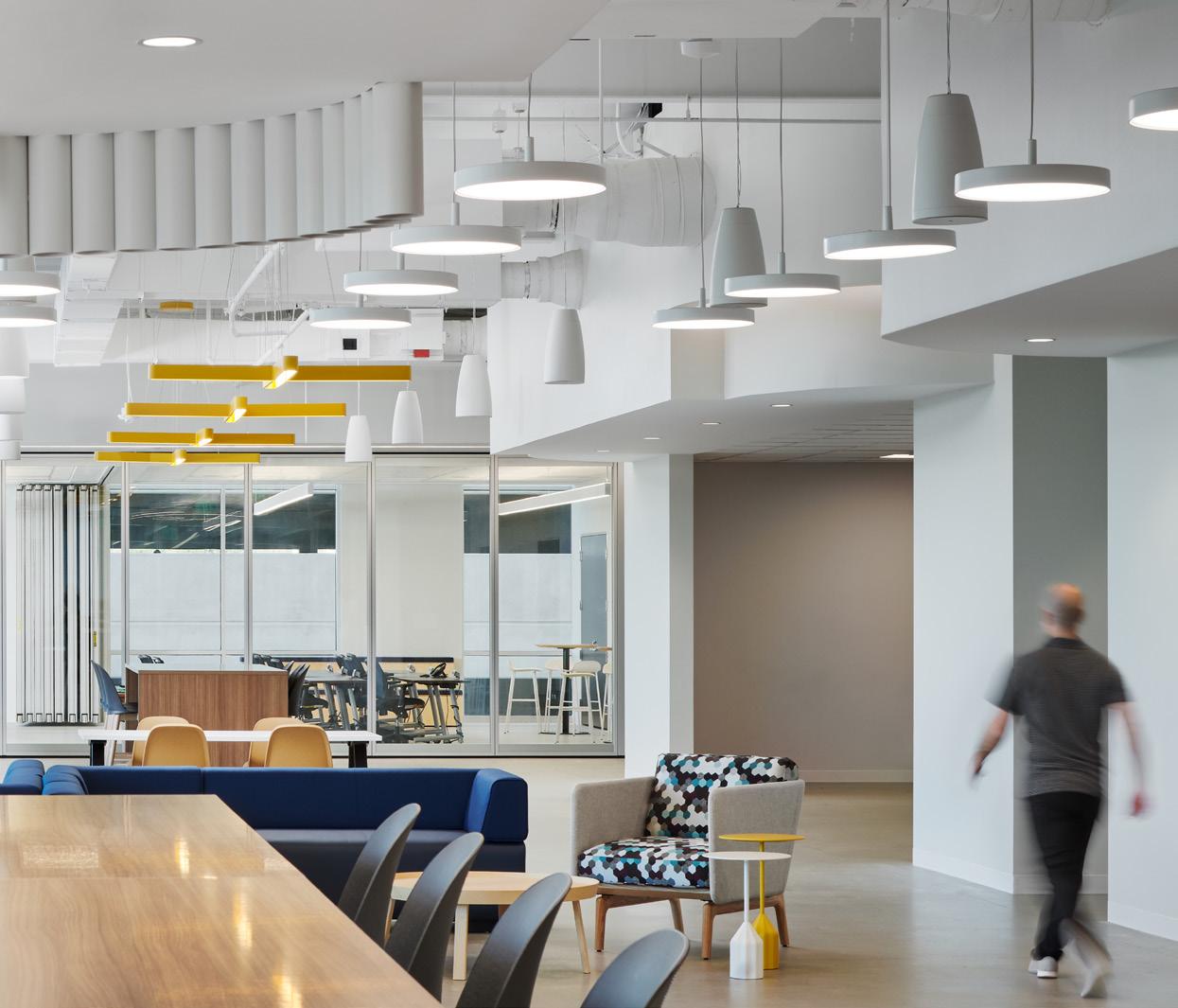
Core message as it relates to procurement Siegert says that what separates SailPoint is its ability to think outside of the box.
“We don't have to think like mainstream procurement,” she says. “Let's think from a human perspective; let's think from a creative perspective and use organisational values to provide a natural foundation for procurement strategic thinking.
“There really is no single way to solve a problem, and just because it's worked ten other times doesn't mean it's going to work for an eleventh. It’s important to always be thinking of a better way to do it. When it comes to our foundational core values for innovation within the procurement team, we're developing real solutions for challenges and solving problems.

“When we engage with suppliers, we are solving a need. Our suppliers and all those we have relationships with understand our challenges. They know there's a bottom-line impact – and they want to make us better. When we combine our knowledge with our suppliers to create a truly successful relationship, both parties win.”
Asked about overarching goals, Siegert says: “Our goal always is impact.” She points out that for SailPoint procurement, success
is based on measurable results, and this takes the form of KPIs, in-depth due diligence and clear standards for excellence and engagement.”
“We value individuals and both the work they do and the roles they serve. We treat people with integrity and deliver on the commitments that we make - and we expect others to deliver on the commitments that they themselves make.”

“We base our relationships on trust and offer honest solutions. We want our suppliers to do the same for us. If there are issues that need to be resolved, we do it with transparency. Achieving and maintaining strong, healthy relationships is foundational.”
Transparent supplier engagements Siegert says that SailPoint procurement approaches its supplier engagements
“When it comes to our foundational core values for innovation within the procurement team, we’re developing real solutions for challenges and solving problems”
LINDA SIEGERT SENIOR DIRECTOR OF GLOBAL PROCUREMENT, SAILPOINT
with transparency and deeply holds company strategy at the forefront of her team’s goals. “We partner closely with our business areas to understand their objectives and walk alongside them as partners so we can help them drive strategy and corporate vision in a sustainable way.

“Culture impacts the dollars we spend. It drives the talent and positioning of the team beyond just a job title. It empowers the procurement team to do what they love and creates healthy partnerships while making a long-term impact,” Siegert says.
“I encourage my team to be relationship driven with a focus on strategic partnerships and lifecycle sustainability. When coupled with spend management, that's impactful for everyone.”
Her team also offers its expertise and innovations to SailPoint’s suppliers. “We're all on an innovation journey and we regularly collaborate with our suppliers to innovate and find new and creative ways of solving SailPoint goals. For us, depth is key,” she says. “We don't want to wade in the pond when we can really swim in the ocean.”
When asked about SailPoint’s procurement partner ecosystem Siegert says that they have a number of really amazing procurement partners and strategic supplier partnerships, and of course, that it's difficult for her to list them all, “but I'll mention a couple of examples from two opposite sides of business support,” she says.
“Since we are a global company and we're providing support in all areas, we hold events all over the world. We wouldn't be able to robustly serve the business without the partnership of companies like Prestige Global Meeting Source (Prestige), who support us globally through sourcing our


company event locations with their intimate knowledge of the global meeting and event landscape.
“Prestige just outshines any other company I've worked with in this area. They are strategic, hands-on, and truly a genuine pleasure to work with. Prestige emulates our core values, placing our success as their top goal.
“On the operational side of the business, we partner with companies like ServiceNow who have a passion for innovation and value the individuals they work with inside of our company. This is highly important for us, as we provide for employee self-service and operational efficiencies at an enterprise level.”

SailPoint’s procurement focus is on managing the current market and the fluctuations that we're all continuing to see – while better positioning the company over the next three to five years.
“We're doing that by continuing to drive depth within the company through our supplier and business stakeholder relationships. We work smart, which means we're always innovating and optimising how the procurement team works, interacts and how we accomplish our goals.
“We don't ever settle for, 'it's working today, so why fix it?' We are always looking for ways to work smarter and automate activities that don't bring long-term value.”
“My team is strategic in nature, so eliminating transactional churn really allows me to focus their talents on the procurement activities that matter and provides SailPoint with the most impact.”

 WRITTEN BY: ALEX CLERE
WRITTEN BY: ALEX CLERE
 PRODUCED BY: JACK MITCHELL
PRODUCED BY: JACK MITCHELL
Chris Moore, Head of the Apollo ibott 1971 syndicate, is possibly an anomaly within the world of insurance. Few kids dream of growing up into a life of underwriting, but Moore says he knew he wanted to get into insurance since going off to university.
“I studied mathematics at Bath University,” he tells us. “A lot of people talk about falling into insurance or just somehow ending up in insurance; I may be one of those that actually wanted to be in insurance. That's something I'm quite proud of.”
After graduating from university, Moore pursued a career as a broker in London, spending two years at Catlin before joining Apollo a decade ago. It’s no surprise that he has stayed: the company sits at the vanguard of new technologies, creating insurance solutions for emerging businesses that will be household names in a few years’ time.

“I love insurance,” Moore effuses. “We should be advertising the amazing things about the insurance industry and trying to recruit the freshest talent from university.”
One of Apollo ibott 1971’s biggest areas of focus is autonomous vehicles (AVs). Certainly, it has the potential to increase convenience for consumers and unlock new opportunities for mobility in our daily lives. But AV technology also has the potential to reshape the insurance industry, and insurers must hop on board early to ensure they’re fully prepared.
With autonomous vehicles set to disrupt the future of mobility, Apollo ibott 1971’s Chris Moore talks about the implications for the insurance industry

Moore believes that mistrust in autonomous vehicles is often misplaced, especially given most people are happy to fly in a plane or travel on a ferry while it’s in autopilot mode. “We trust autonomy in so many areas of our lives, including aviation and marine, but as soon as you start talking about autonomous vehicles people recoil,” he says.
In part, this is informed by distant memories of sci-fi catastrophe movies. It’s also a result of headline reporting, where a single AV crash will make front-page news but a million safe AV rides will not. “I would

absolutely get into an autonomous vehicle,” Moore says. “I might even feel a lot safer in it.”
According to McKinsey, autonomous driving could create revenues of US$300-400bn by 2035. Most new cars already feature some sort of autonomous technology, allowing drivers to maintain a constant speed or helping to switch between lanes, usually on highway or motorway networks. In future, this technology will enable

complete automation of vehicles – starting with industrial applications like agricultural vehicles and culminating in a full robotaxi experience that could make inter-city travel more comfortable and affordable – something that Chris Moore believes is the toughest mountain to climb for AV technology, not least because autonomous systems still struggle to predict irrational human behaviour, particularly in a lowspeed, urban setting.
“I think the size of the opportunity is huge, both in the AV industry itself but also in terms of the insurance opportunity that's
TITLE: HEAD OF APOLLO IBOTT 1971
INDUSTRY: INSURANCE

LOCATION: UNITED KINGDOM
Chris has been with Apollo since 2013 and was instrumental in the setup of ibott. With over a decade of experience with casualty and innovation, which he has a passion for, Chris believes in insurance products being an enabler for new progressive business models such as the sharing economy. He is FCII and CRIS qualified, as well as sitting on the Lloyd’s innovation panel and the Lloyd’s Market Association Committee for both US and International Casualty.

linked to that. When you think about the amount of disruption that autonomy can cause to almost all industries, it's really staggering.”
Broader adoption of AV technology will really depend on regulatory approval. There are already autonomous rideshare pilots happening in multiple US states, chief amongst which are probably California, Arizona, Florida and Nevada. The usual first-movers will predictably emerge, keen to attract inward investment, but while regulators remain to be convinced about issues such as safety and scalability, there are things that insurers can do today – such as prepare their businesses to analyse and price AV risk – that will set them up for an autonomous future.


Edge Case Insurance is proud to be exploring a partnership with Apollo ibott to provide risk-informed underwriting and insurance that supports safer AVs for everyone.
Learn more

Failing to do so could have dire business consequences. Insurers risk angering and alienating OEMs if they fail to recognise the potential around AV, provoking them into offering their own in-house insurance products in much the same way that Elon Musk has done at Tesla. After all, autonomous driving will only be a $300400m opportunity if insurers position themselves to take advantage of it.

AV technology will make our roads safer Summarising the nature of the opportunity that exists around autonomous vehicles, Moore believes it will take the worst elements of human behaviour – the fact that we are prone to error, are not very good at concentrating over long distances, and tend to panic in high-pressure situations such as near-crashes or losses of control – and replace it with the best attributes of automation. This will mean that, potentially, autonomous vehicles become safer than human-driven cars.
How much safer? In the US, data from the National Highway Traffic Safety Administration (NHTSA) showed that human drivers are involved in a fatal collision 1.33 times every 100m miles travelled – that’s a 0.00000133% probability of fatality, or
CHRIS MOORE HEAD OF APOLLO IBOTT 1971
“A lot of people talk about falling into insurance or just somehow ending up in insurance; I may be one of the few that actually wanted to be in insurance”
conversely, a 99.99999867% safety rate. Autonomous vehicles will have to be better than that to be accepted as a ‘safer’ technology – but thanks to advances in artificial intelligence and machine learning, that’s plausible.

“It’s clear that autonomous vehicles lead to a huge reduction in the frequency of loss and the frequency of accidents, which is something we can all be supportive of,” Moore says. “You will also see a reduction in the severity of injury. Autonomous vehicles will react quicker; they have quicker braking times and quicker response times so, if an accident cannot be avoided, you'd like to think that collision would be at a lower speed.”
Despite the road safety improvements, that won’t necessarily mean that insurers are better protected against claims. In fact, the severity of insurance loss could be a lot higher. This is because – in the same way that only AV crashes, and not successful AV journeys, make the headlines – the rare occasion when AV technology still causes injury or death will be highly exposed to so-called ‘nuclear verdicts’, where the AV operator is taken to court and sympathetic jurors award damages in excess of $10m. It often falls on the operator’s insurer to cover those damages. Take an already precarious situation when it comes to nuclear verdicts, and add in the supposition that these technologies are safe to use, and it becomes clear why this problem will only get worse in future.
Chris Moore says: “It will be a lot harder to defend autonomous vehicle claims because of that big nuclear verdict approach that plaintiffs might take. Where a standard human fleet operation might only buy $5m or $10m of auto liability in the United States, I think you'll probably see autonomous
vehicles companies buy multiples of that in terms of limits of liability. It's our obligation as insurance partners to really make sure we are very proactive on the claims and defence work that we do with our clients to stop that becoming prevalent, and stop that becoming part of the industry.”

One of the issues that could burn insurers is the lack of historical data. Today, insurers have 50 or 60 years’ worth of reliable data behind them to help understand auto insurance risk – but with autonomous vehicles being an entirely new technology, will they struggle to understand the level of risk they’re underwriting? Not necessarily, Moore explains, because many AVs will be so connected that insurers can benefit from real-time driving data.
It will be a change that forces the insurance industry into a complete overhaul. The average American driver spends just 55 minutes a day behind the wheel – that’s about 96% of the time that your car is parked in your garage or on your driveway. As new business models emerge from the AV revolution – including autonomous rideshares, car subscription services and flexible rentals – drivers will question the need to even ‘own’ a car at all.
“I think all insurance ultimately will shift from personal lines to commercial lines. The future of insurance is always going to be B2B”
CHRIS MOORE HEAD OF APOLLO IBOTT 1971
This will ultimately benefit the consumer. After all, ‘driving’ – or, to express it more accurately, being driven – will remain accessible but could become more affordable, especially if you’re only paying for what you use. But it will lead to a transformational shift within the auto industry. In the long term, ownership will transition away from consumers and into the hands of OEMs or leasing companies, who will offer autonomous vehicles to the public according to the extent of demand. This could be on a daily, hourly, or even mile-by-mile basis.
In turn, it will shift the insurance relationship from a largely B2C transaction into one that primarily exists as B2C. “I think all insurance ultimately will shift from personal lines to commercial lines,” Moore says. “The future of insurance is always going to be B2B.” He likens it to sharing economies such as Uber or Airbnb. They have embraced embedded finance and will embrace embedded insurance, too; if consumers had to arrange insurance separately when using these platforms, they would simply not bother using them at all.
Because of this shift, the rise of automated vehicles will also force insurers to be much more transparent about their pricing. “I think insurers need to remove this mystical curtain that we've sat behind. When a large commercial entity gets a quote, the insurer hides behind this curtain and then comes back with a price. They never tell you what that price is driven by.
“Now, we're in this digital environment where our biggest customers have arguably as much data as we do about what their risk looks like. Businesses are very educated buyers.

“I think that's where insurers need to be a lot more transparent to explain how they’re looking at risk and what’s driving
the price. And if an insurer’s assumptions are conservative, they might need to reduce that price over time. In that respect, you create this relationship that's far more fluid. Rather than insurers just ingesting data and spitting out a price, it becomes a two-way process.”
When it comes to automation, one of the oft-raised debates is about the continuing role of human labour. Will we all still have jobs when automation becomes ubiquitous, or will we need some sort of universal
payments to help those displaced by robots?
The most measured response usually involves humans and robots coexisting peacefully together in the same labour market. There is room for both. Indeed, Chris Moore says that there will still be a place for lorry drivers, for example, even if long-distance haulage is automated.
In the aforementioned examples of aviation and marine, there are still pilots monitoring the autopilot and conducting takeoffs and landings manually; a cruise ship or ferry can navigate huge swathes of ocean under automation, but it’s still brought into
dock by a combination of the vessel’s own captain and a local pilot who knows the idiosyncrasies of each port. There will be a continued interplay between automation and human supervision.
“As autonomous technology grows and becomes more robust, you'll probably need less human interaction. But that human interaction will take different forms,” Moore says. “People think there's going to be a mass layoff of people because you don't need drivers anymore. You still need these employees. It will just be a different type of job.


“There’s been plenty of studies into the impact of automation on human labour. A lot of it isn’t as impactful as you think”
CHRIS MOORE HEAD OF APOLLO IBOTT 1971
“There's been plenty of studies into the impact of automation on human labour. A lot of it isn't as impactful as you think. It's transferring that job so that, instead of sitting behind the wheel of a vehicle – which means you're away from your family quite often – now you’re going to be in a maintenance workshop because these vehicles have a different type of utilisation and they get used much more.
“Autonomous vehicles can drive throughout the day, throughout the night. There's no limitations on the times they can be driven, because that's stipulated by humans and how long they can keep their attention span."
Moore continues: “Instead, humans are working on maintenance or working in a control centre to make sure the vehicles operate smoothly – and what a much nicer form of employment that is.”
One of the ways that Apollo ibott 1971 is preparing for an automated future is through its partnership with US-based risk management research company Edge Case. “They are an autonomous vehicle-focused MGA,” Moore explains. “What they're trying to do is bridge the gap between the huge amounts of technical expertise and engineering that sits within the autonomous vehicle companies, and then the expertise that exists in the insurance world that is trying to build these insurance solutions.
“Bridging that gap helps build trust and makes sure that any insurance solutions are fit for purpose. Bringing that engineering capability or insight into insurers is hugely powerful to make sure that we build the right products, and we're pricing those products in the right way that's sustainable and reflective of the risk. They're a partner that's really important in bringing this future solution together.”
Looking ahead towards the future of autonomous driving, Moore continues:
“I think in the next five years, we’ll see rapid expansion of use cases around autonomy in lots of different circles – whether that's agriculture, trucking and long-haul driving, industrial manufacturing, or construction. I think all of those industries will see much more autonomy.
“From an insurance perspective, we will see those autonomous vehicle providers embedding insurance within their product, because it will take too long for traditional insurance companies that are currently insuring those verticals to build products that adequately cover autonomous-type operations. That'll be a huge market shift. Some people will say ‘I don’t write motor insurance, so why should I care about autonomous vehicles?’ However, I think it disrupts every insurance vertical that we have today. Autonomy will be just another insurance vertical, because it needs a brand new insurance solution.
“And then, for Apollo, we believe we are a relative first-mover in this space, but we are also very aware that collaboration is key in order to provide capacity for this huge autonomous opportunity. What we want to do is strategically partner with other insurers on providing large chunks of capacity on a wording that is fit for purpose, on a pricing basis that is reflective of the risk at hand. We're speaking to many insurers today – and whether we build that under consortiums, reinsurance agreements or however else, it's all about creating a partnership model that will deliver an insurance product for a much-needed industry as we want it to grow and flourish.”


